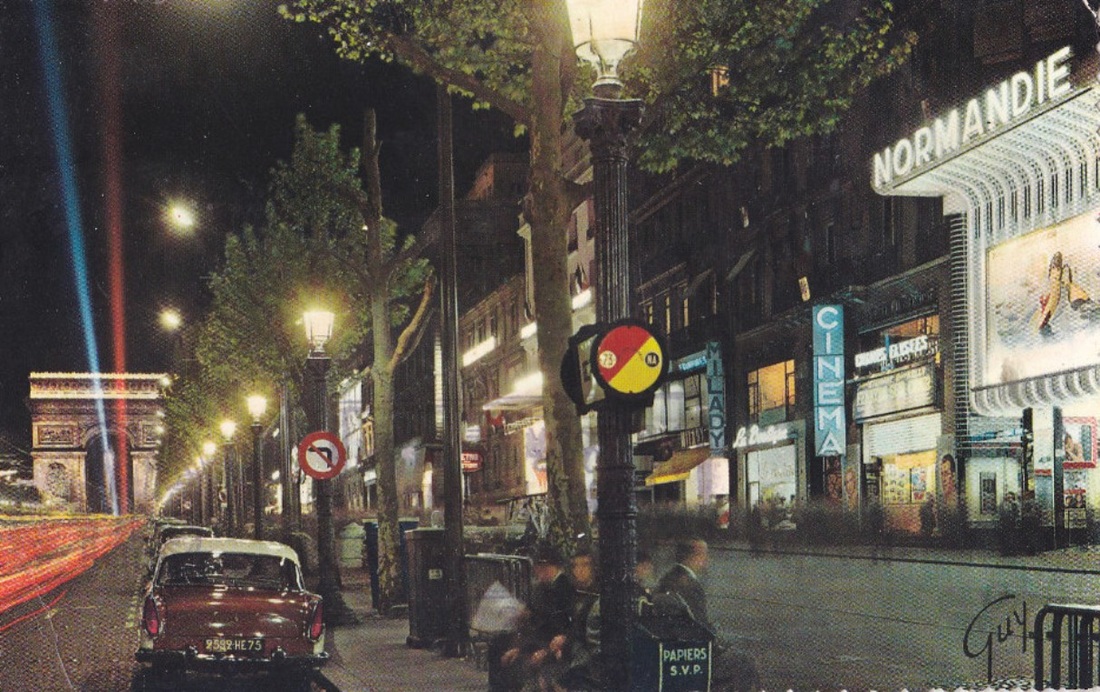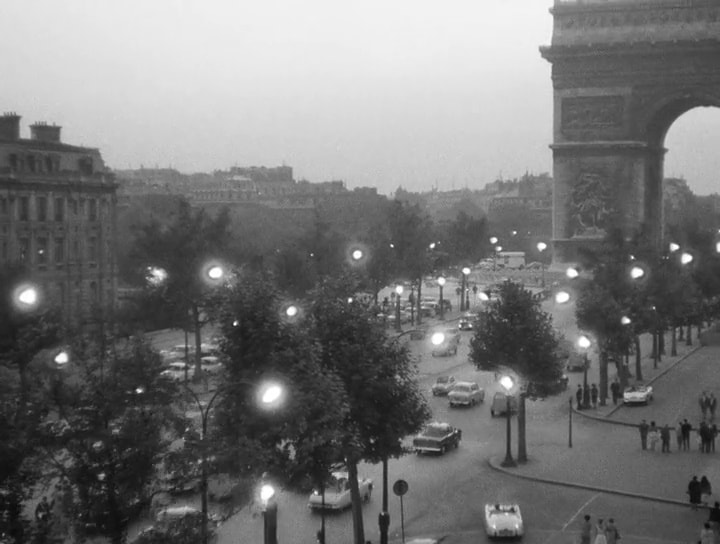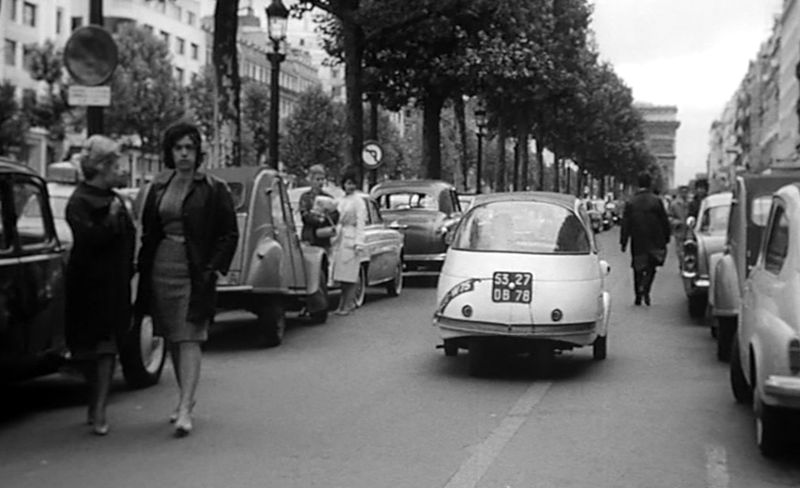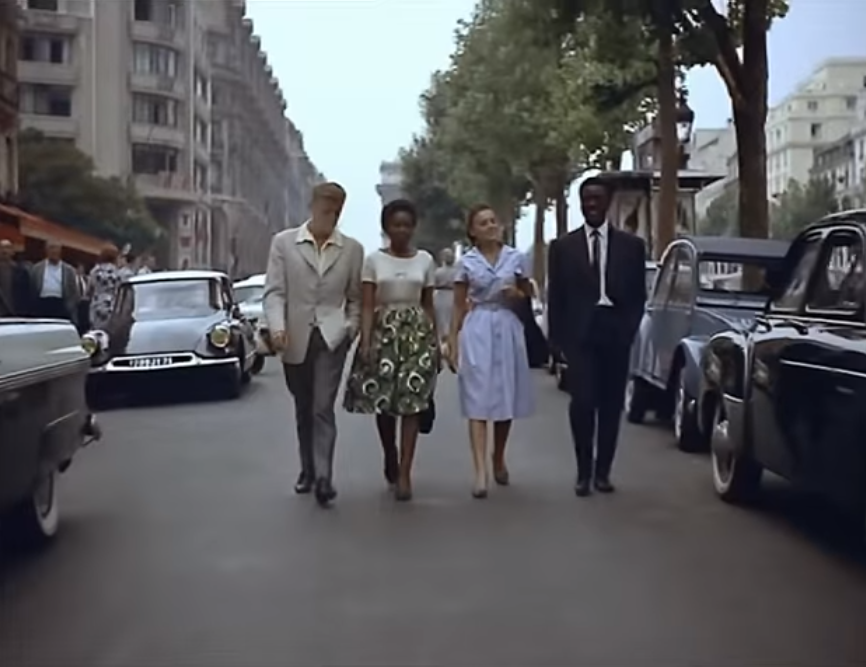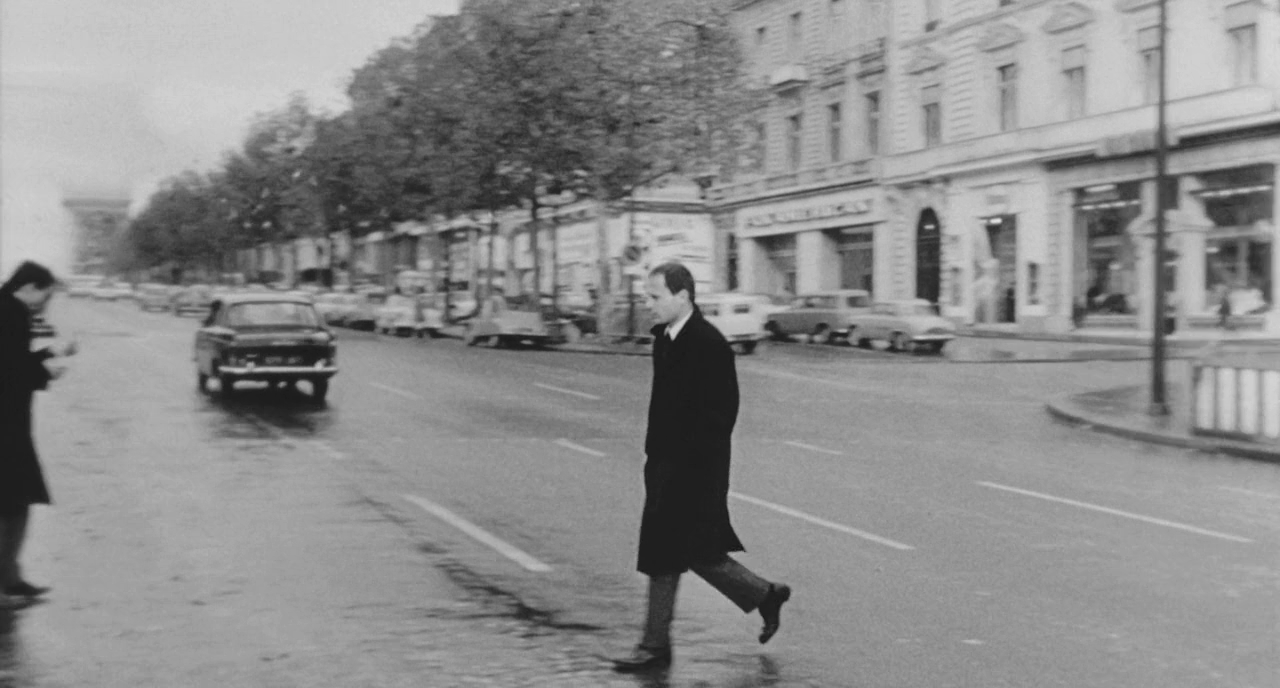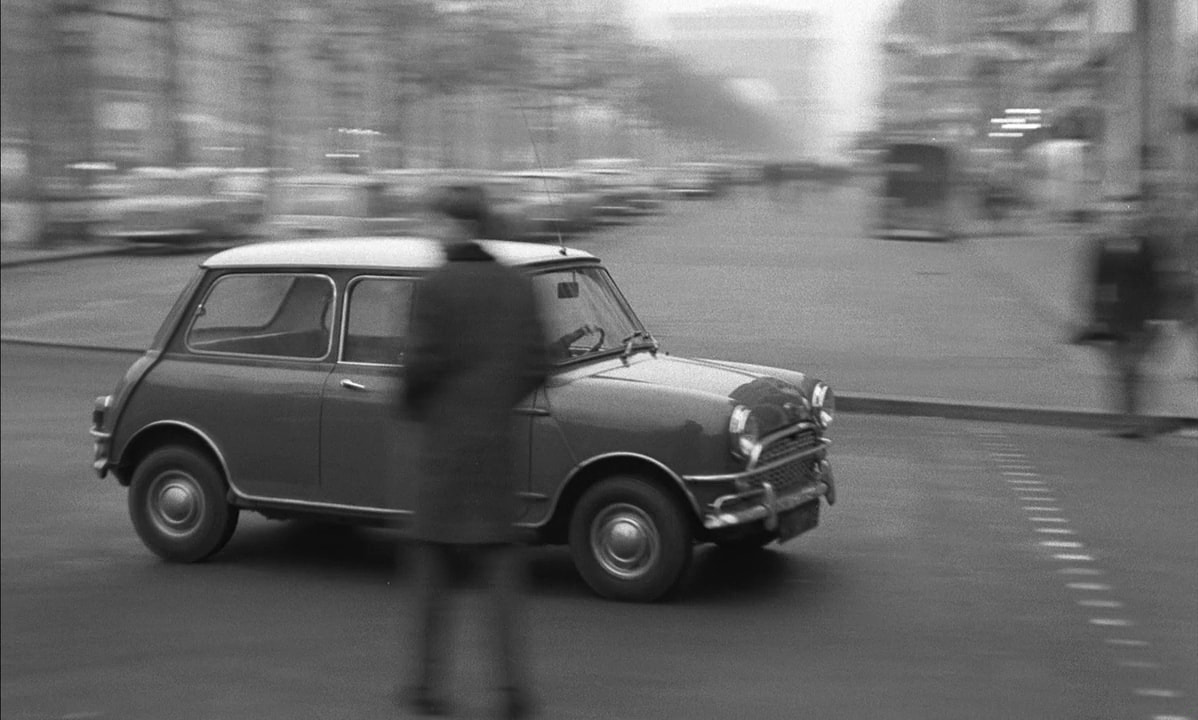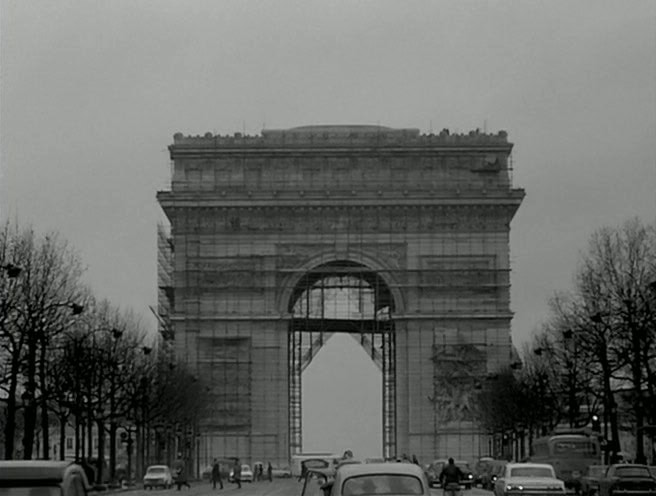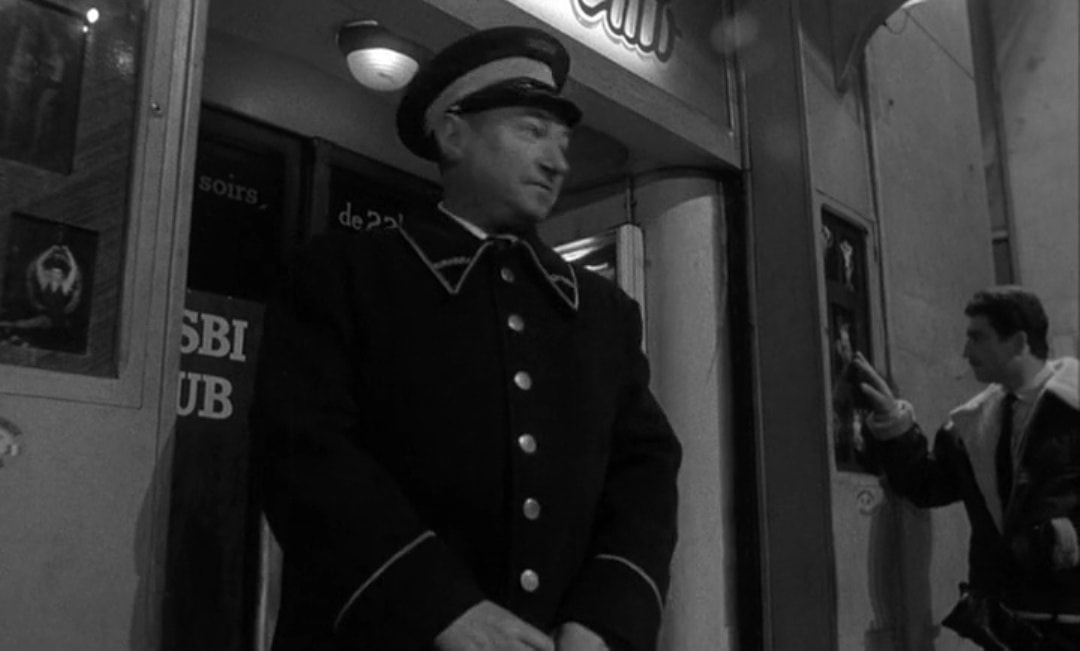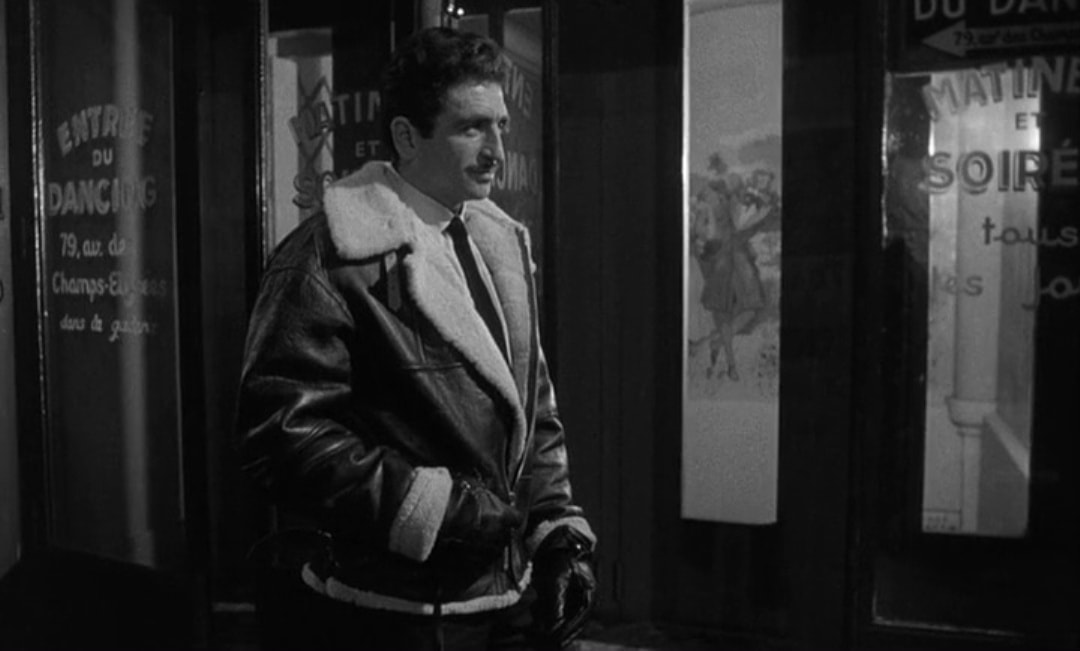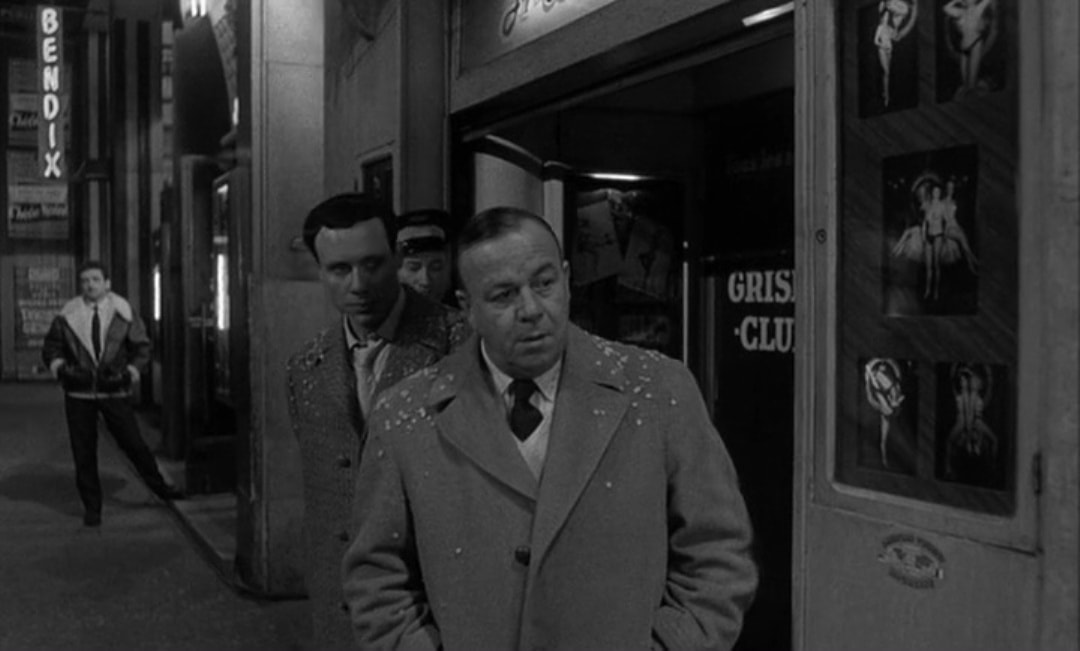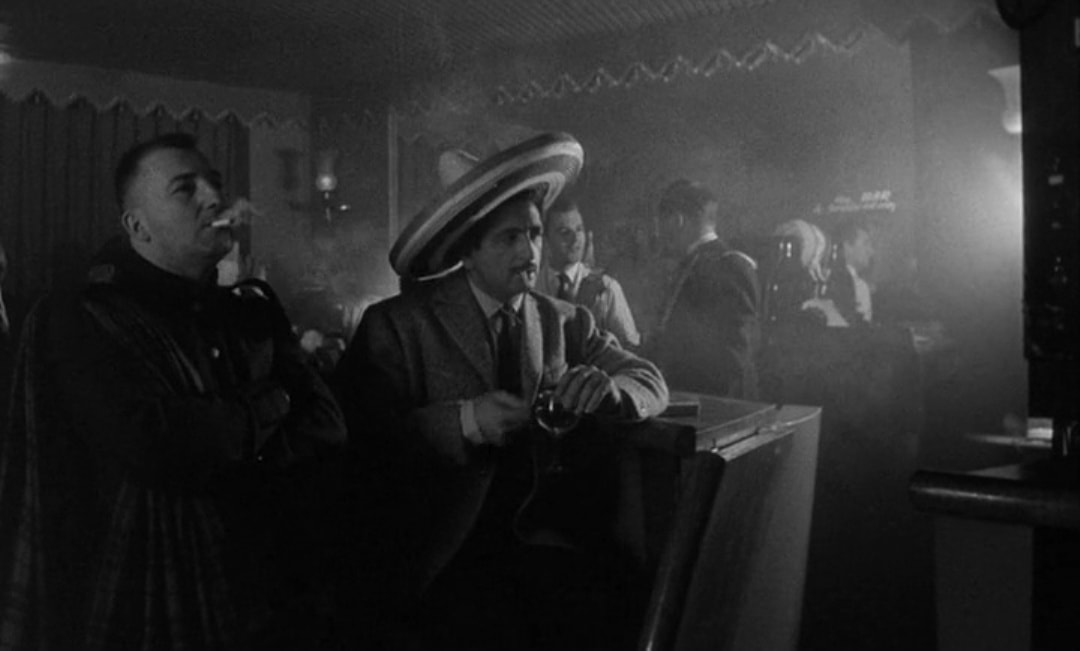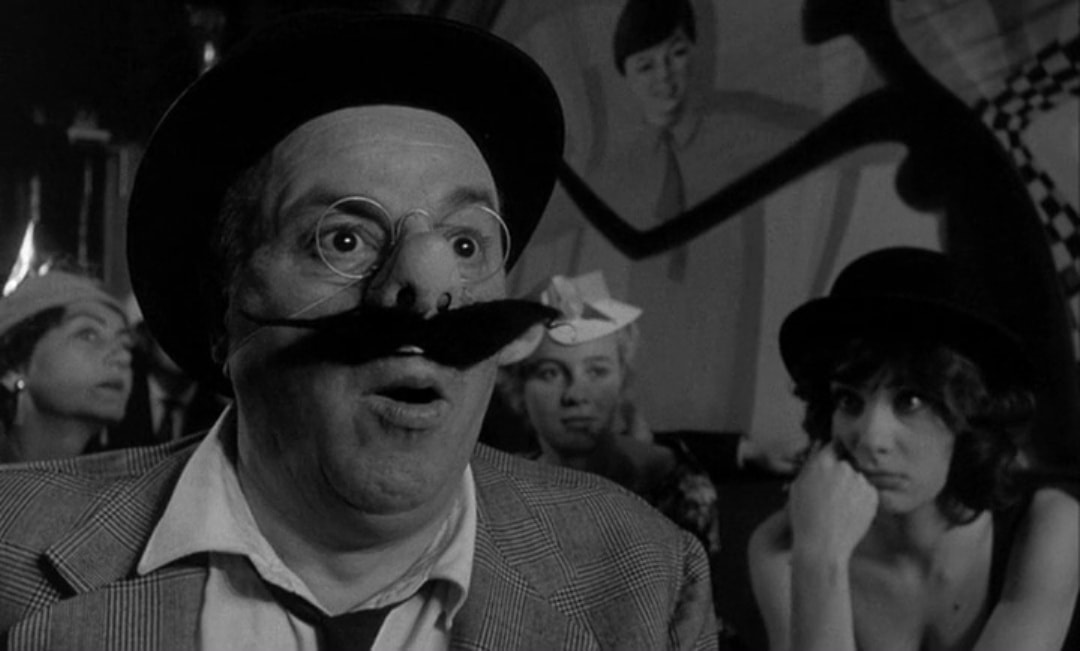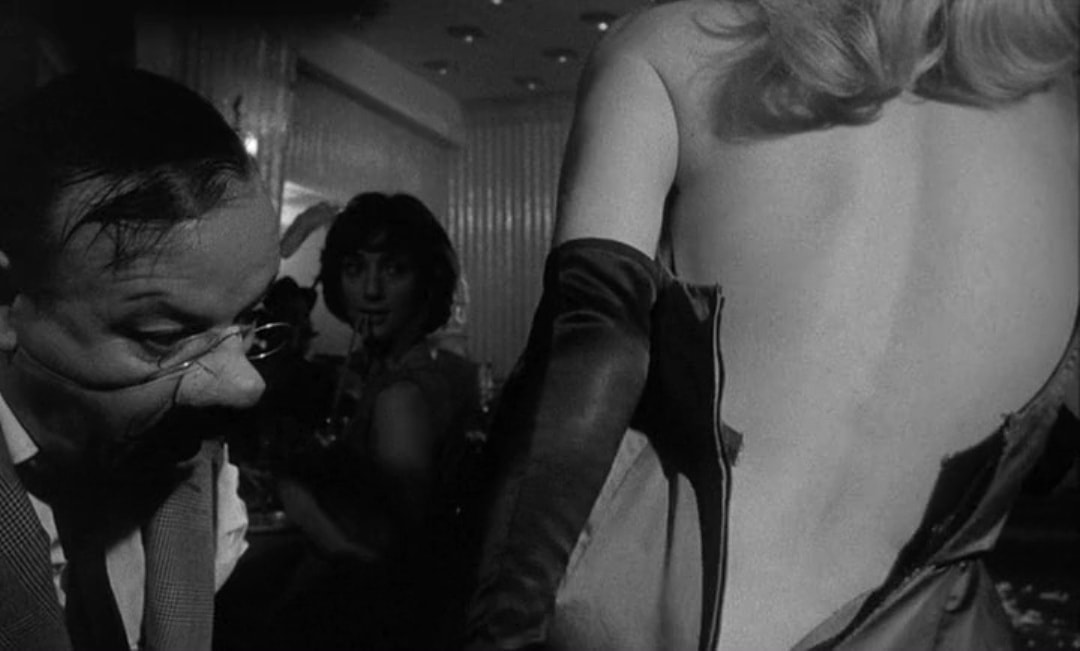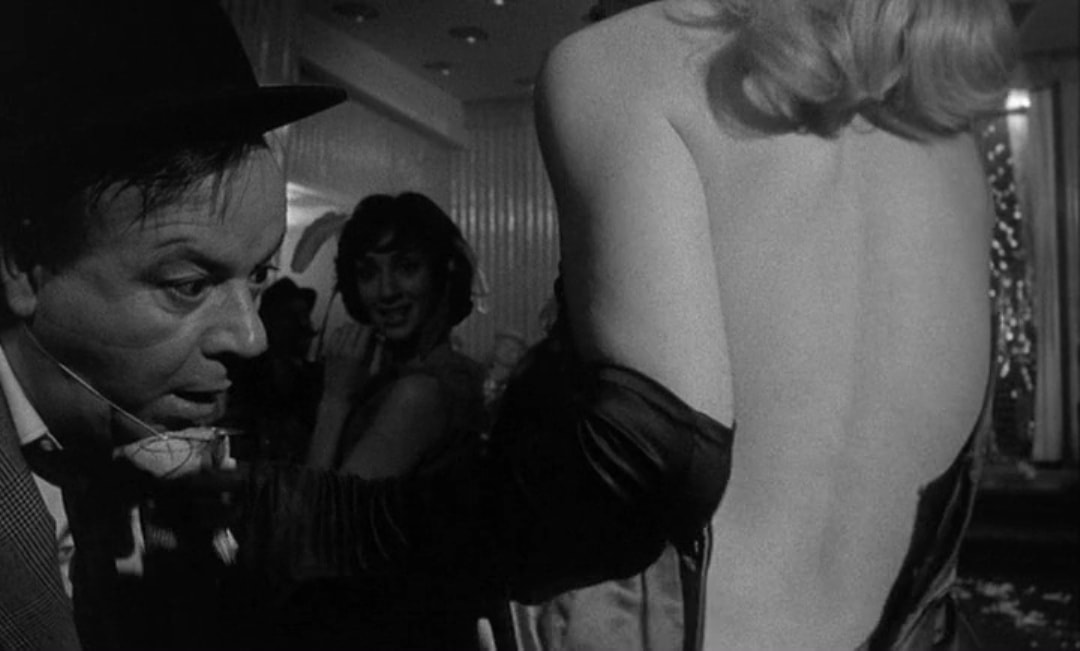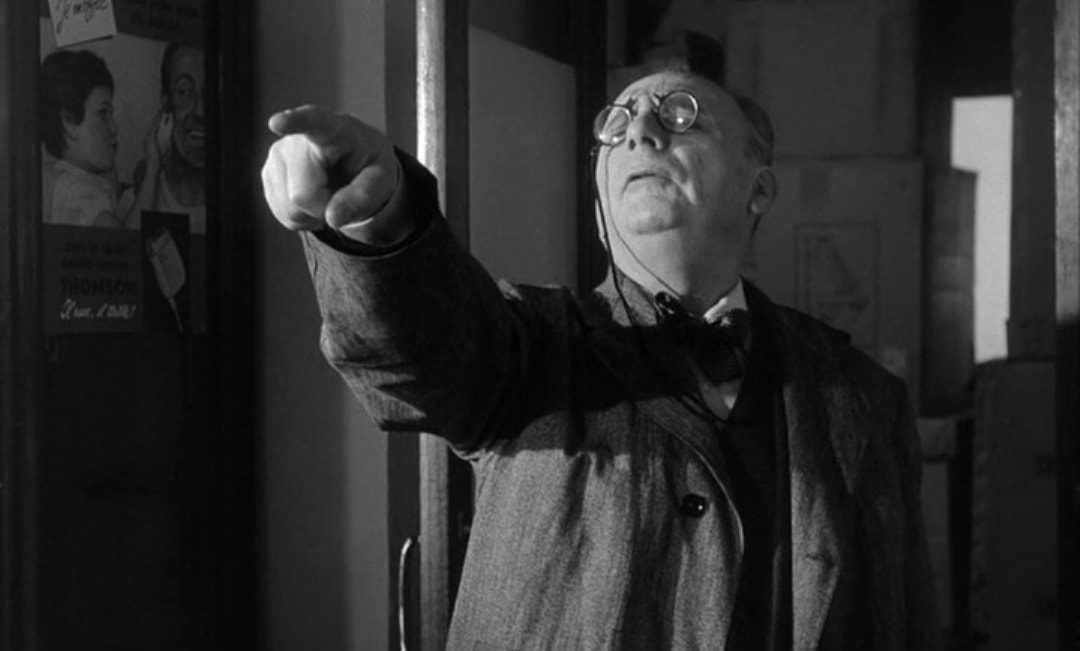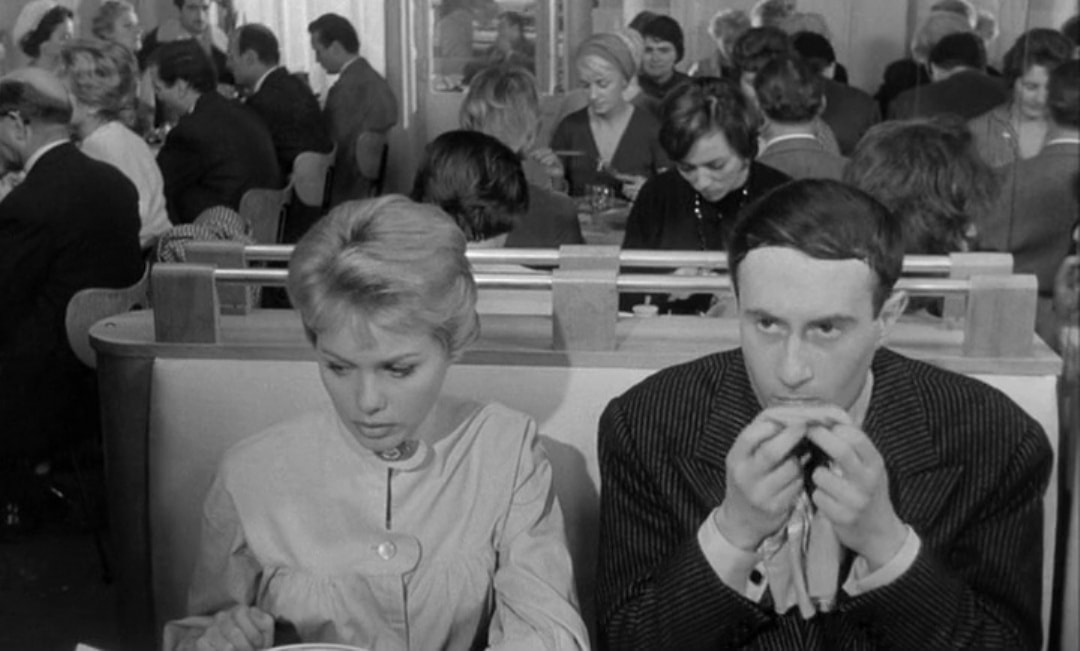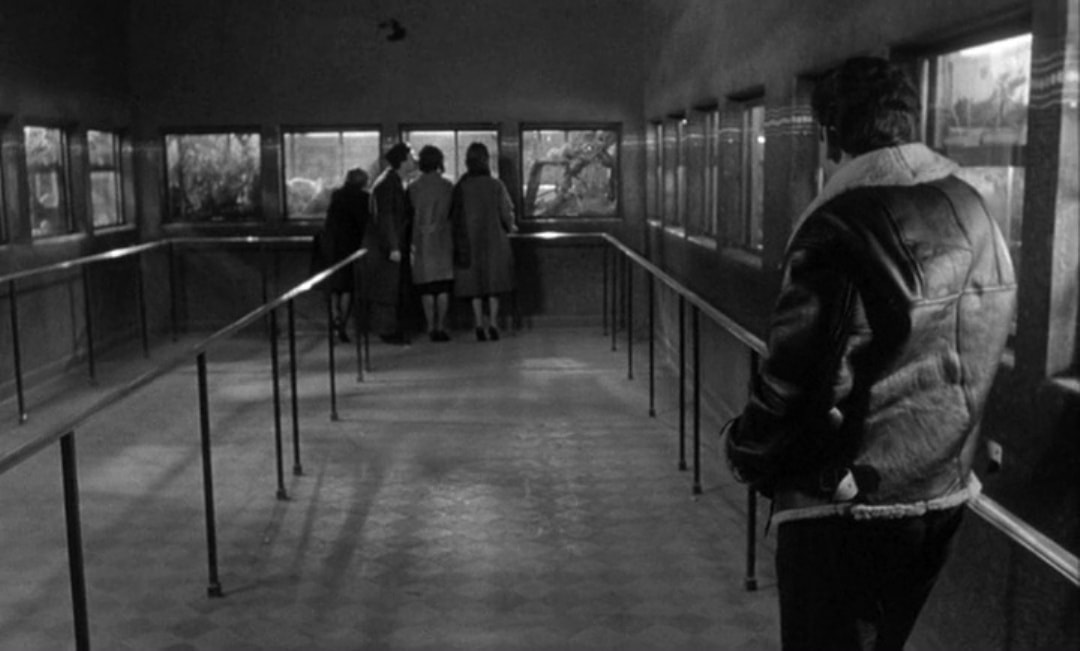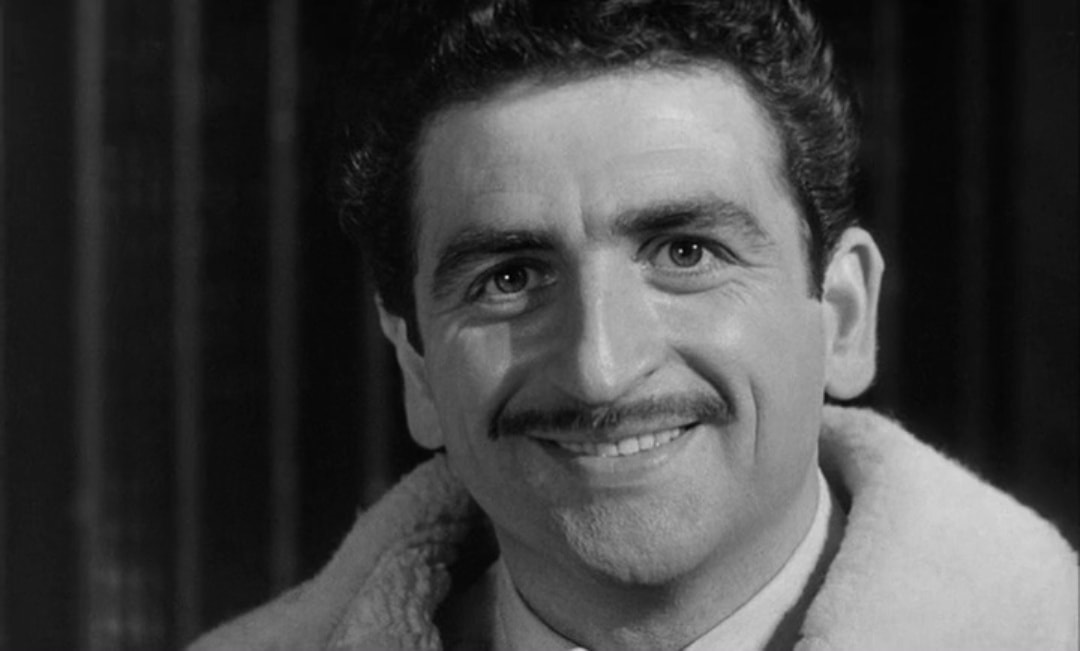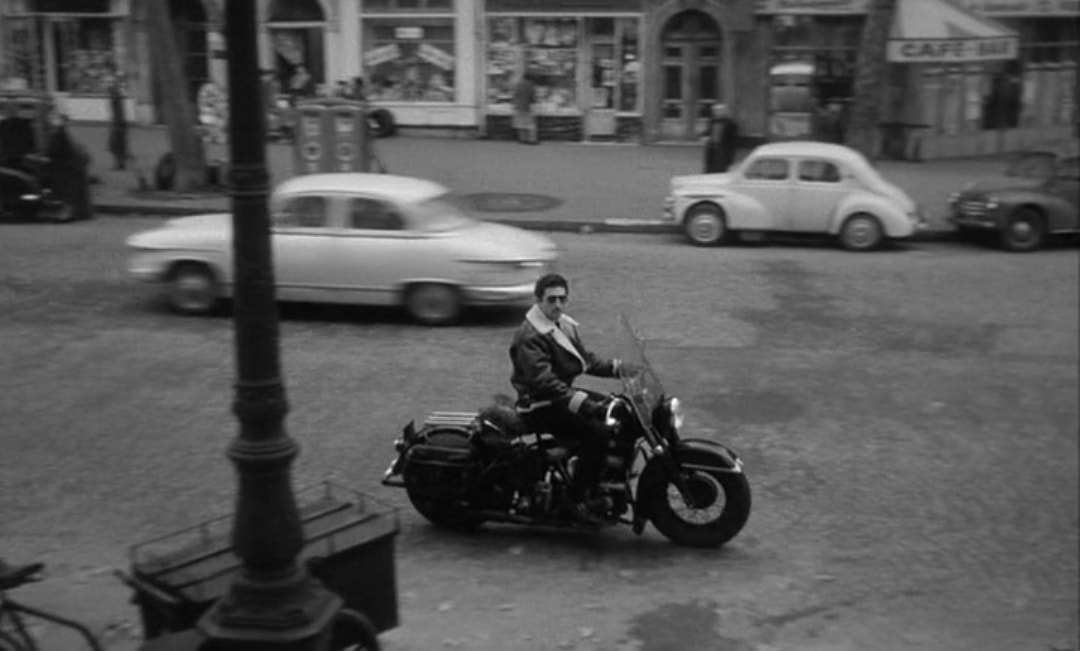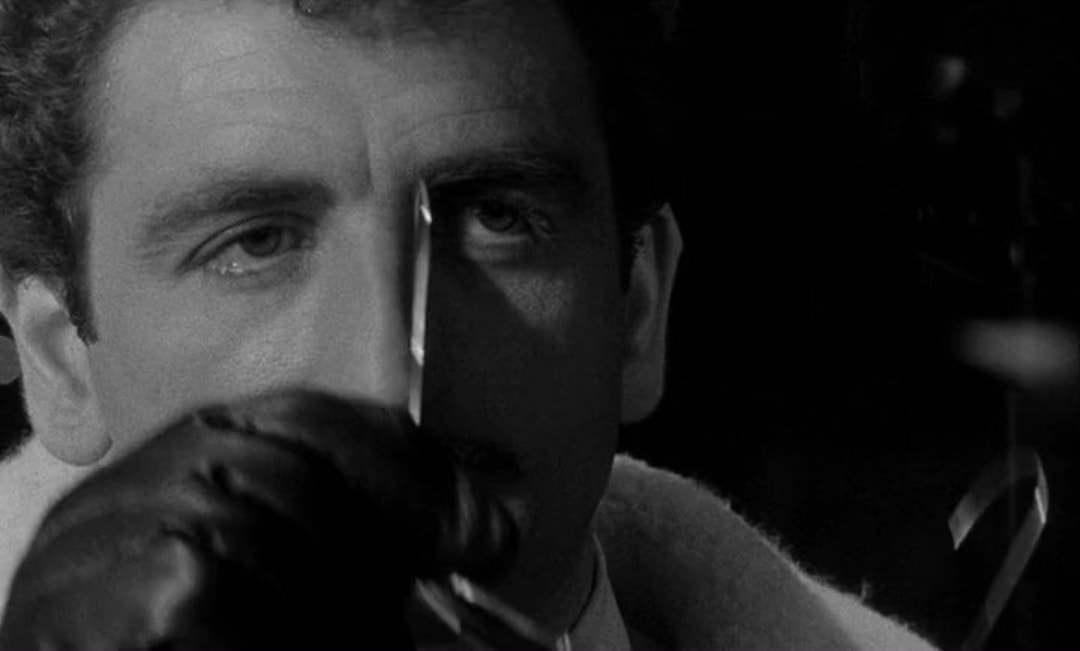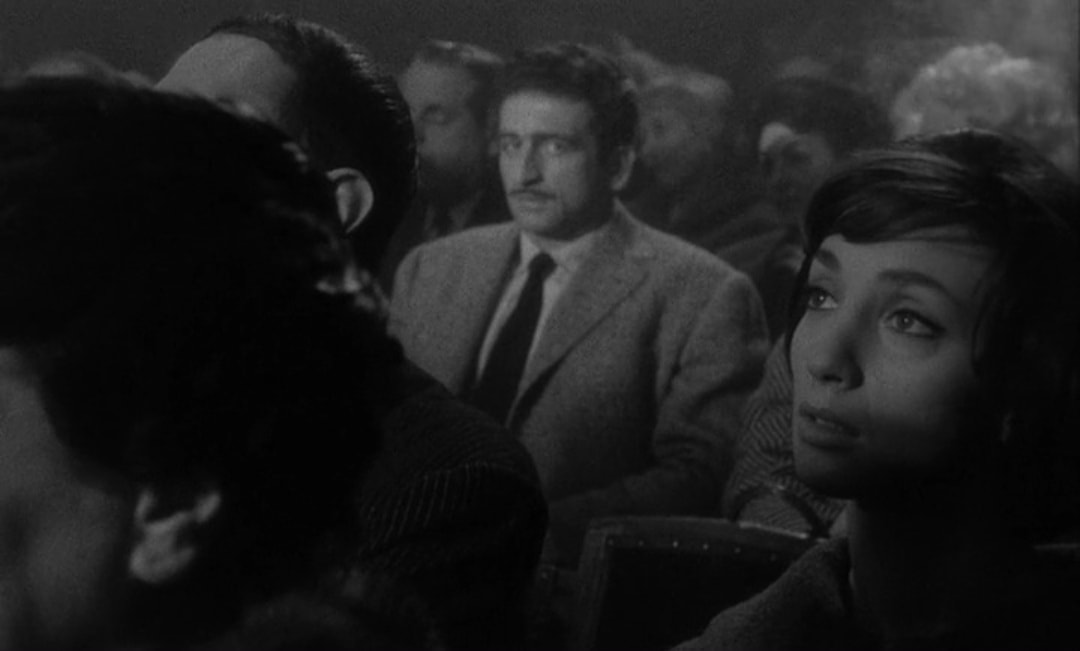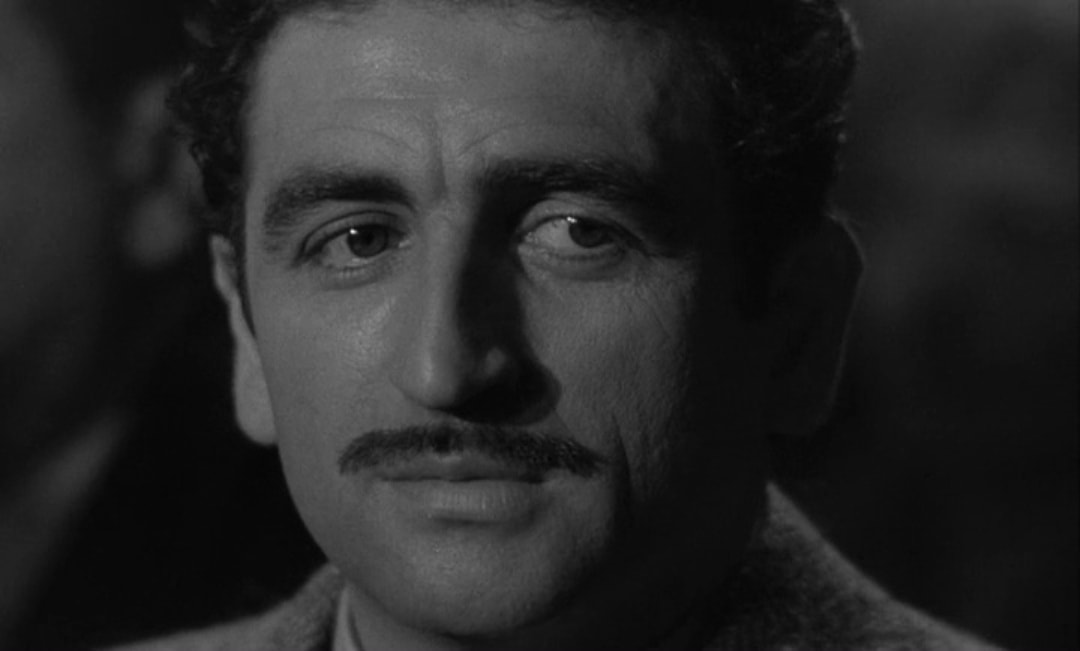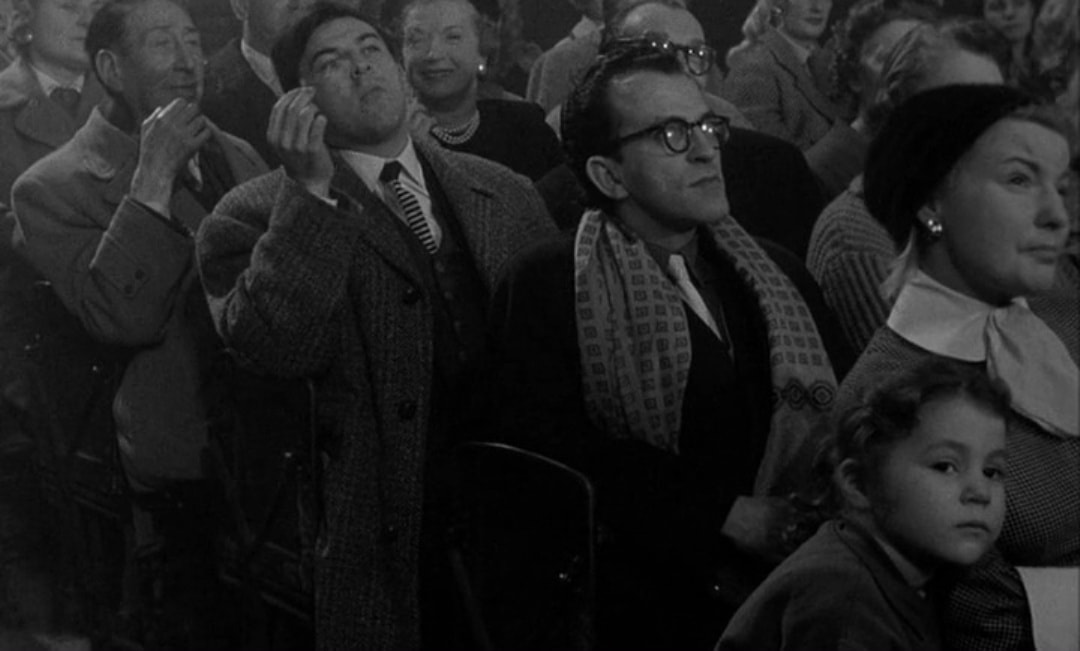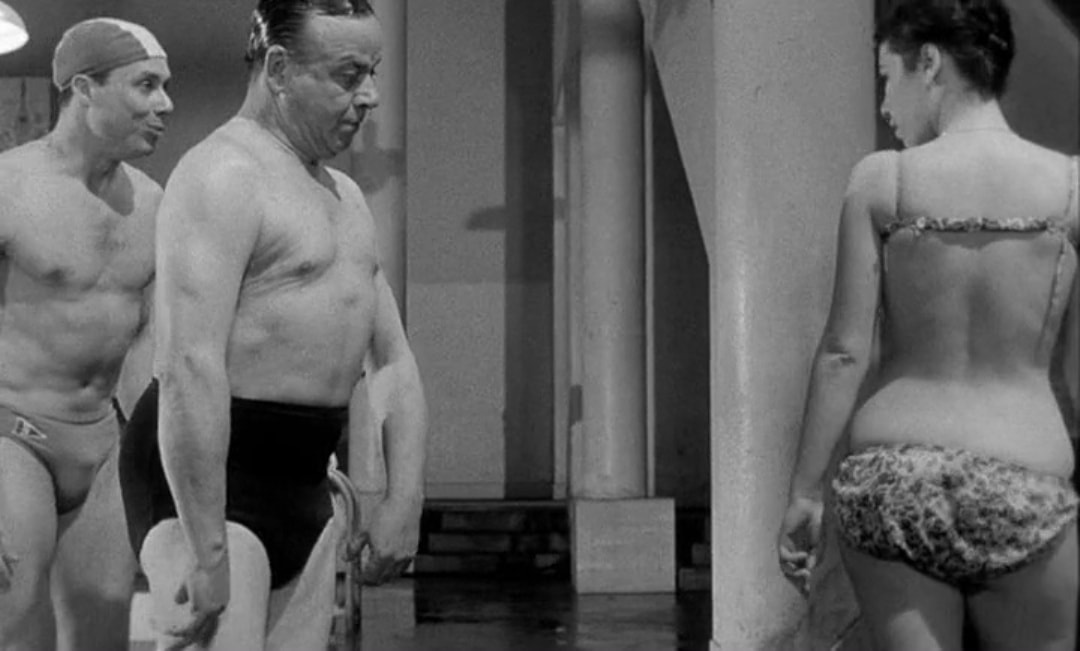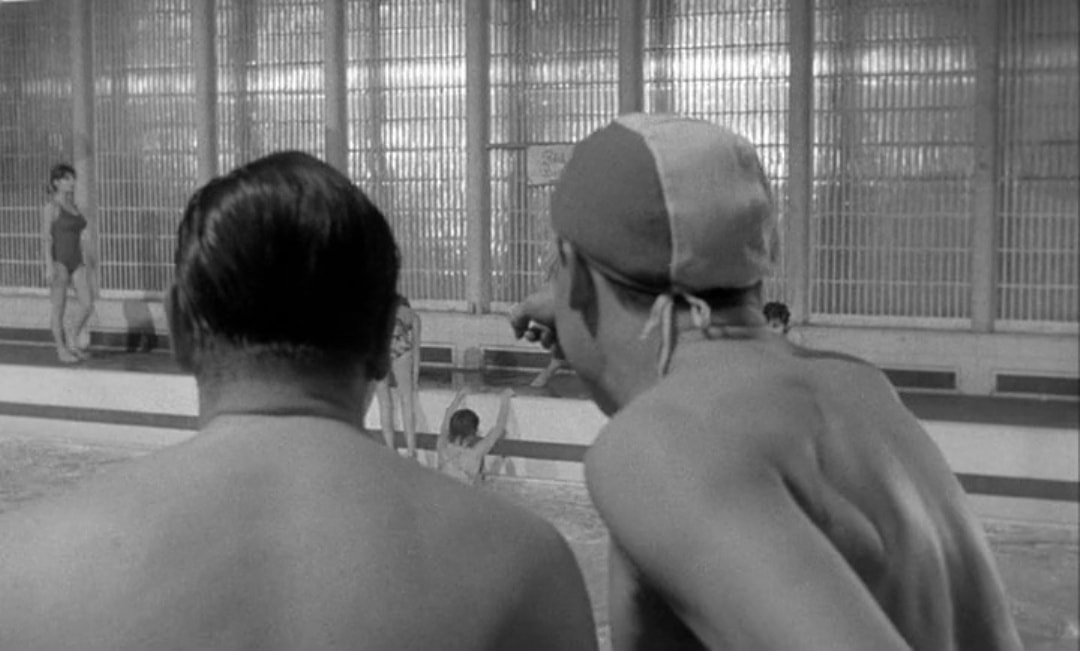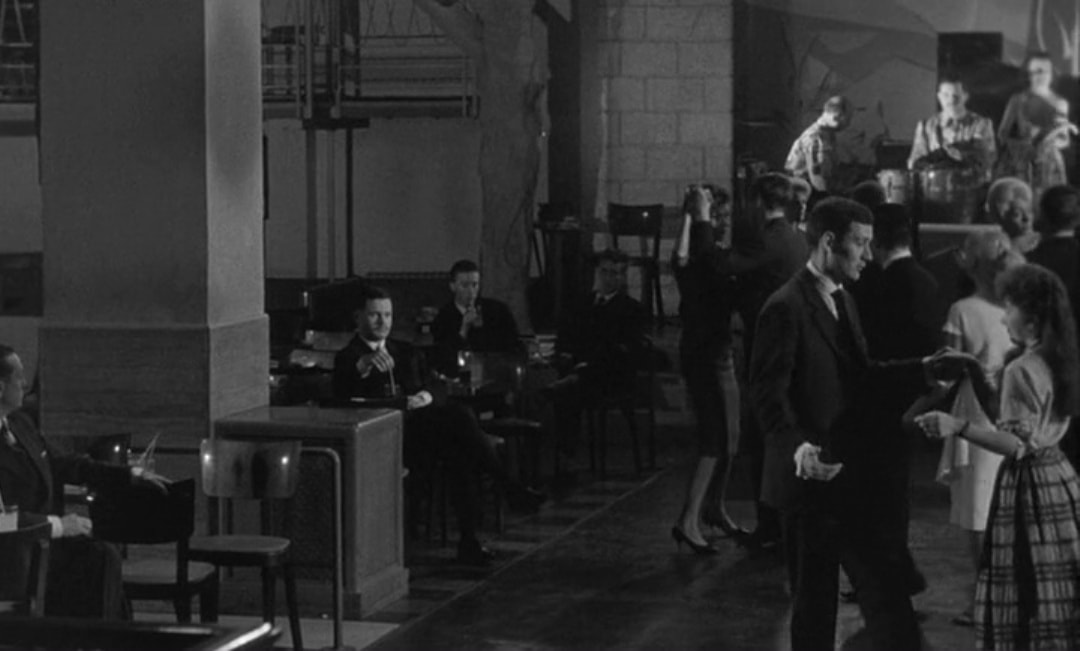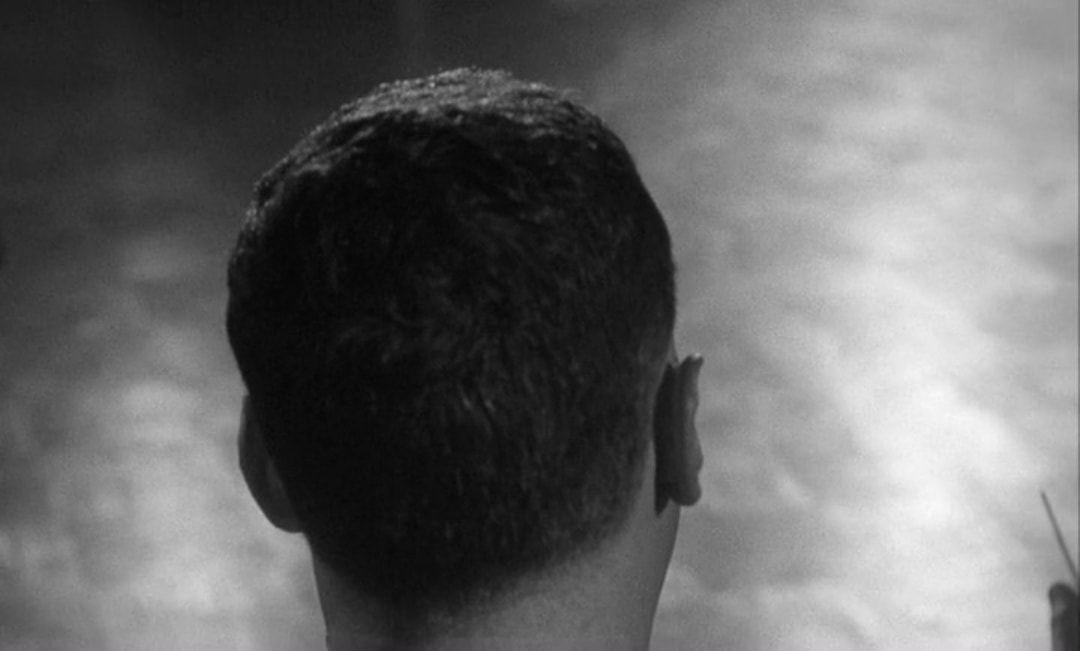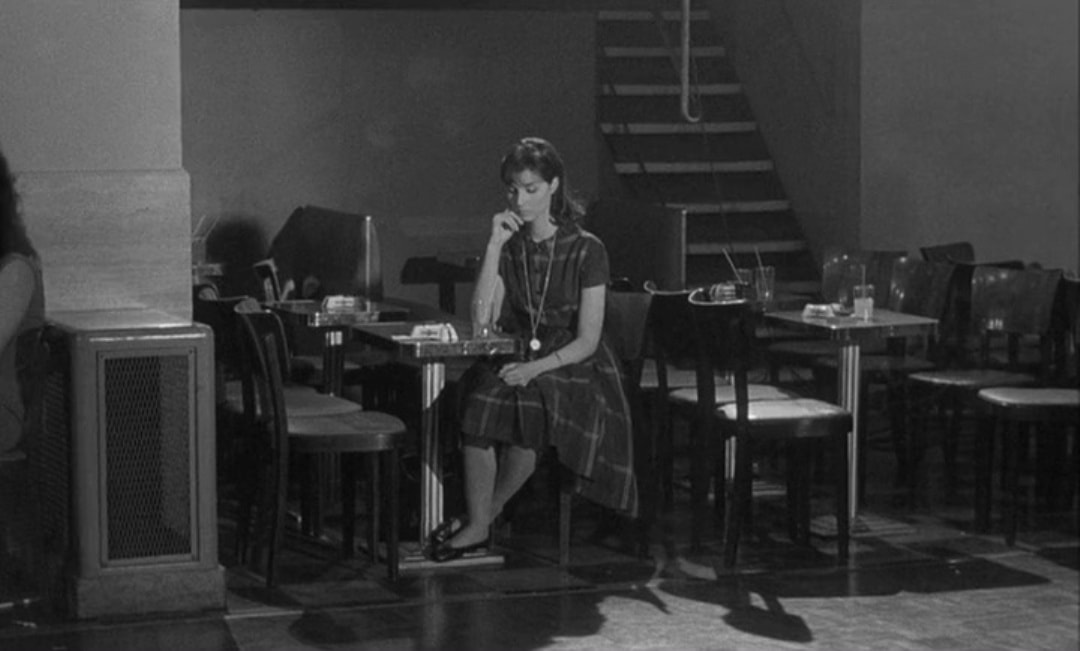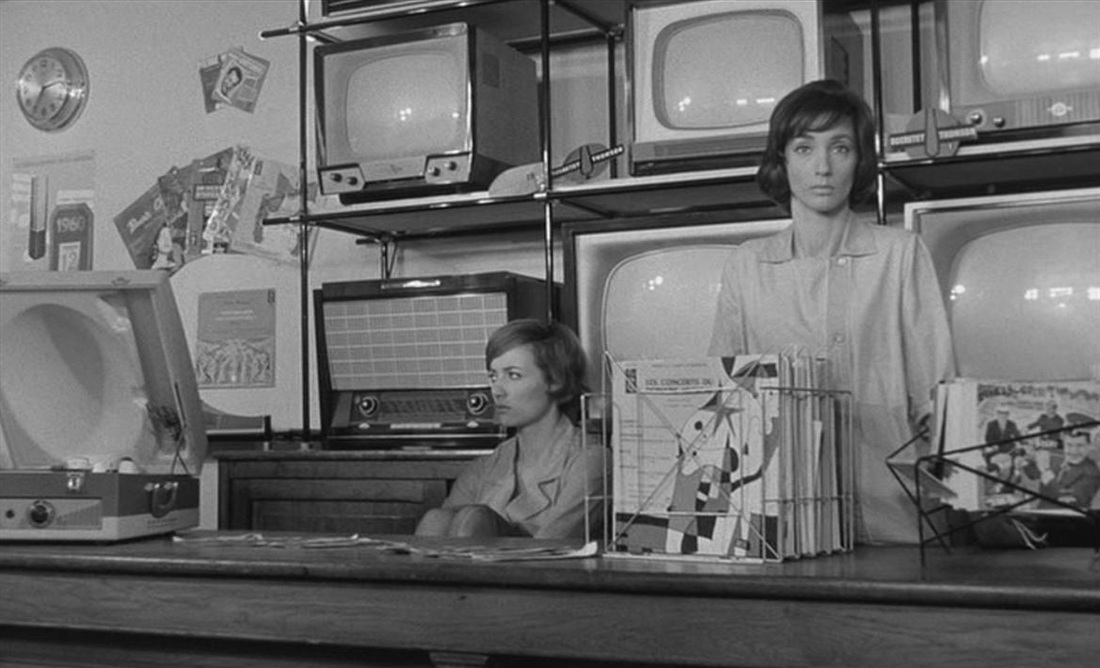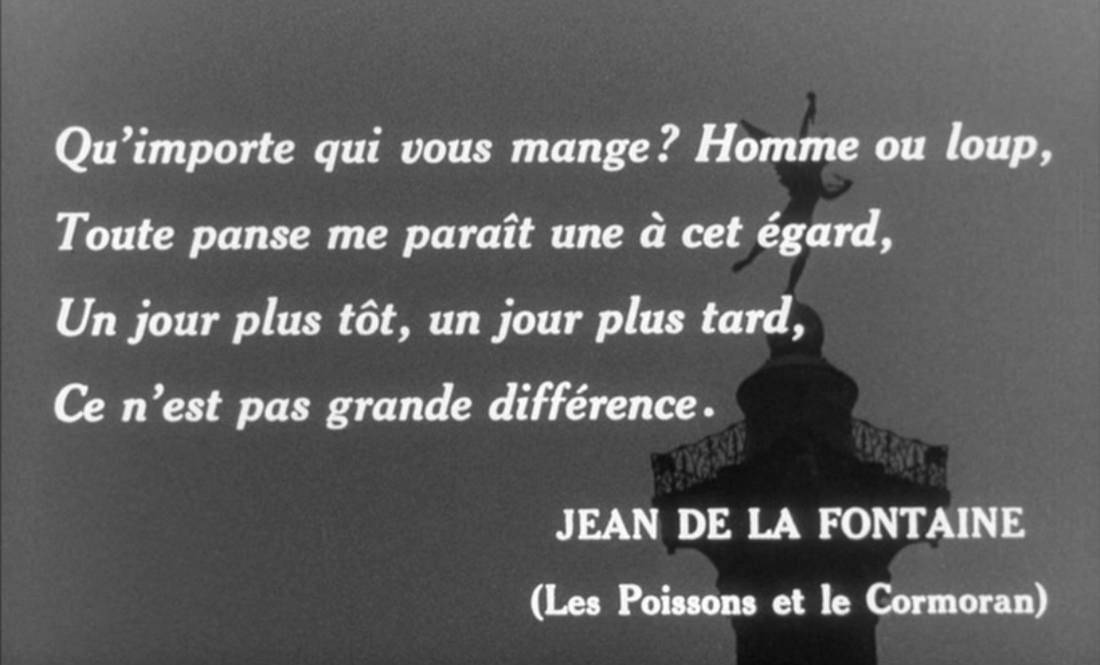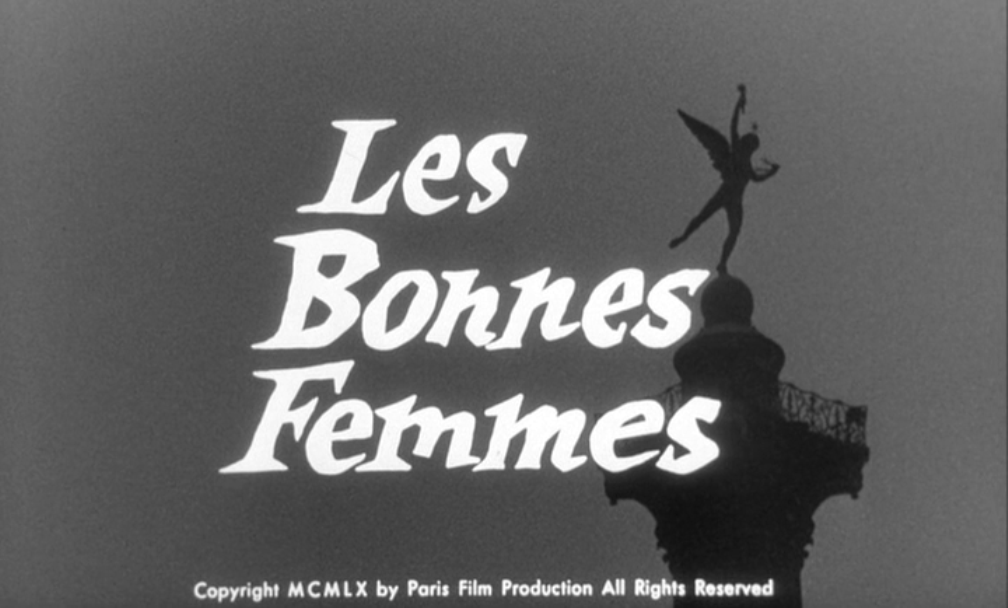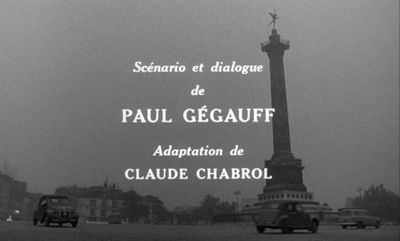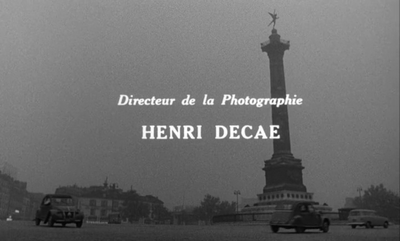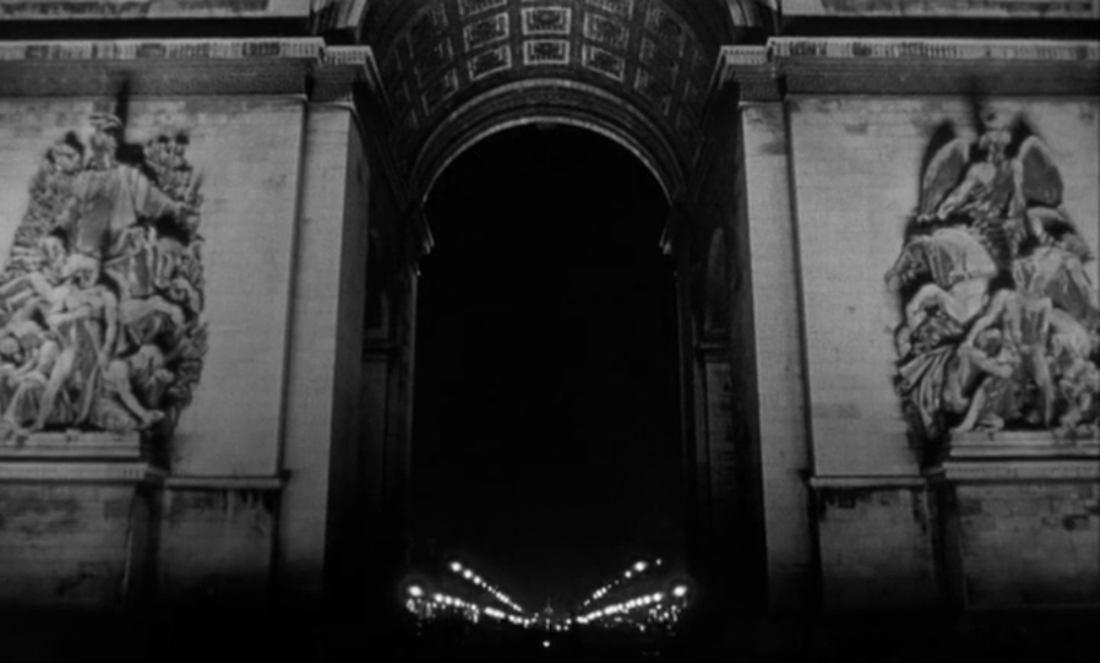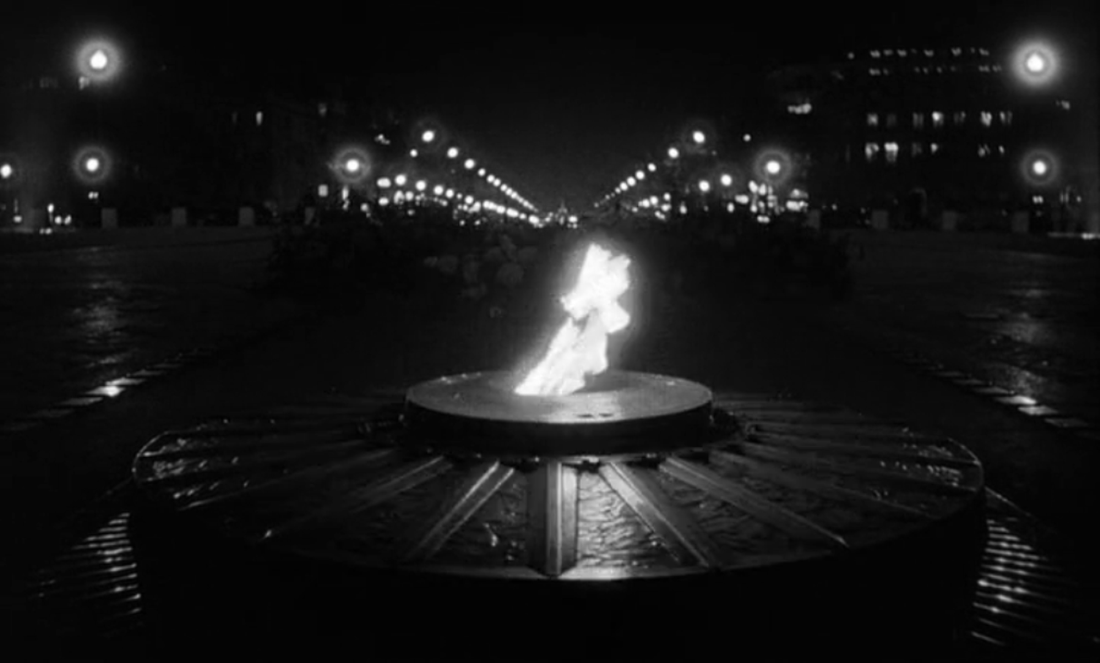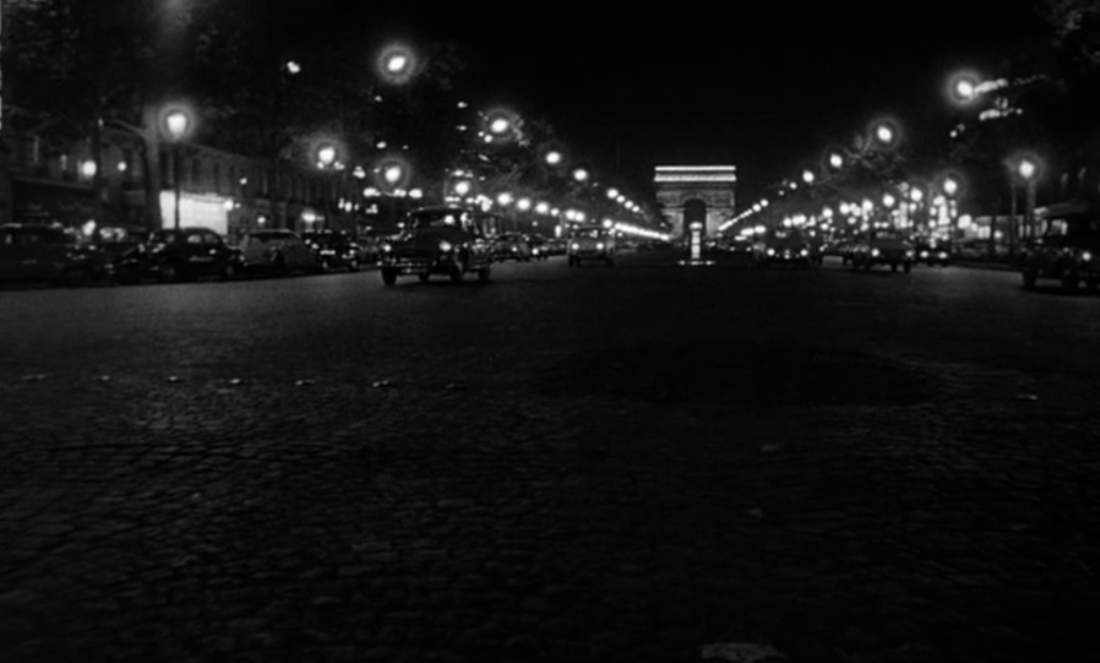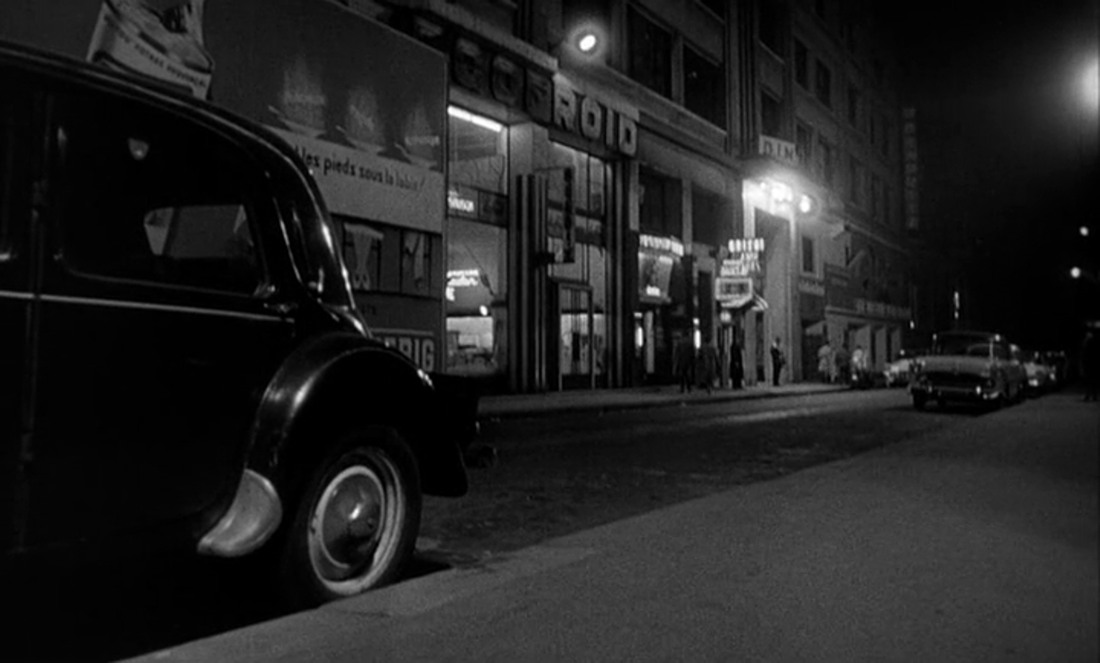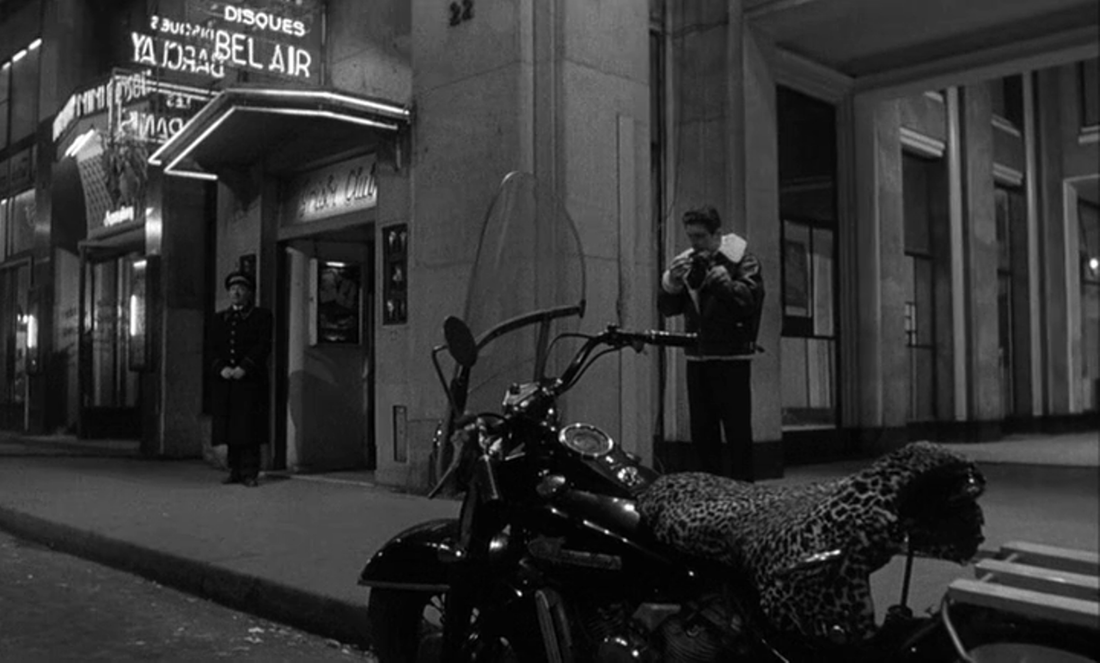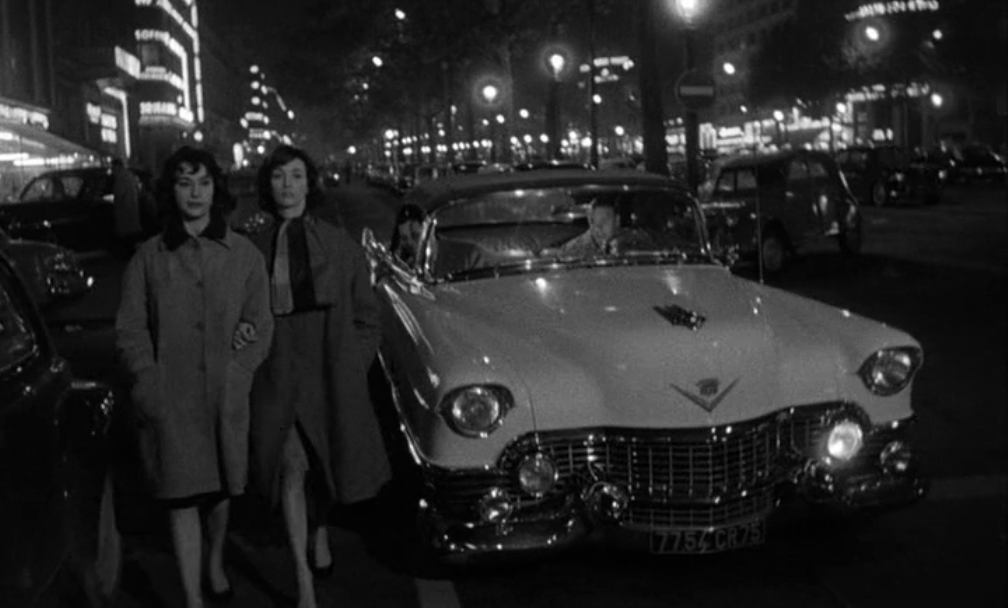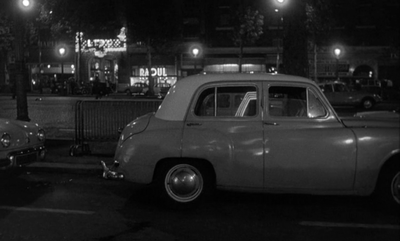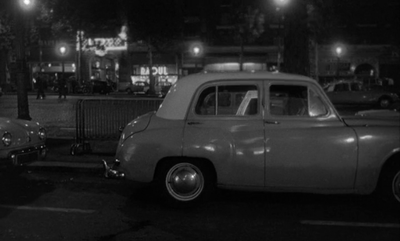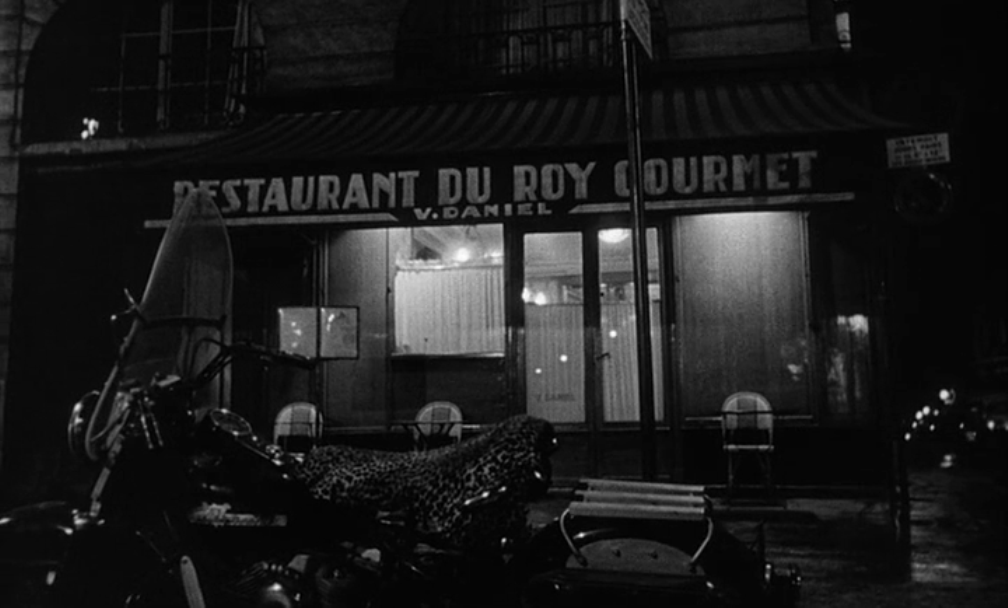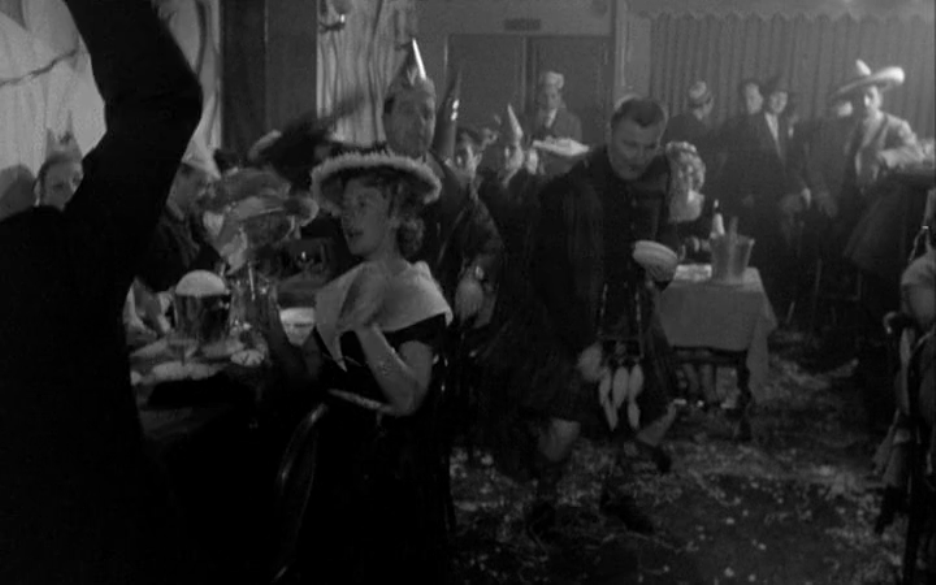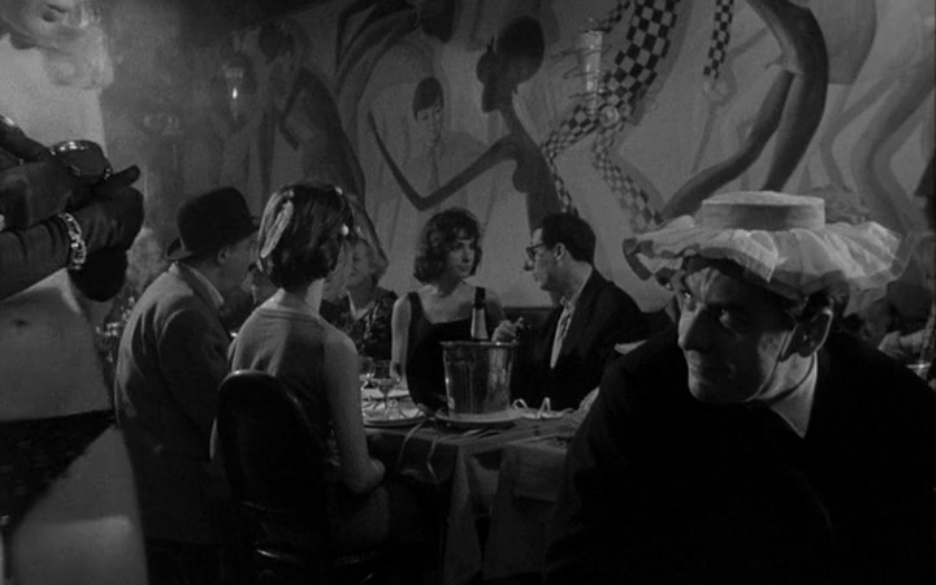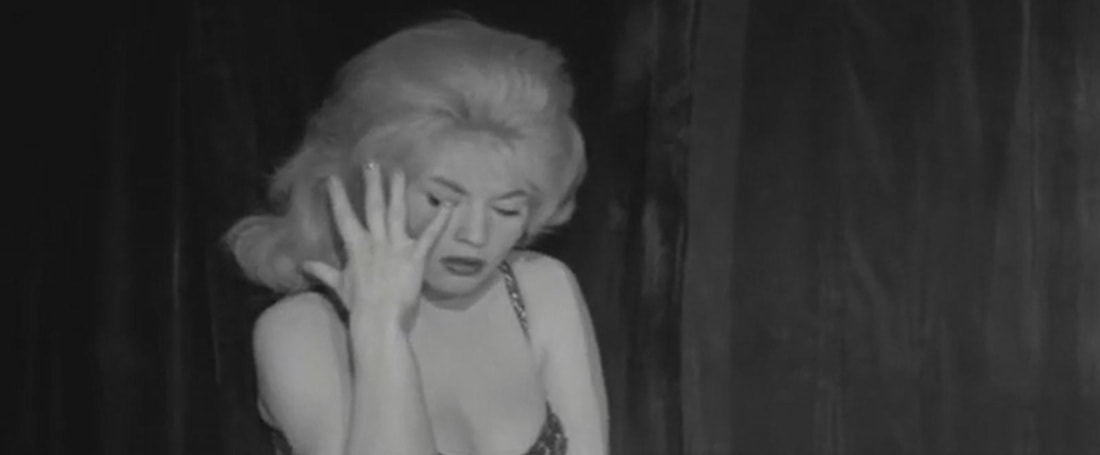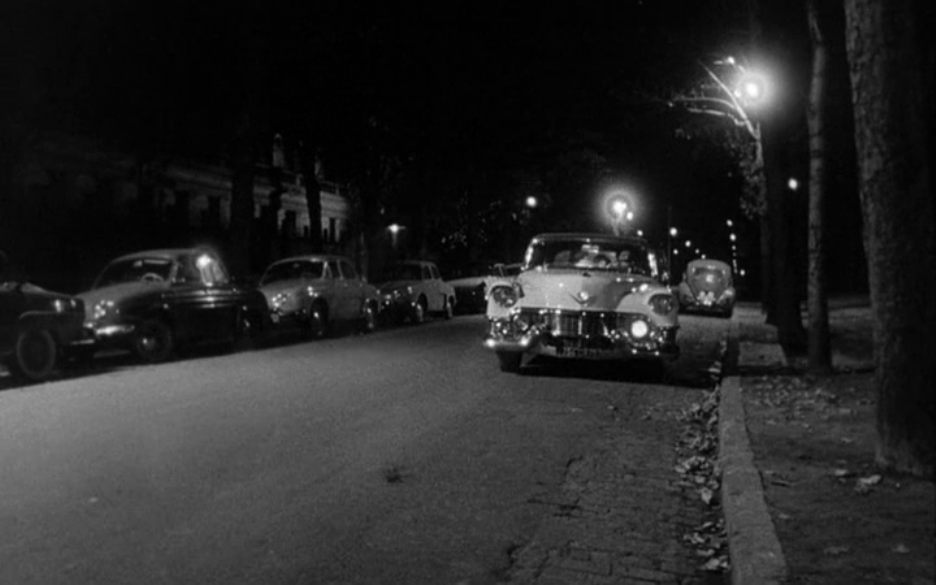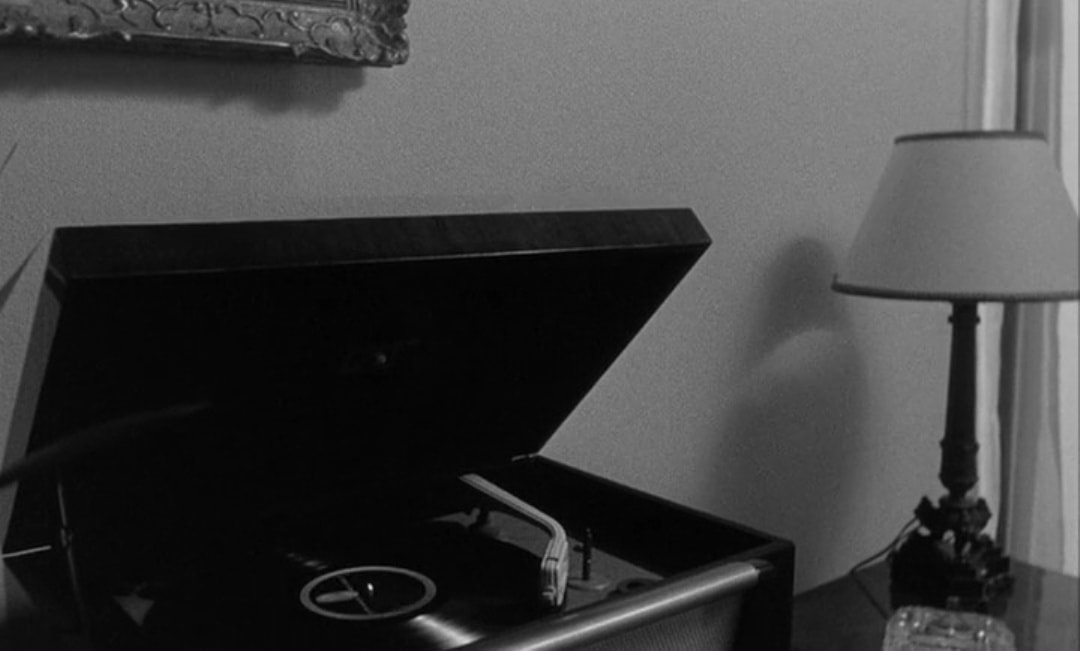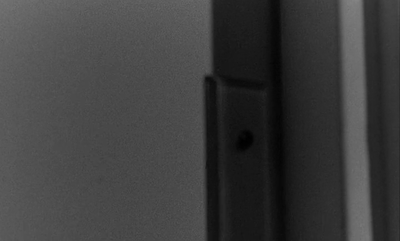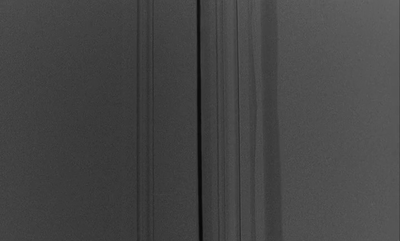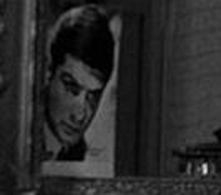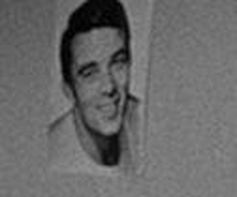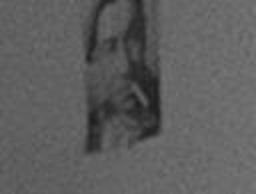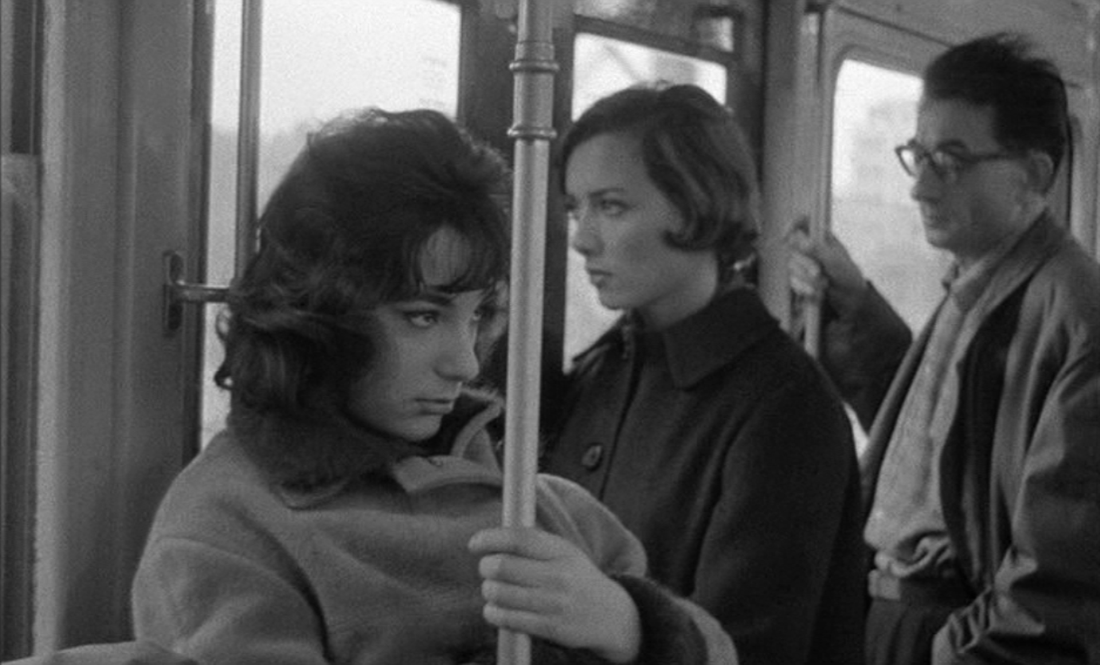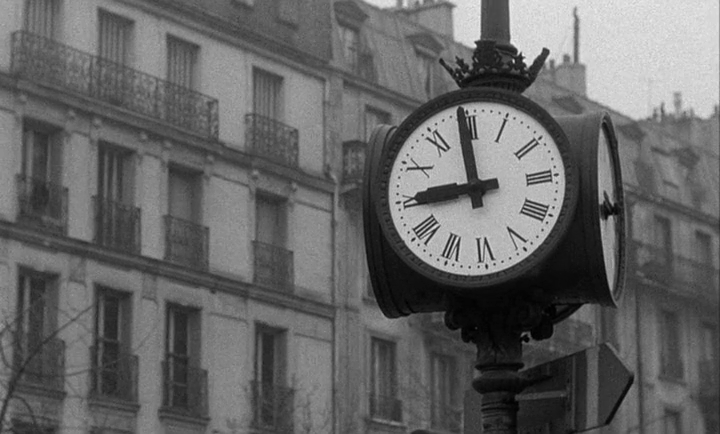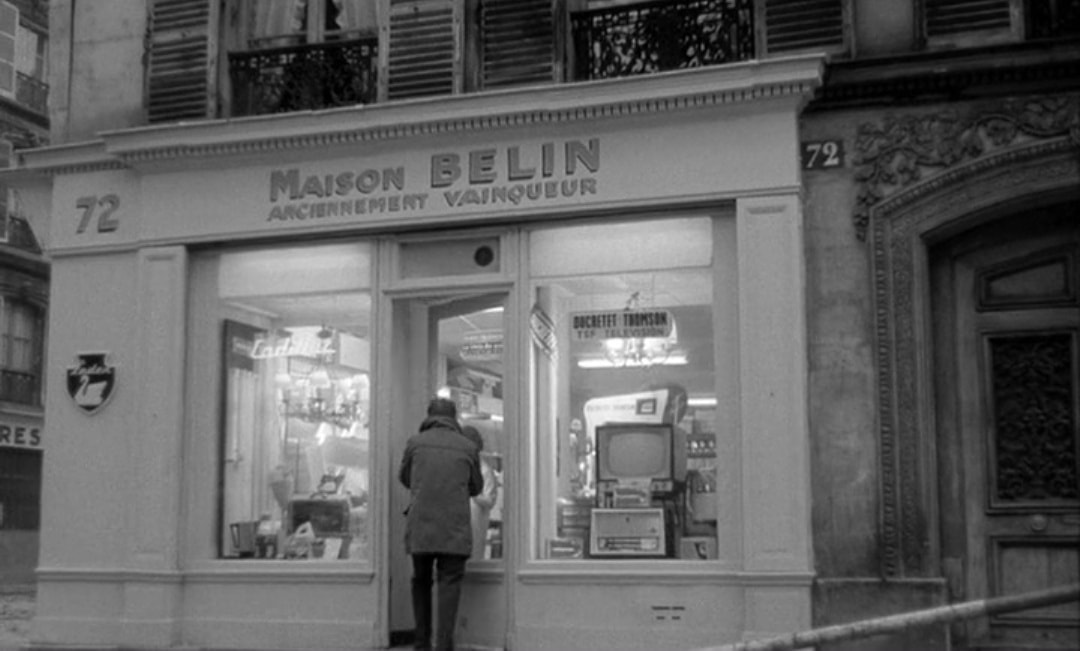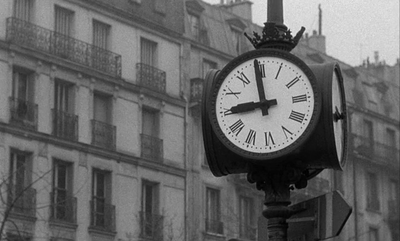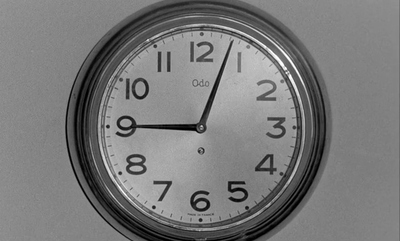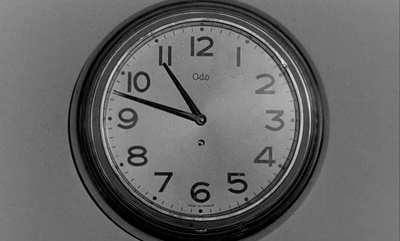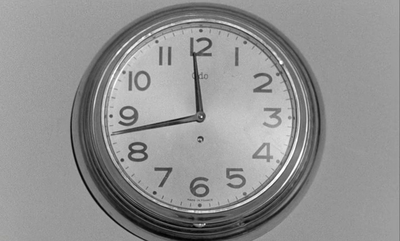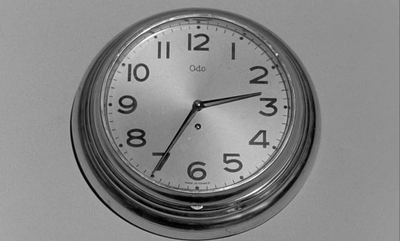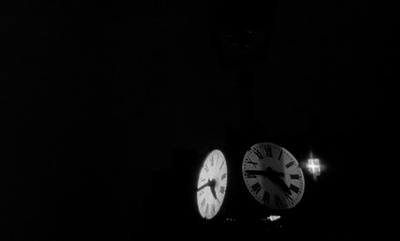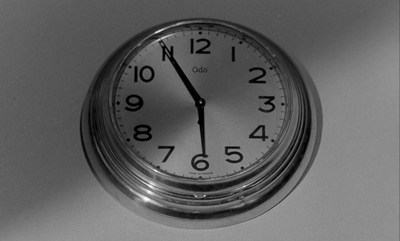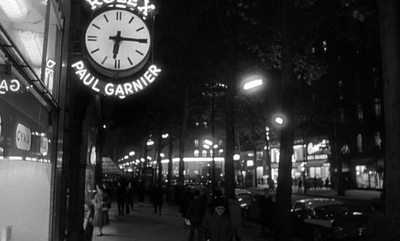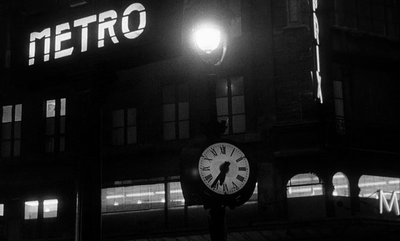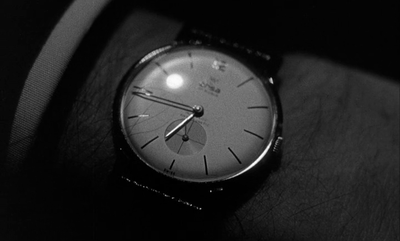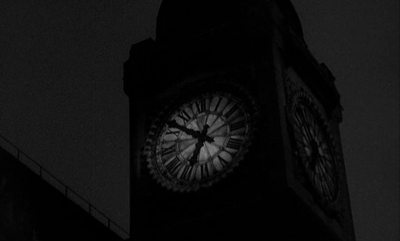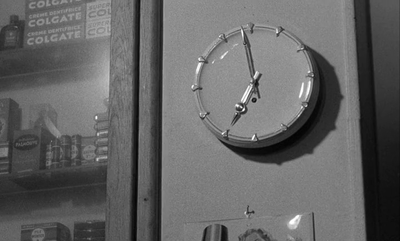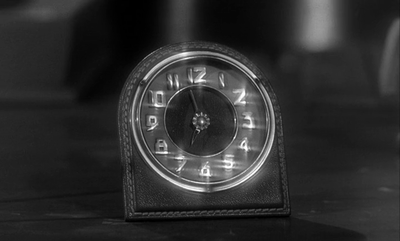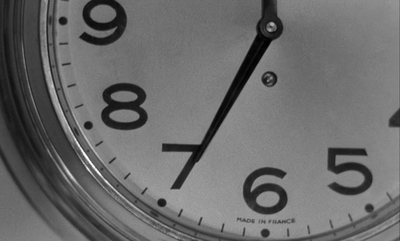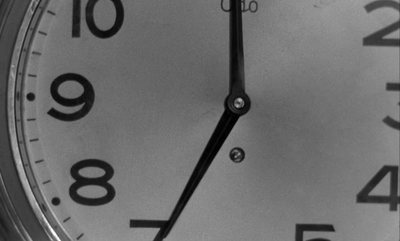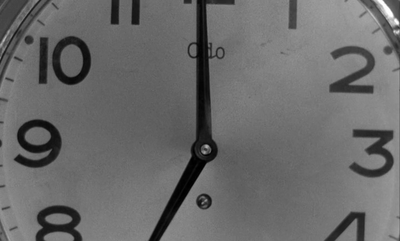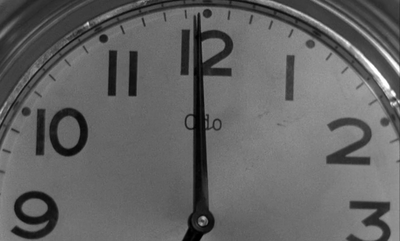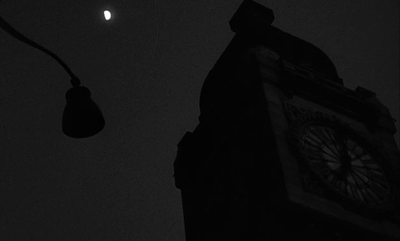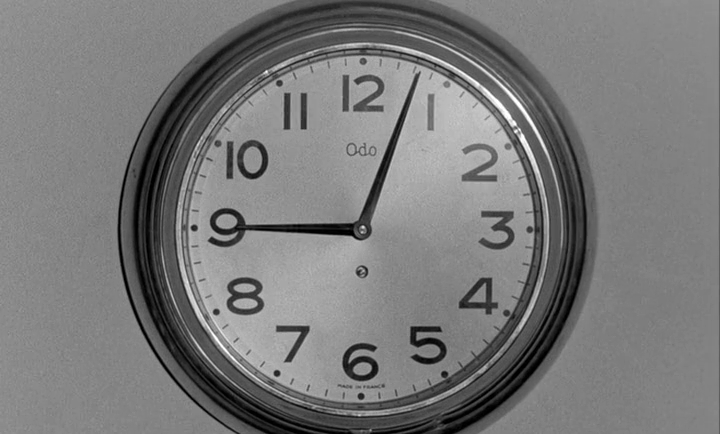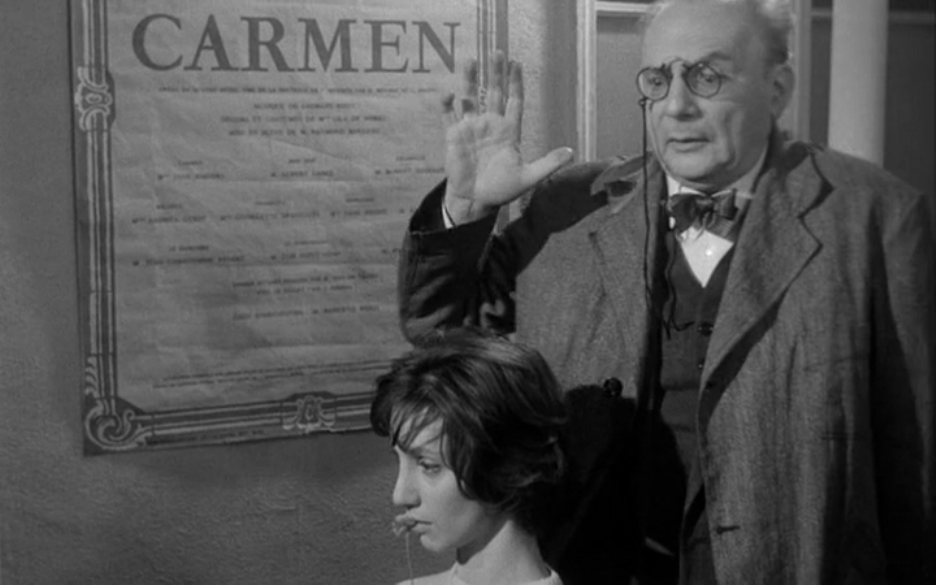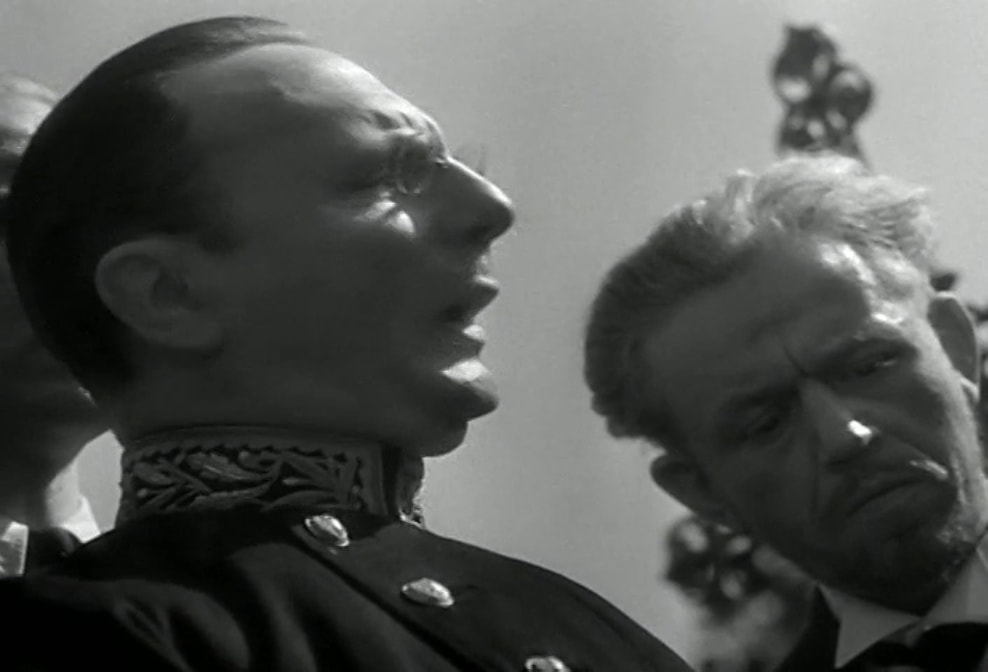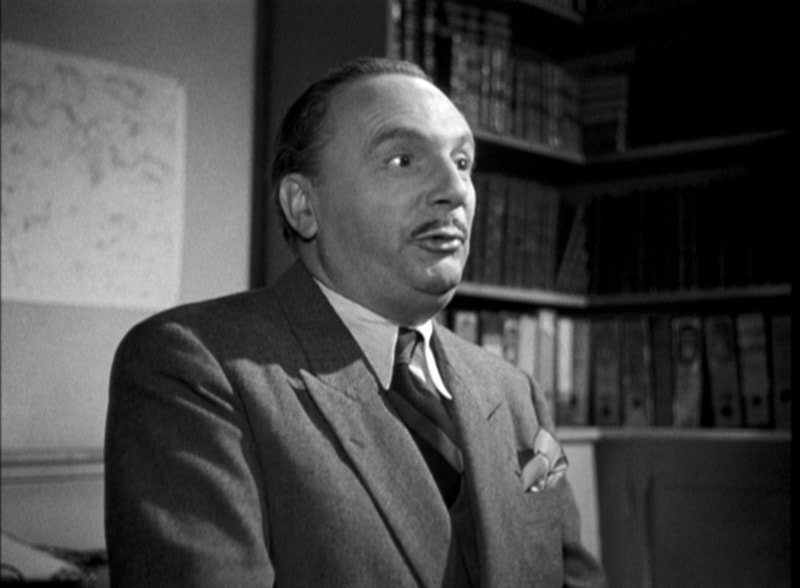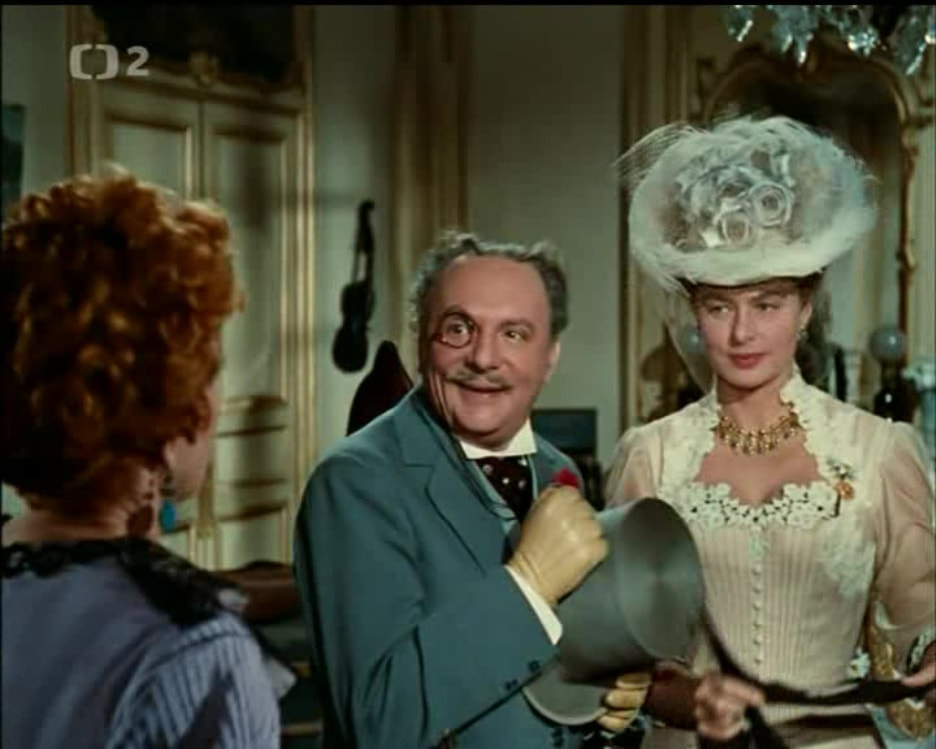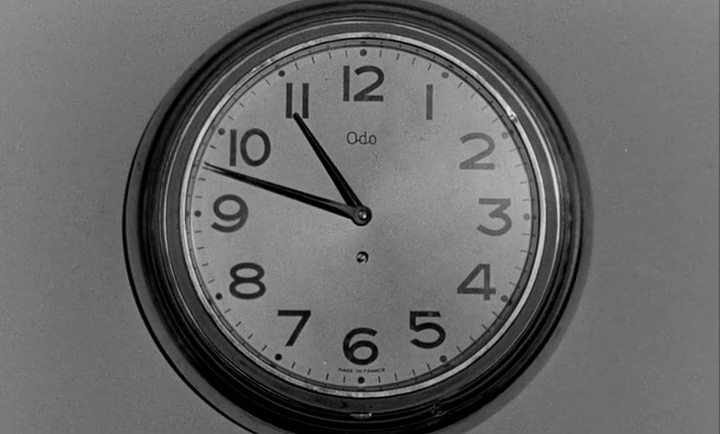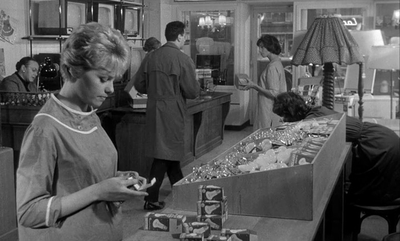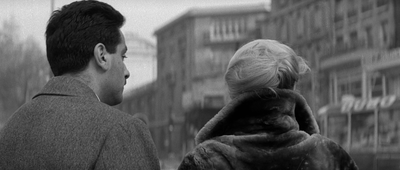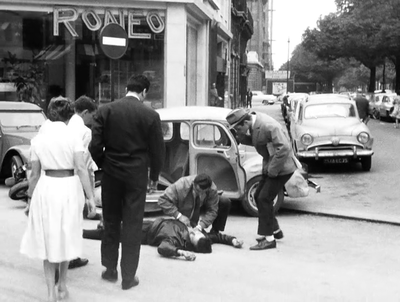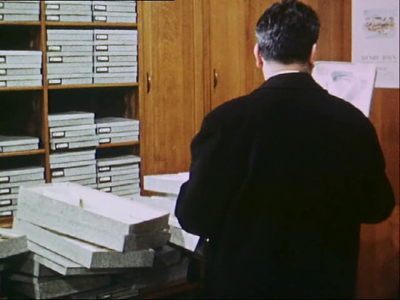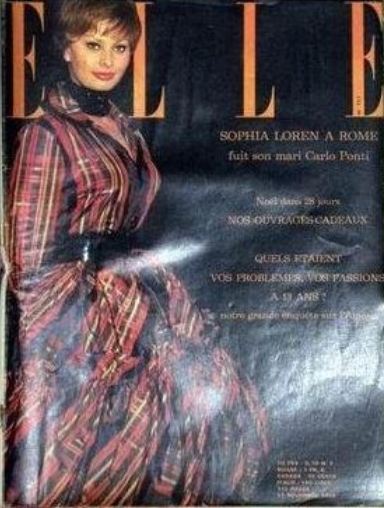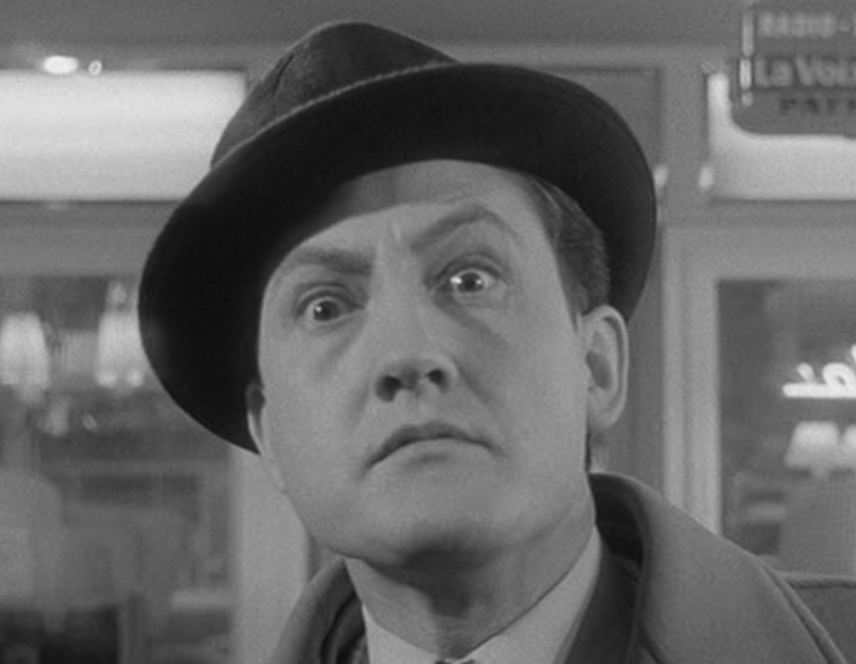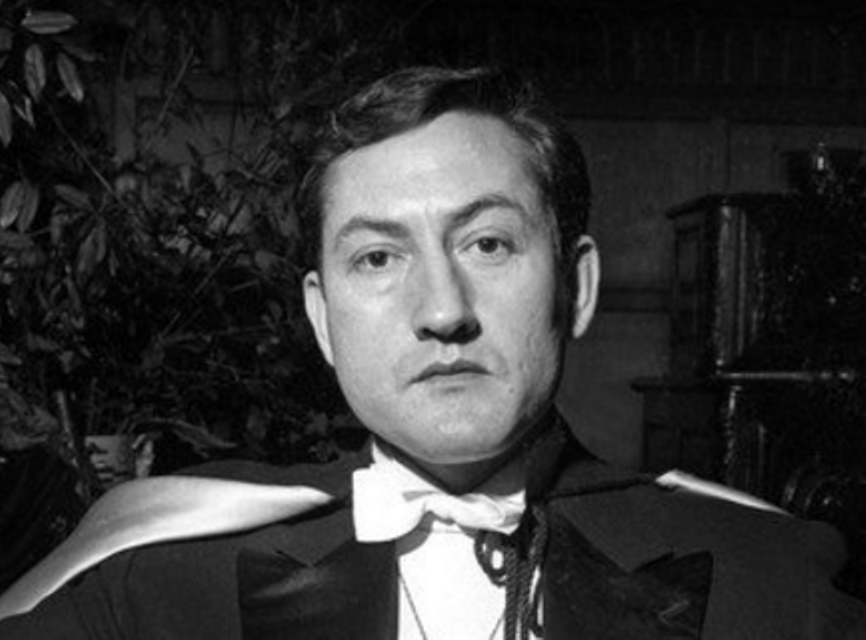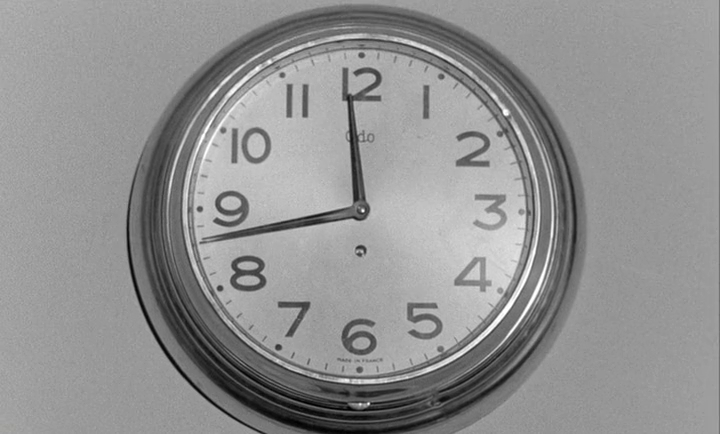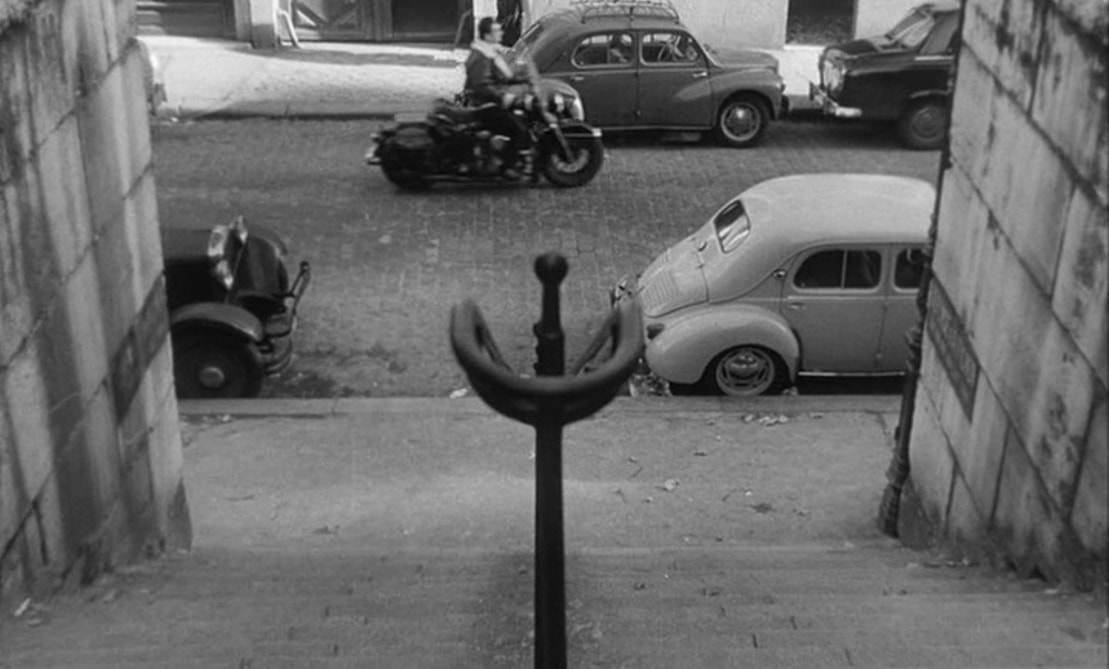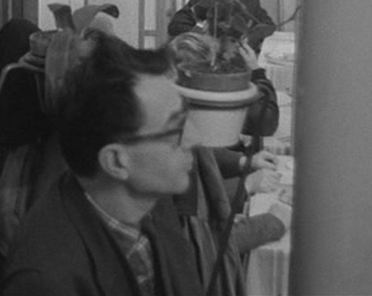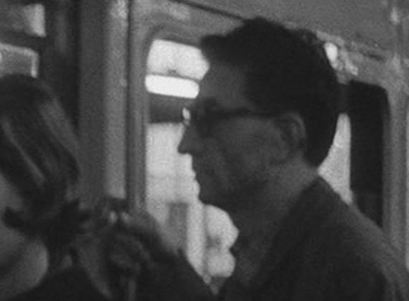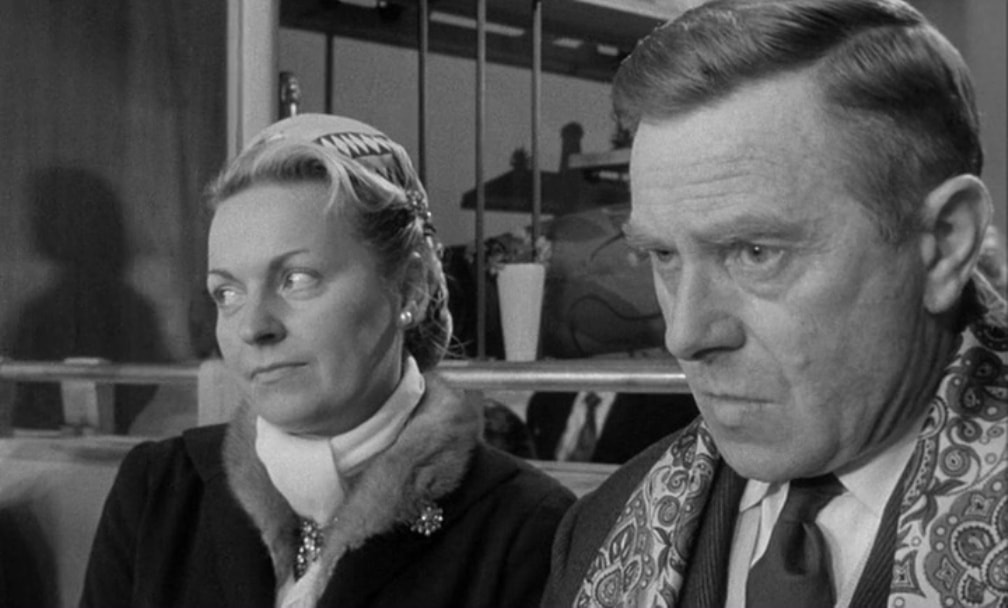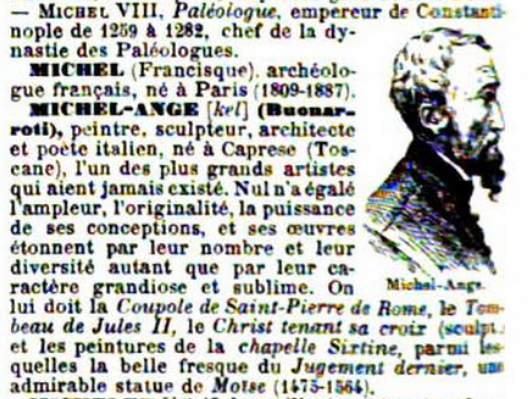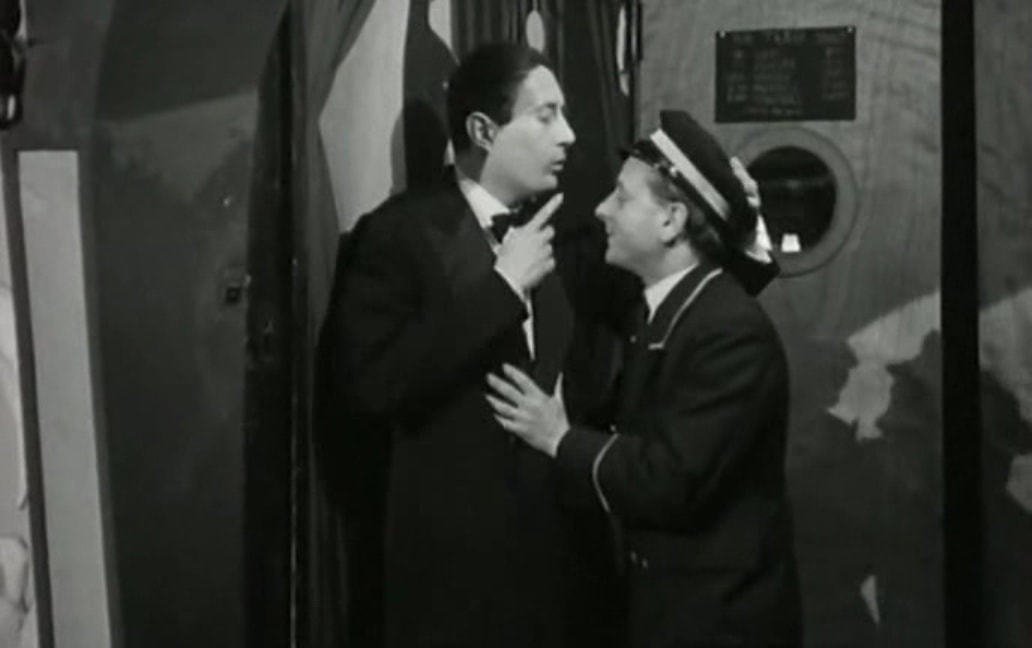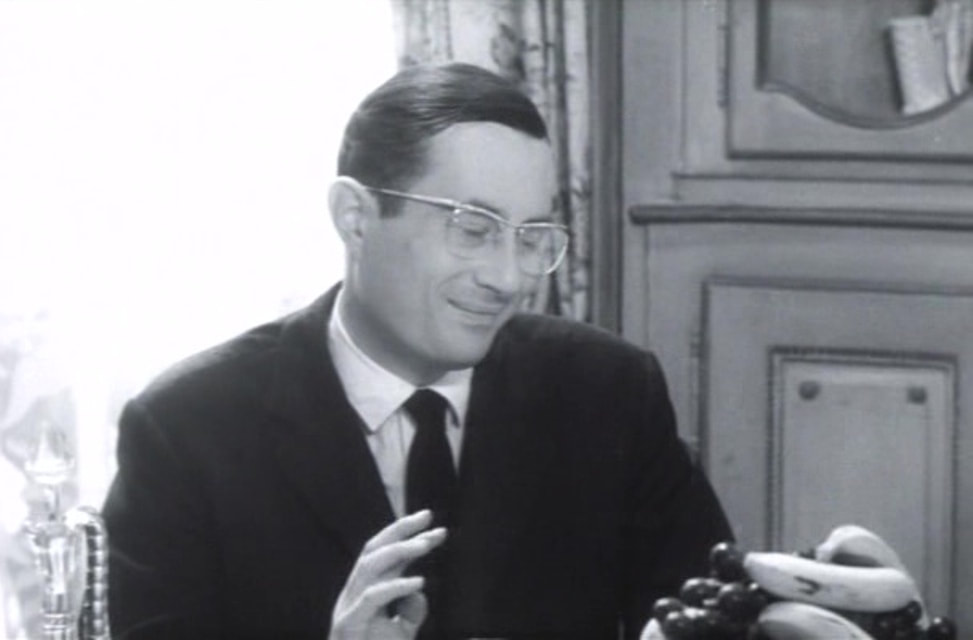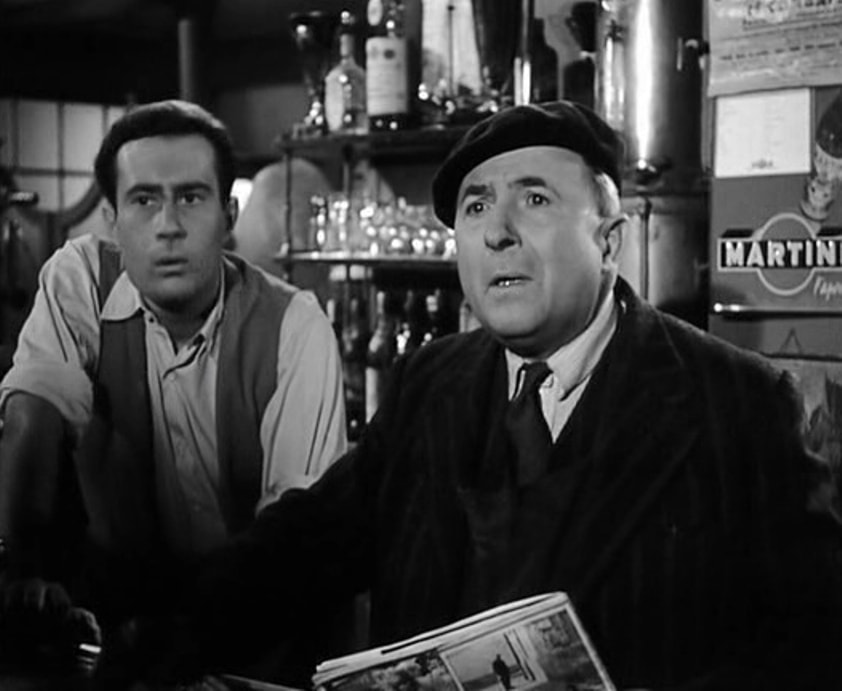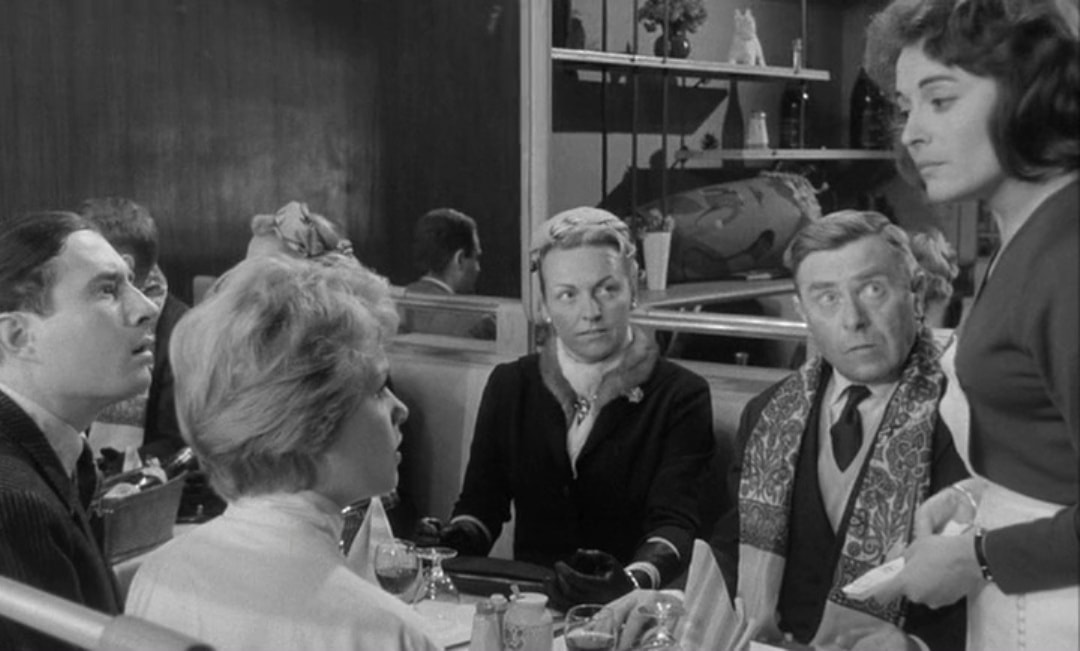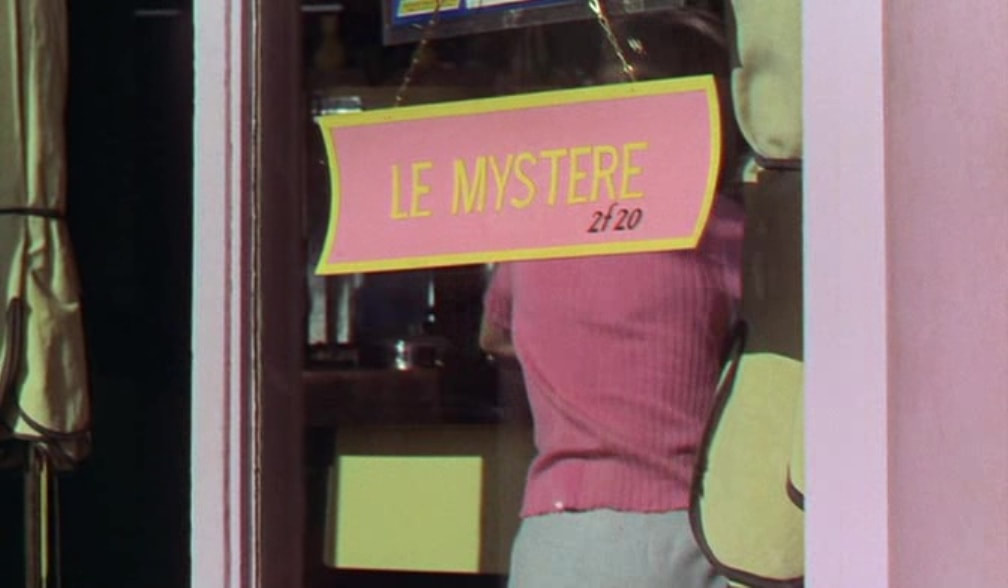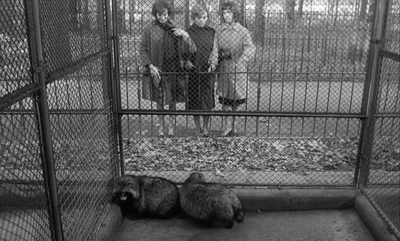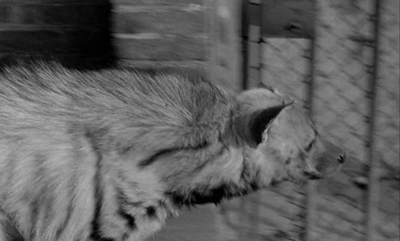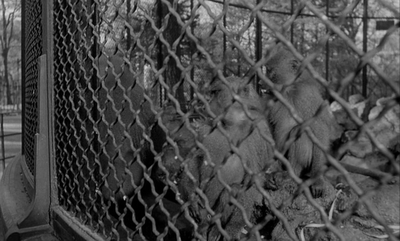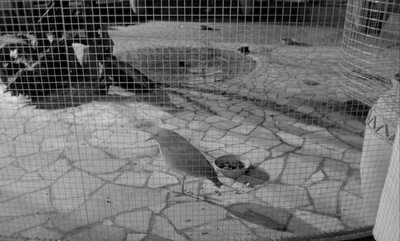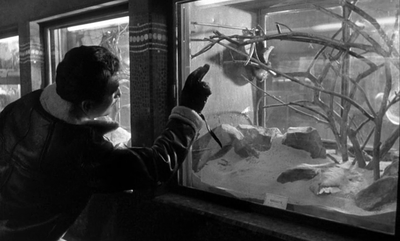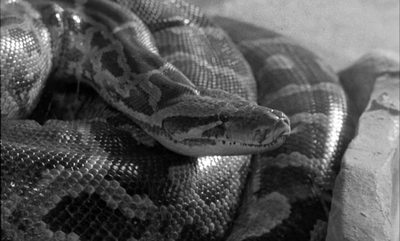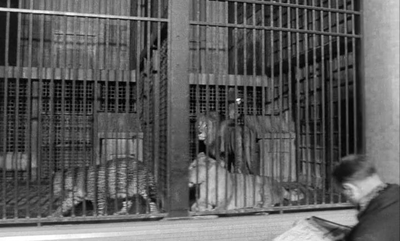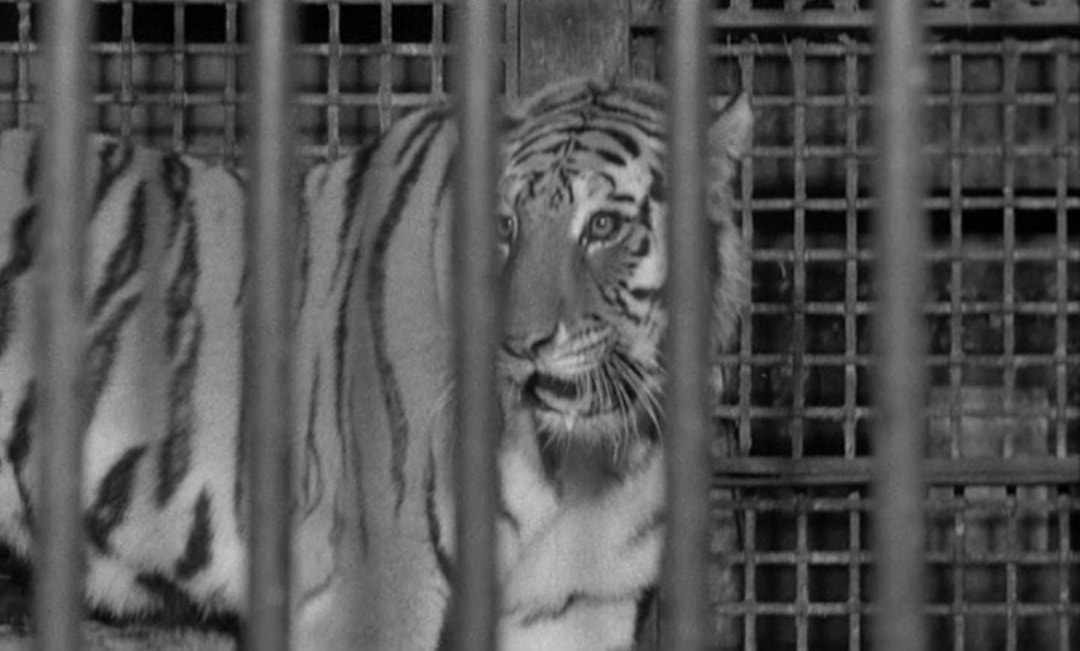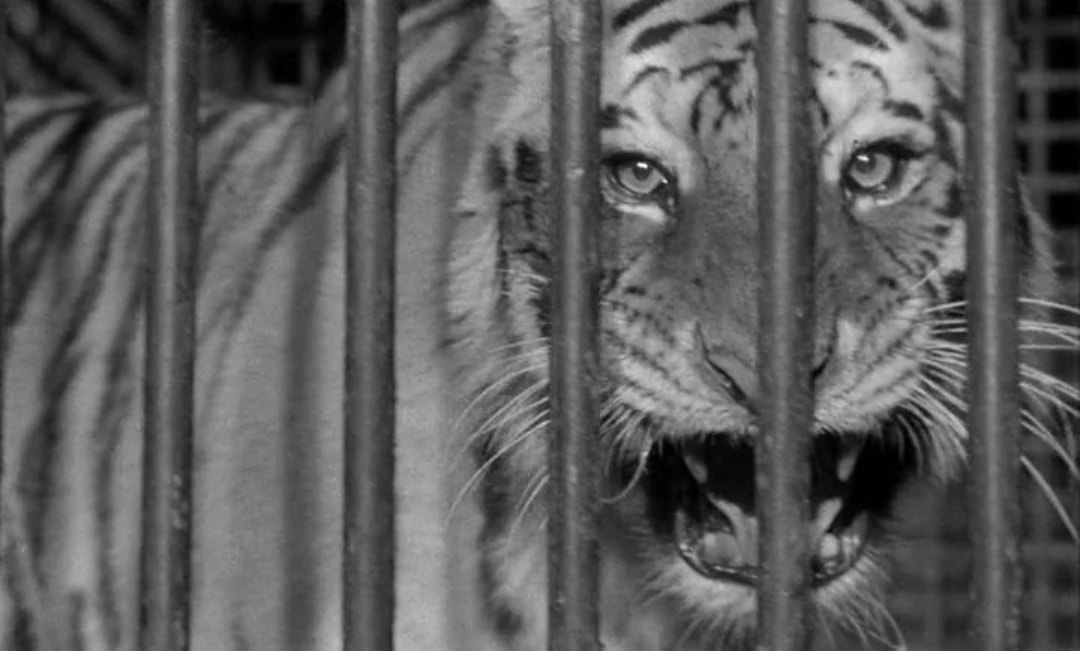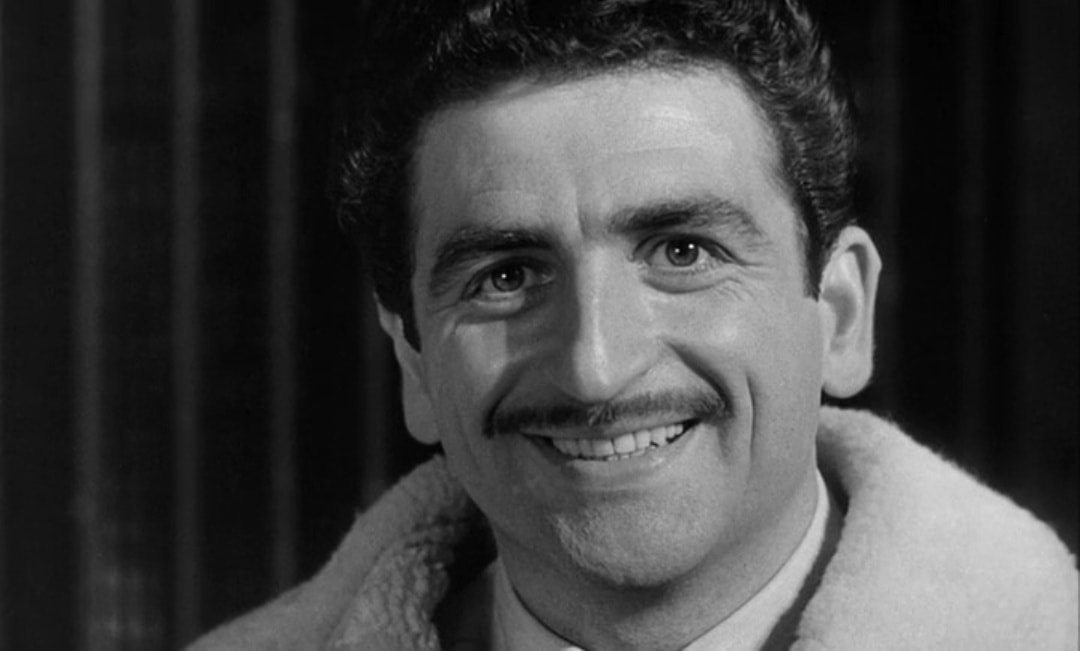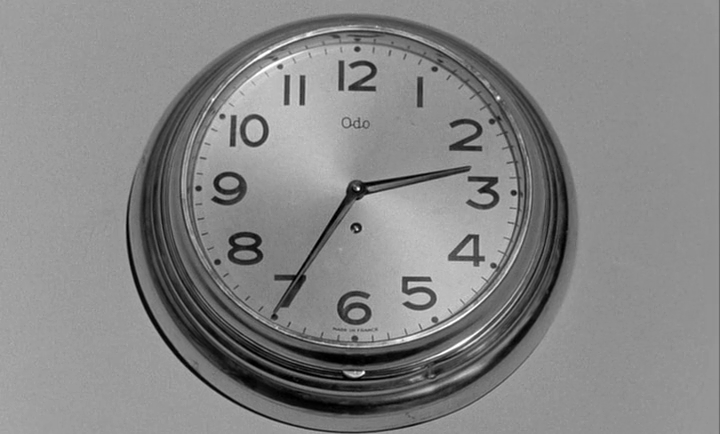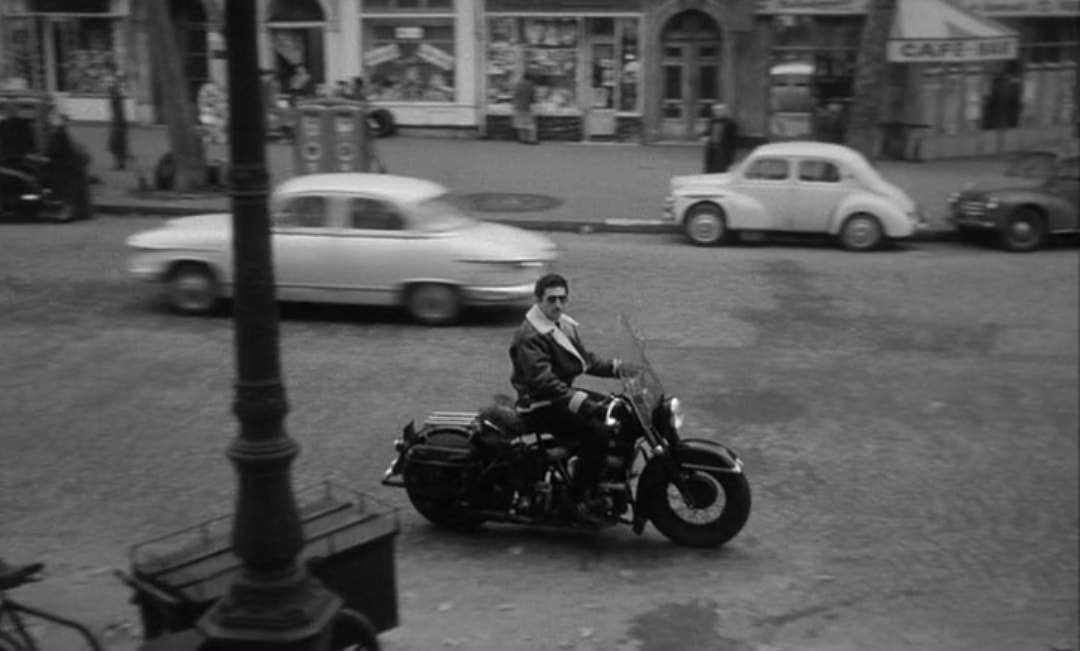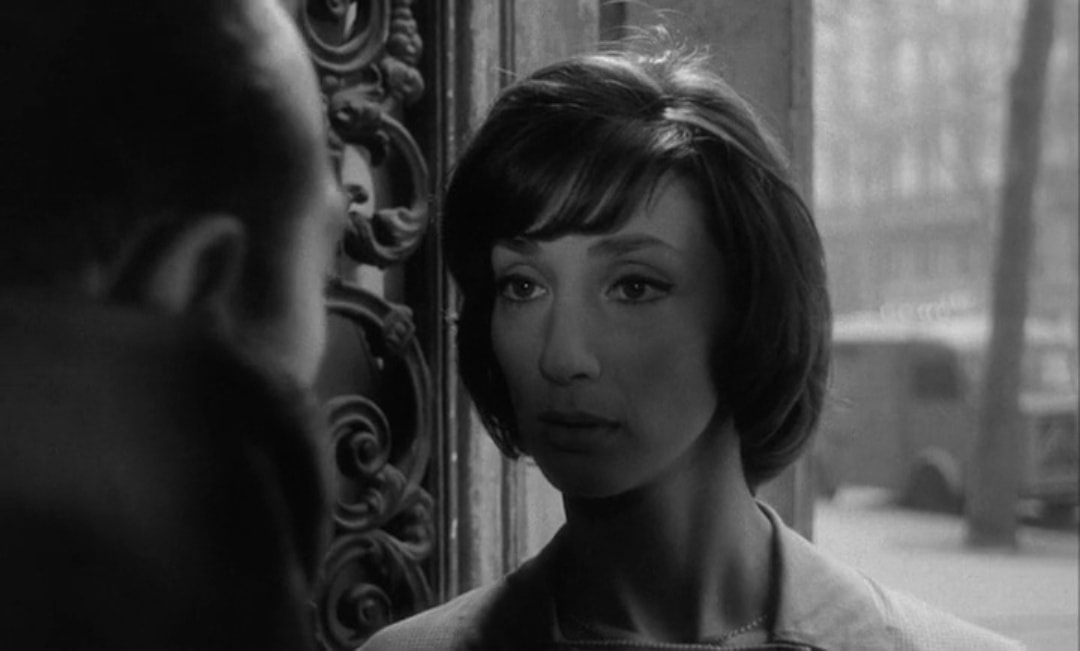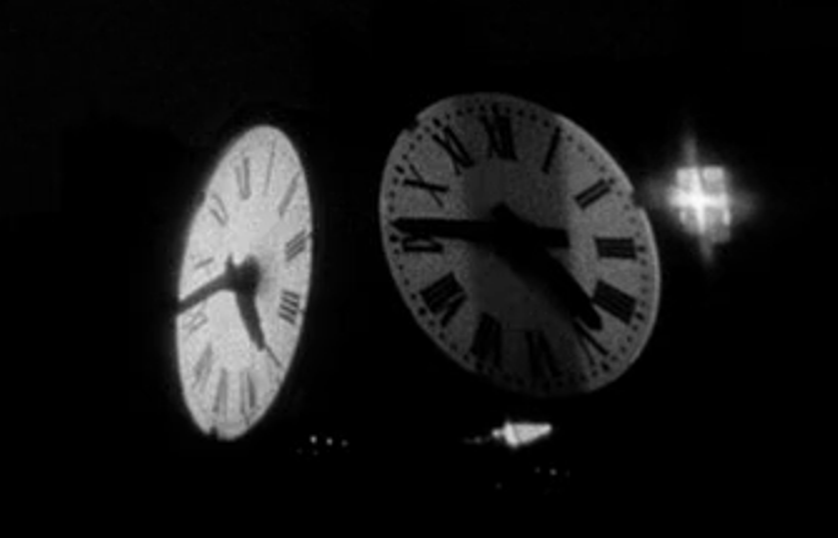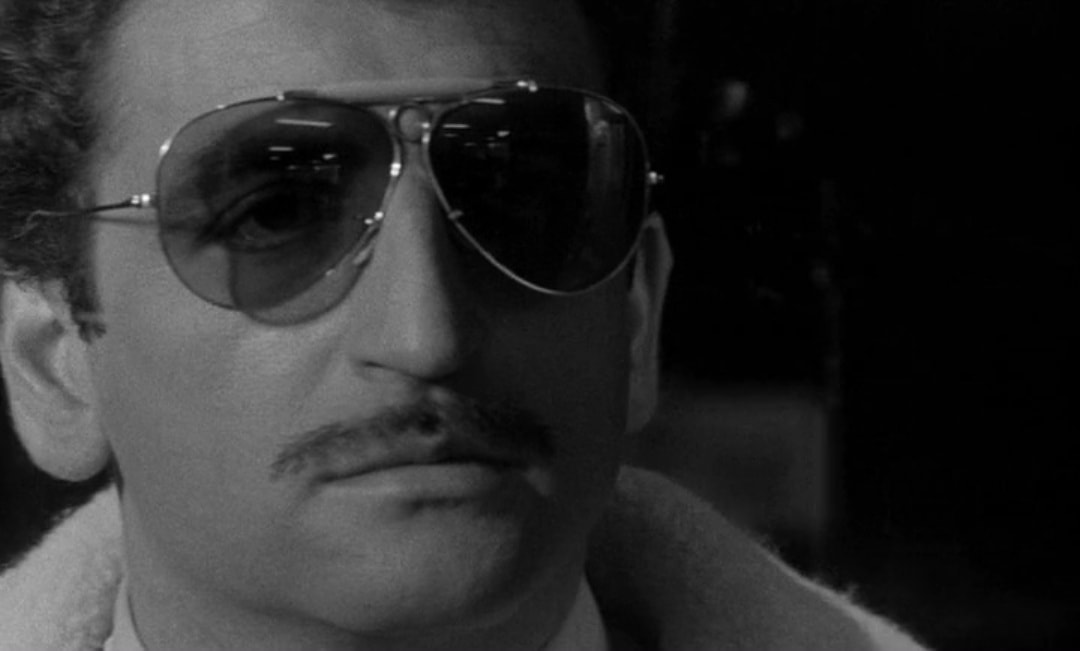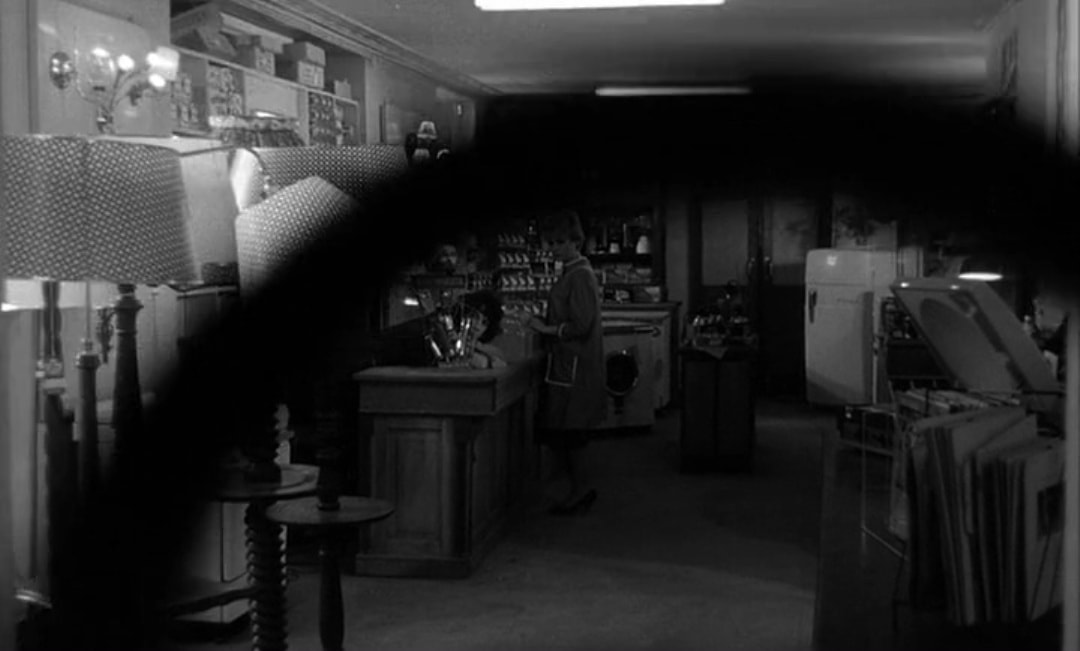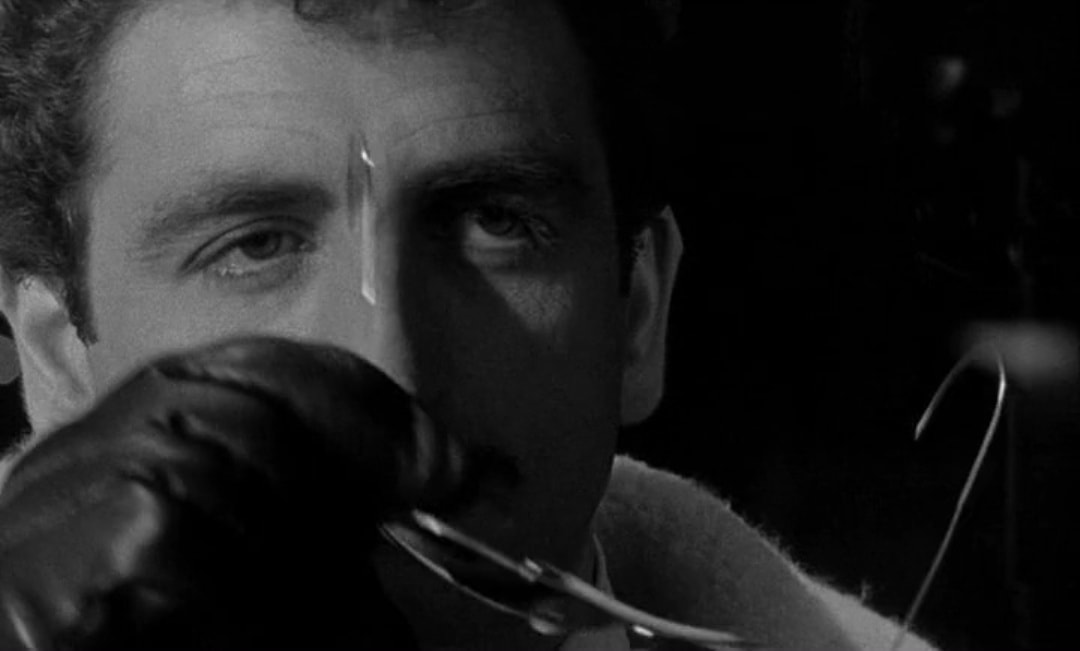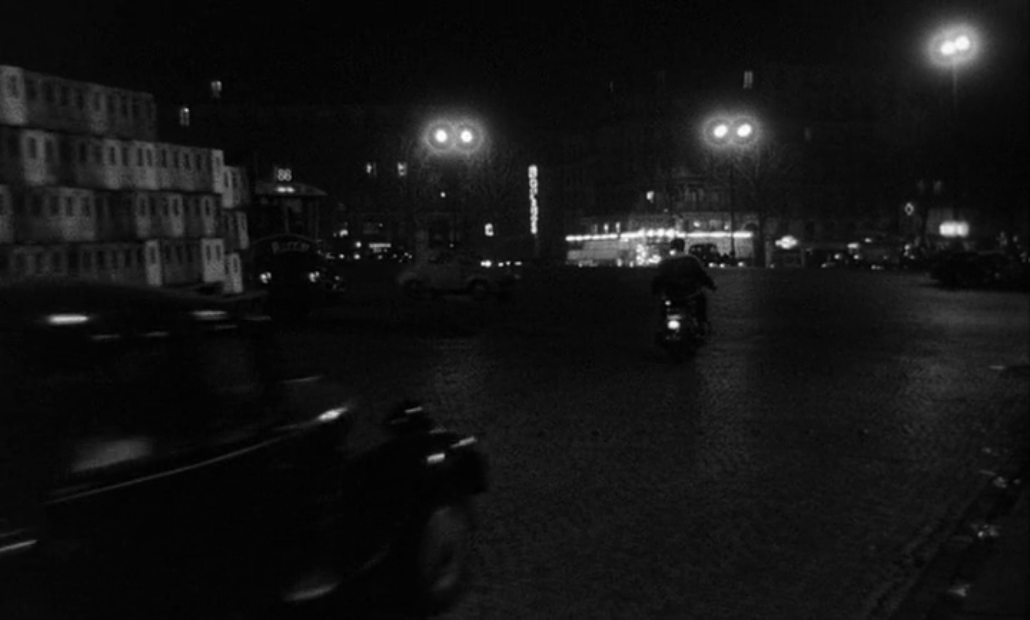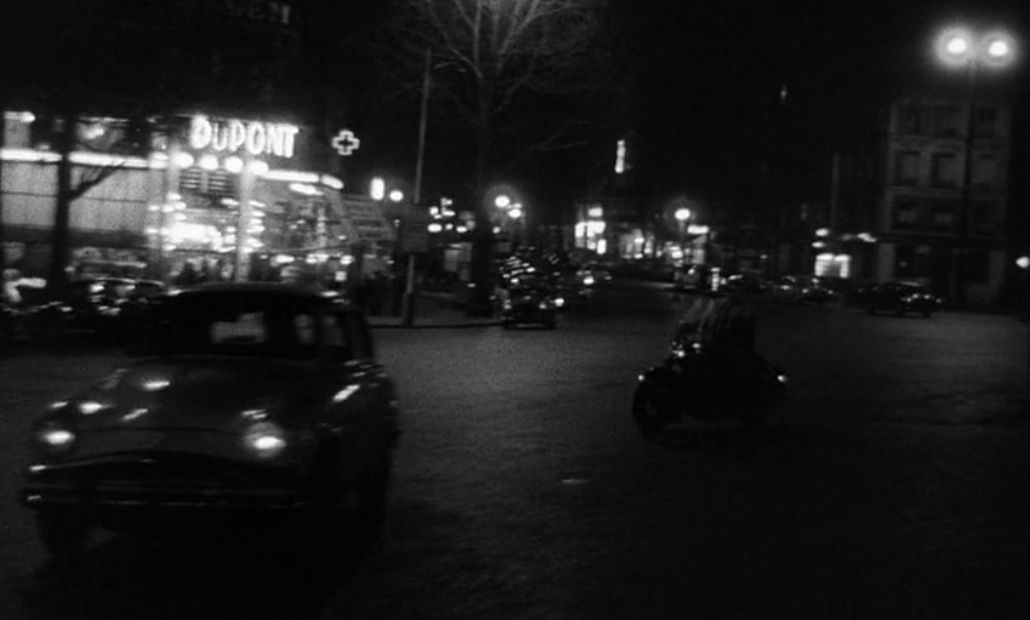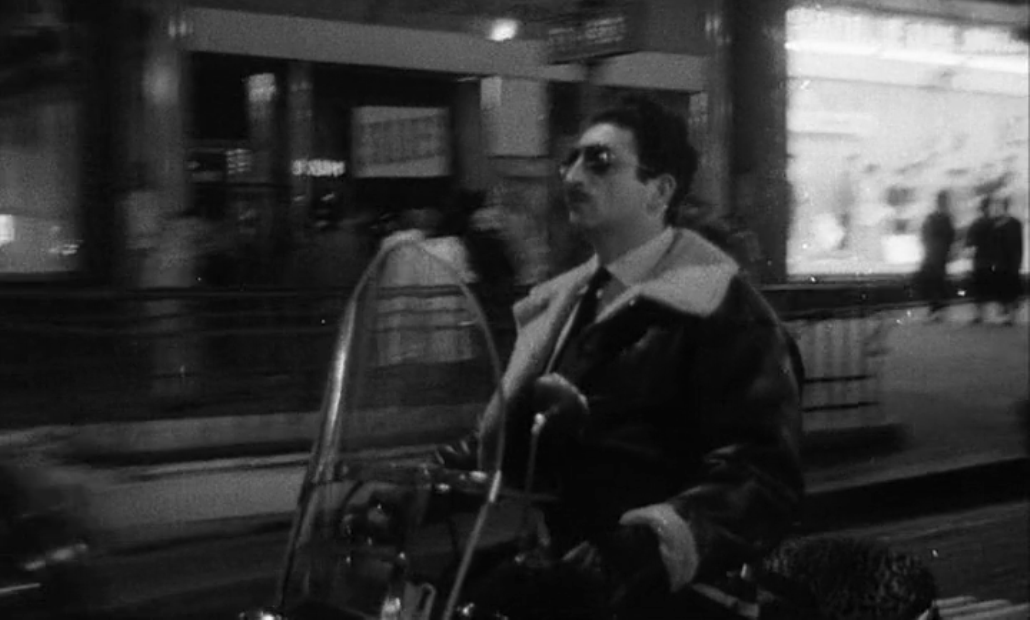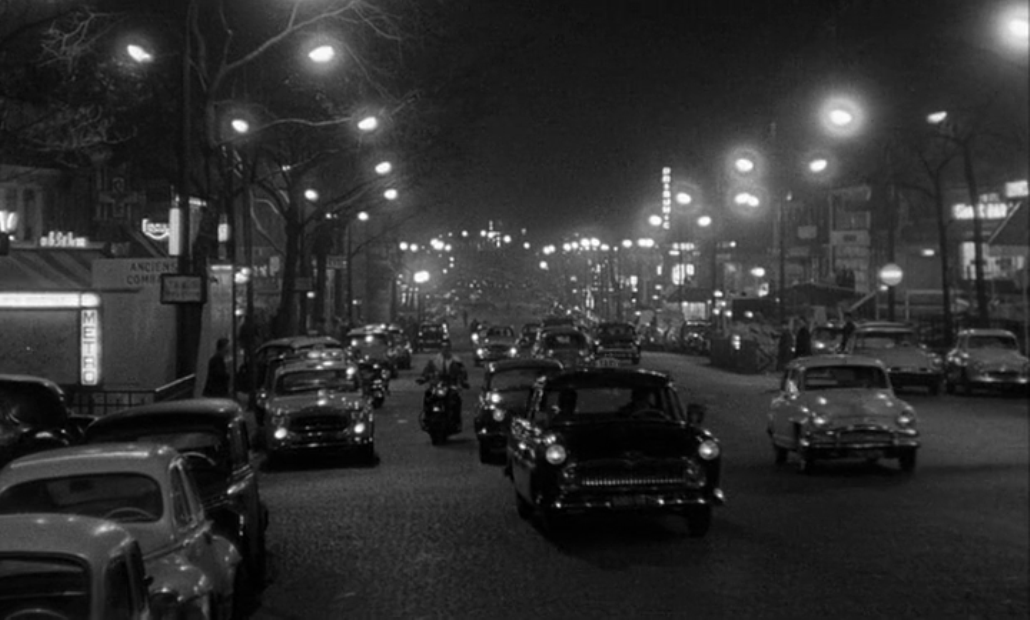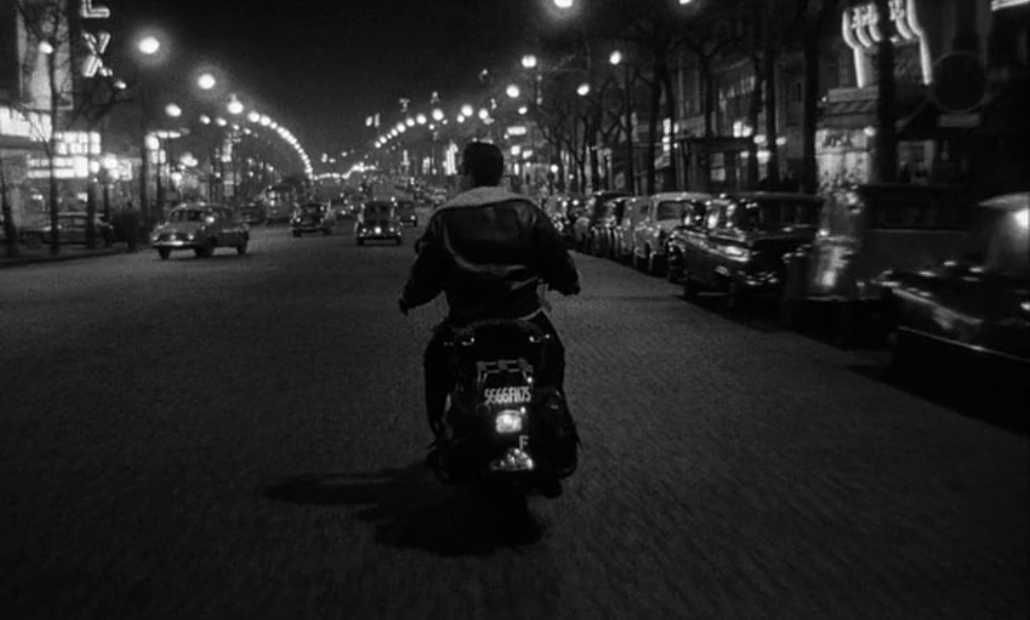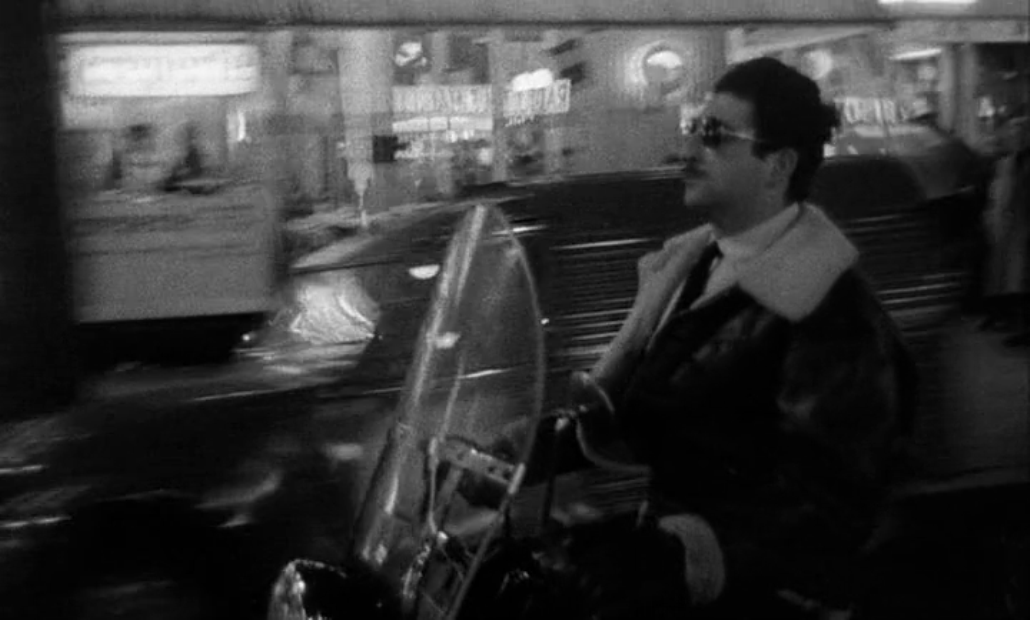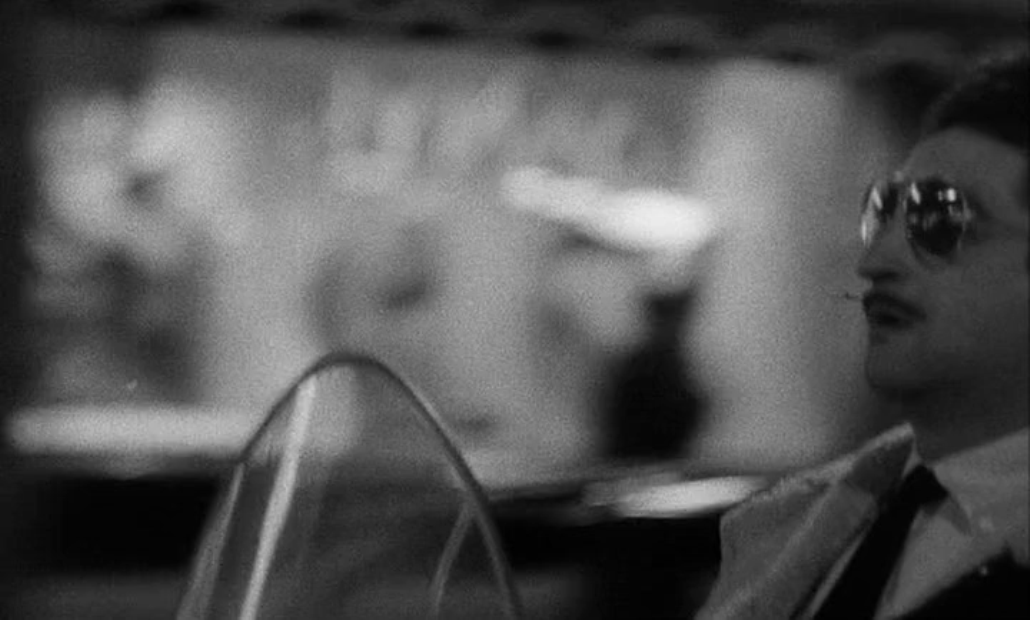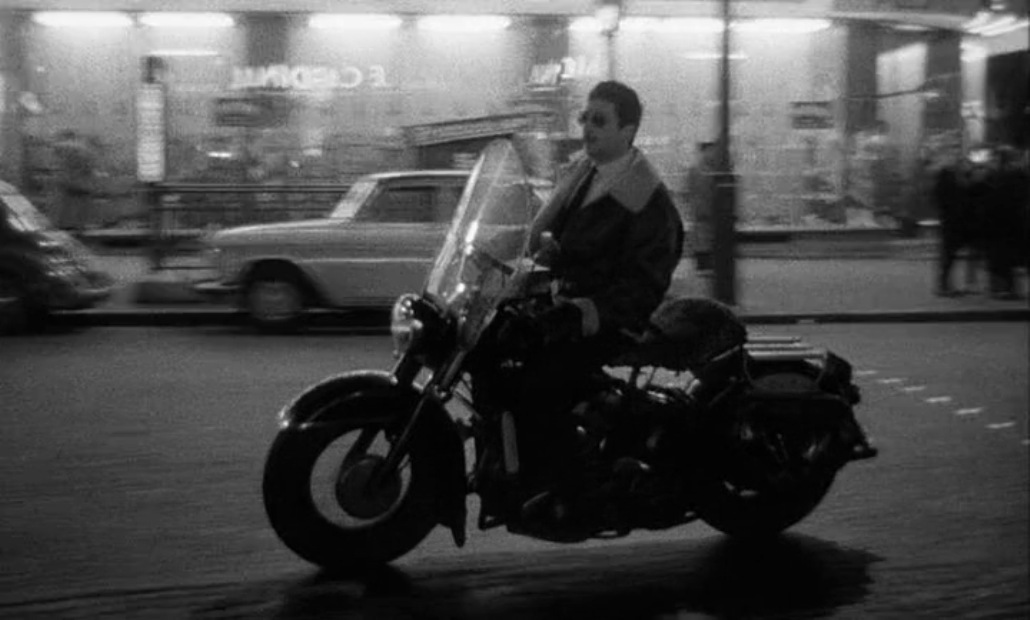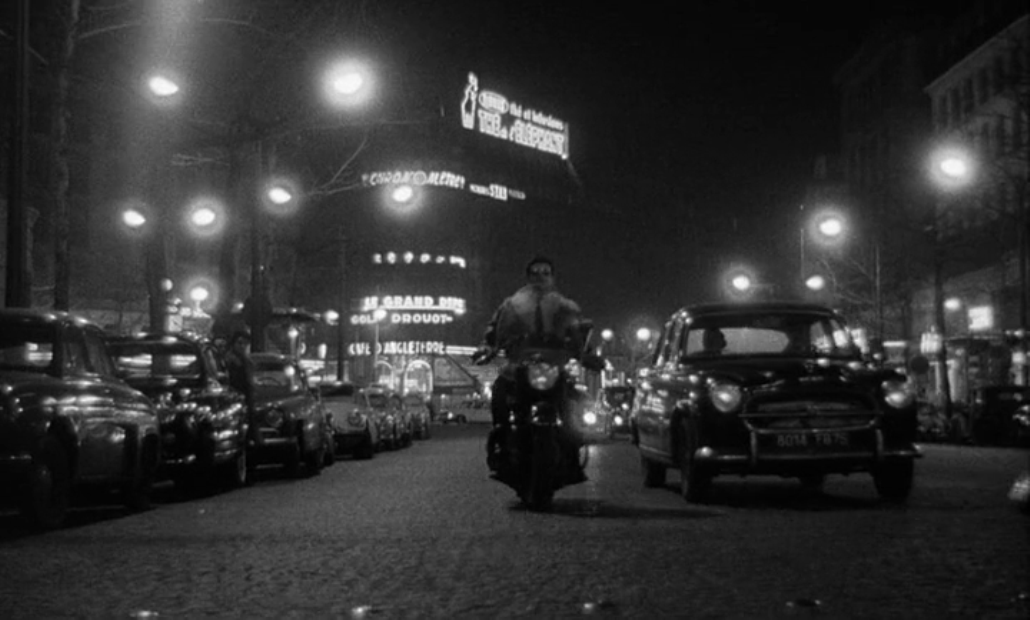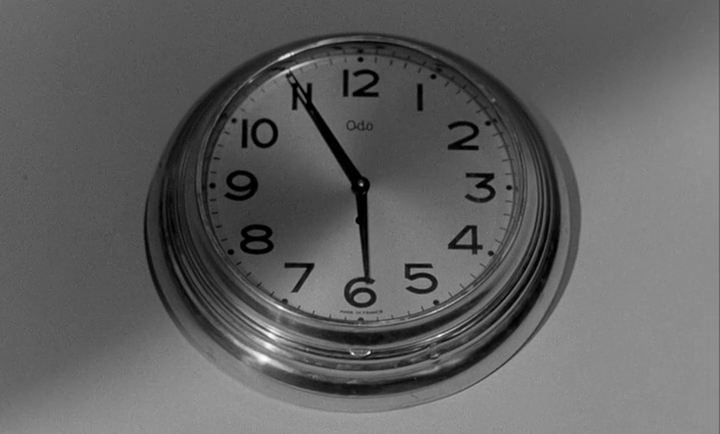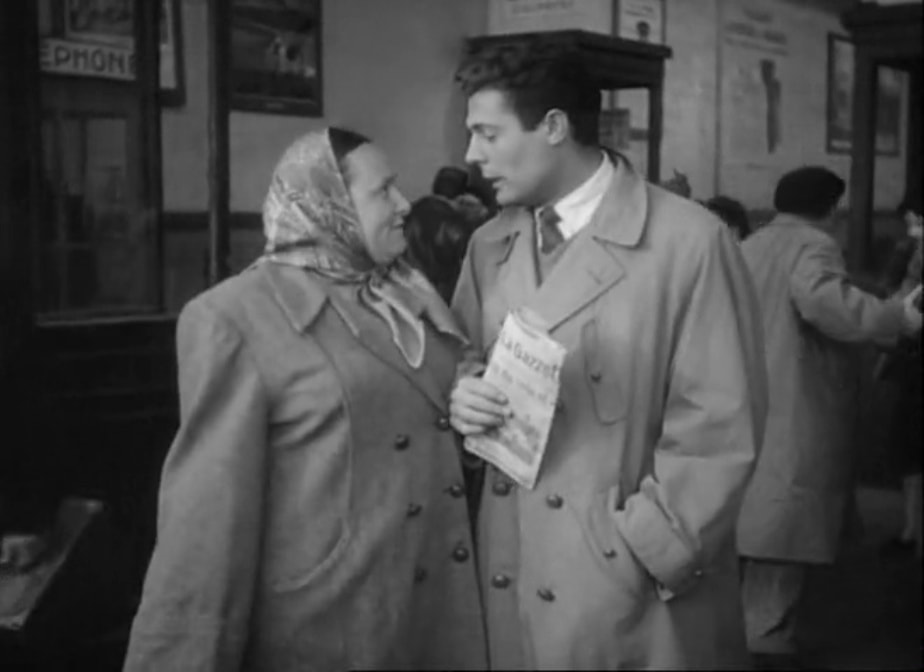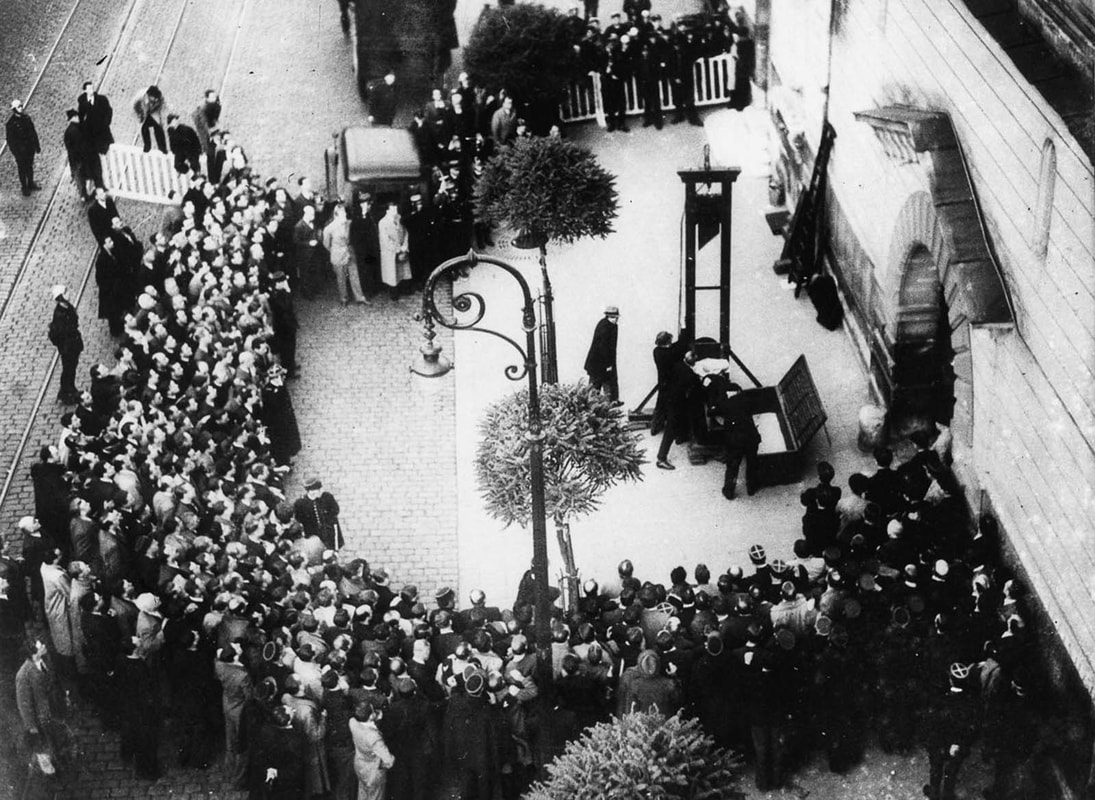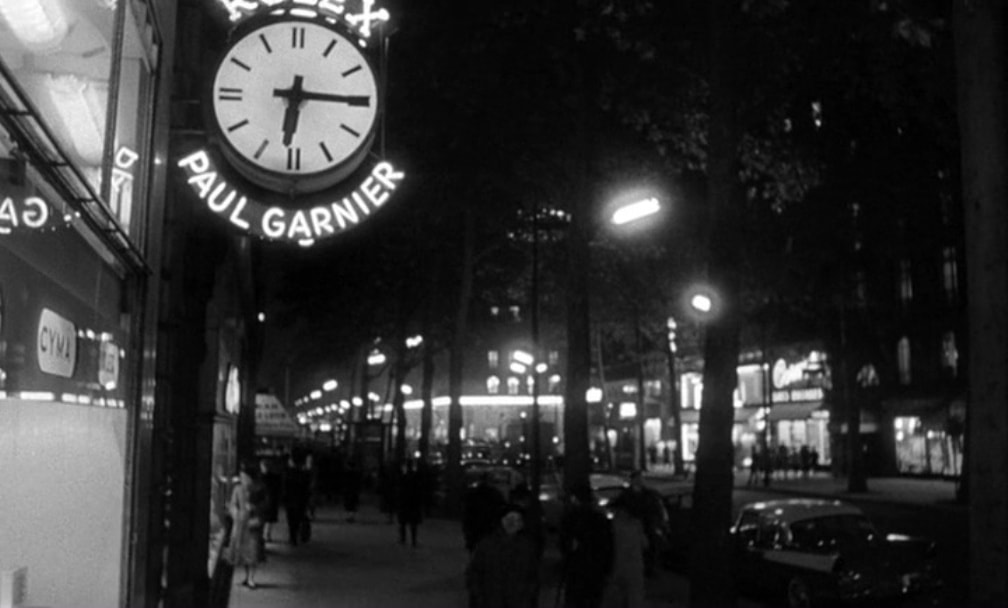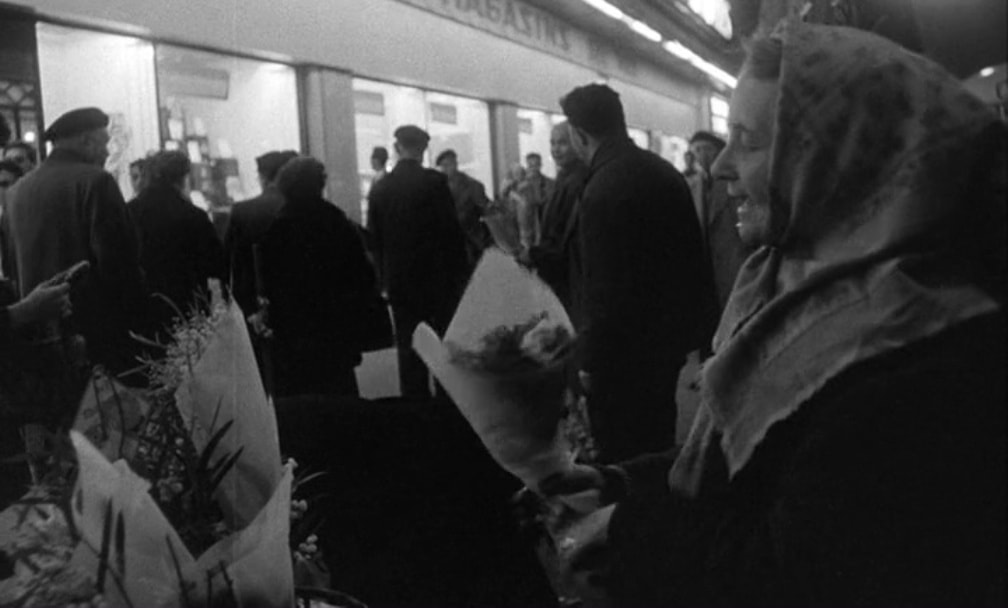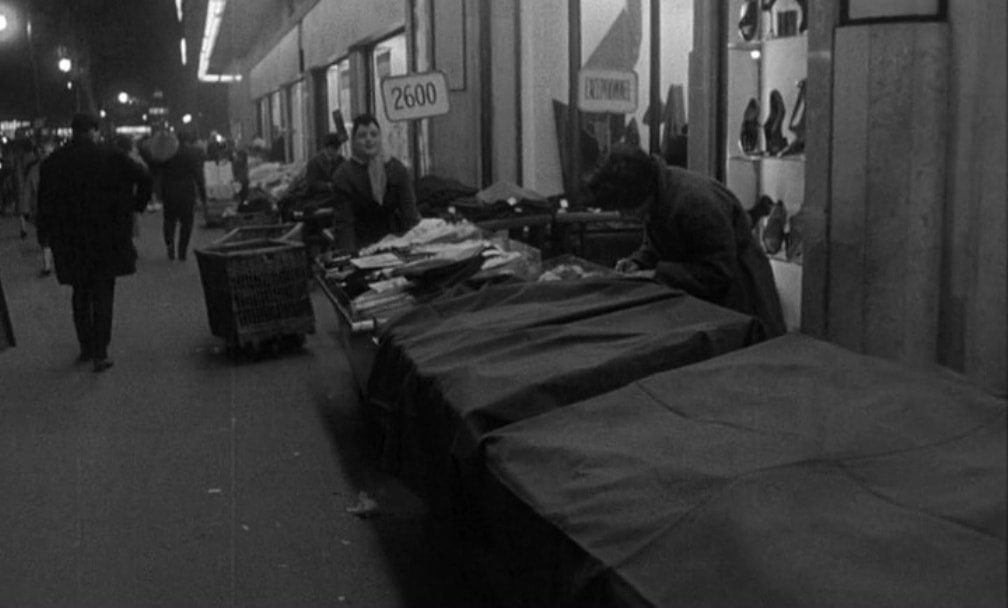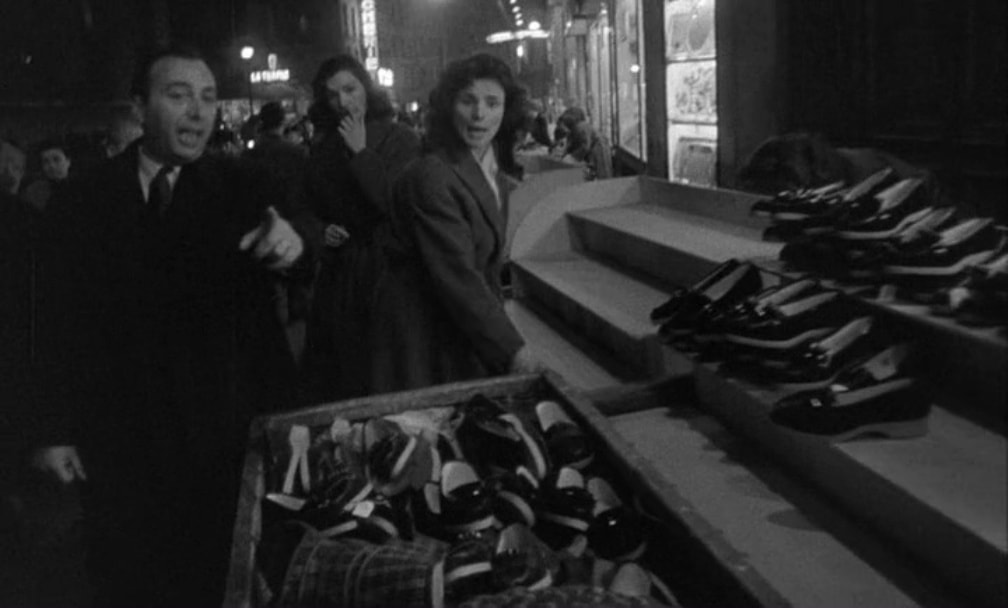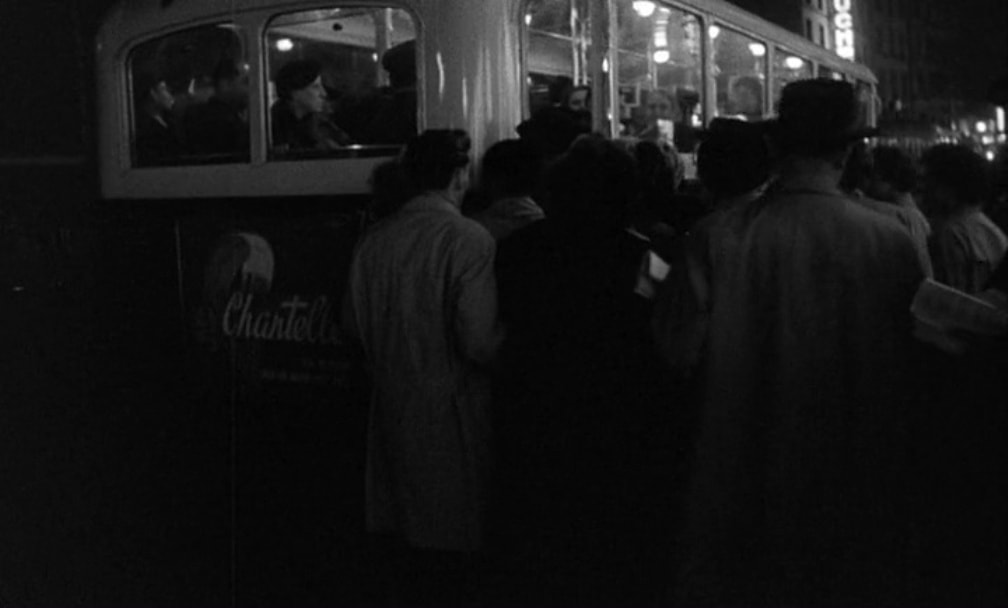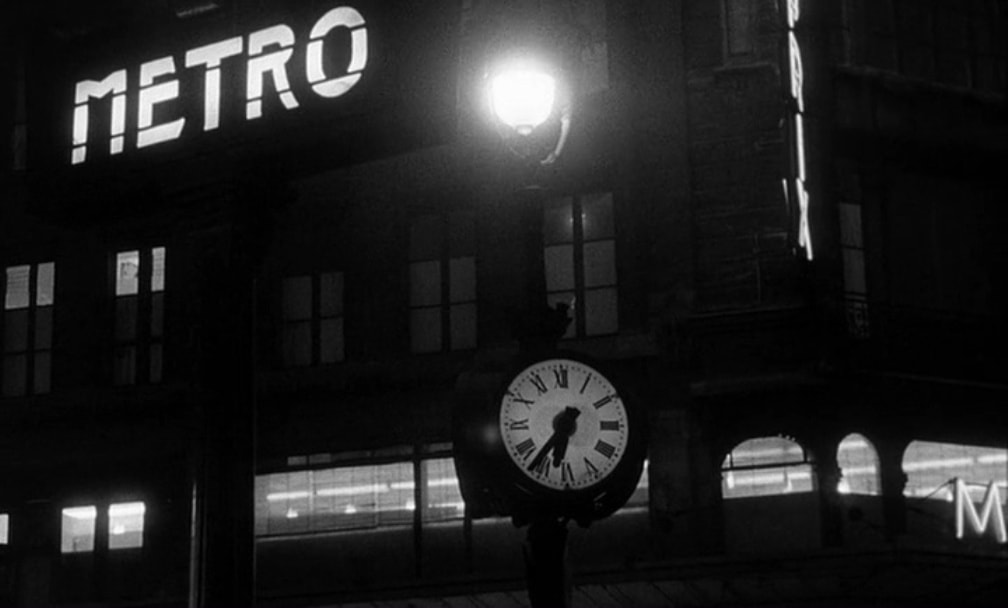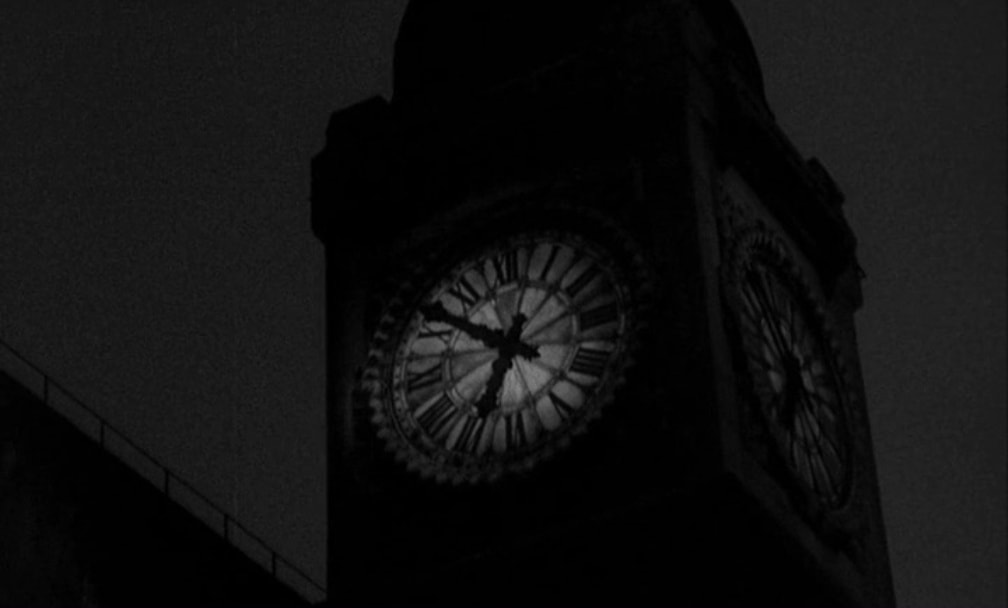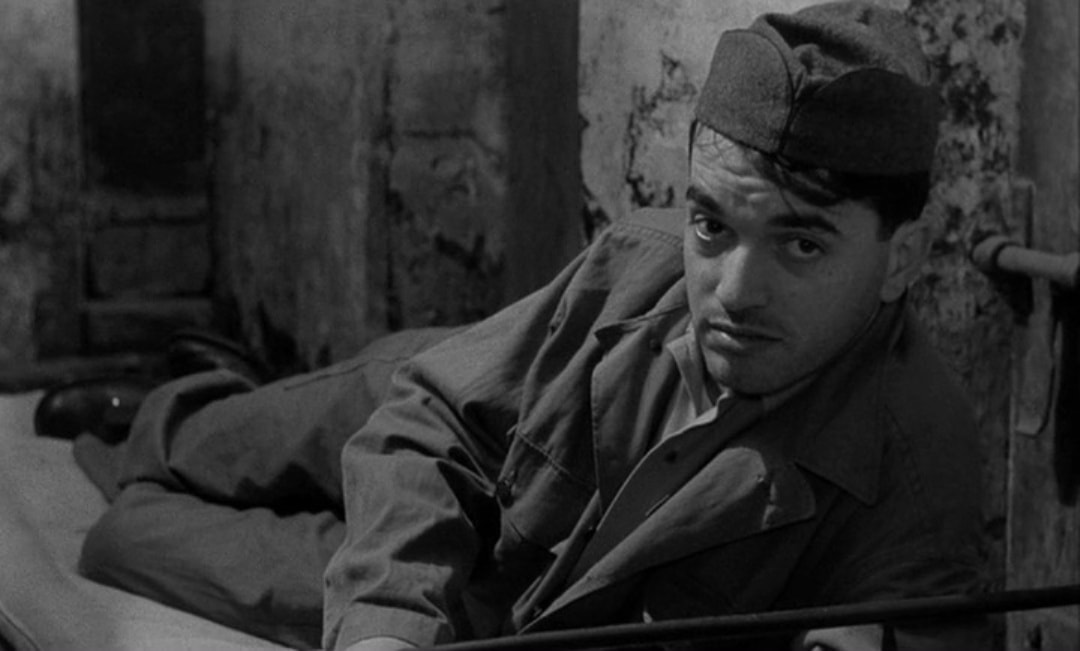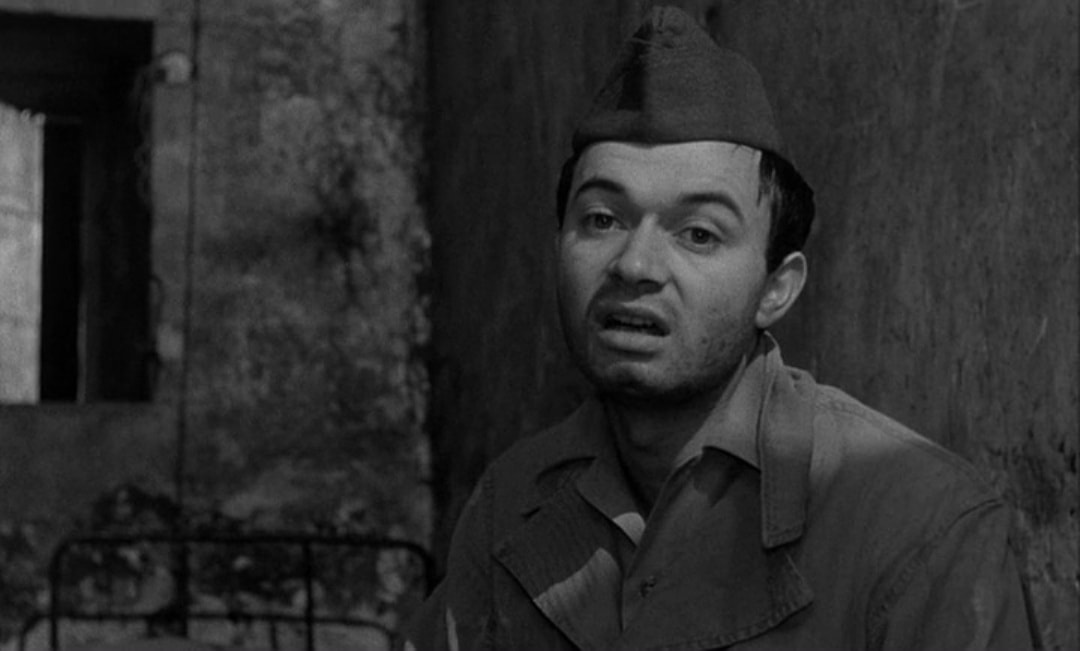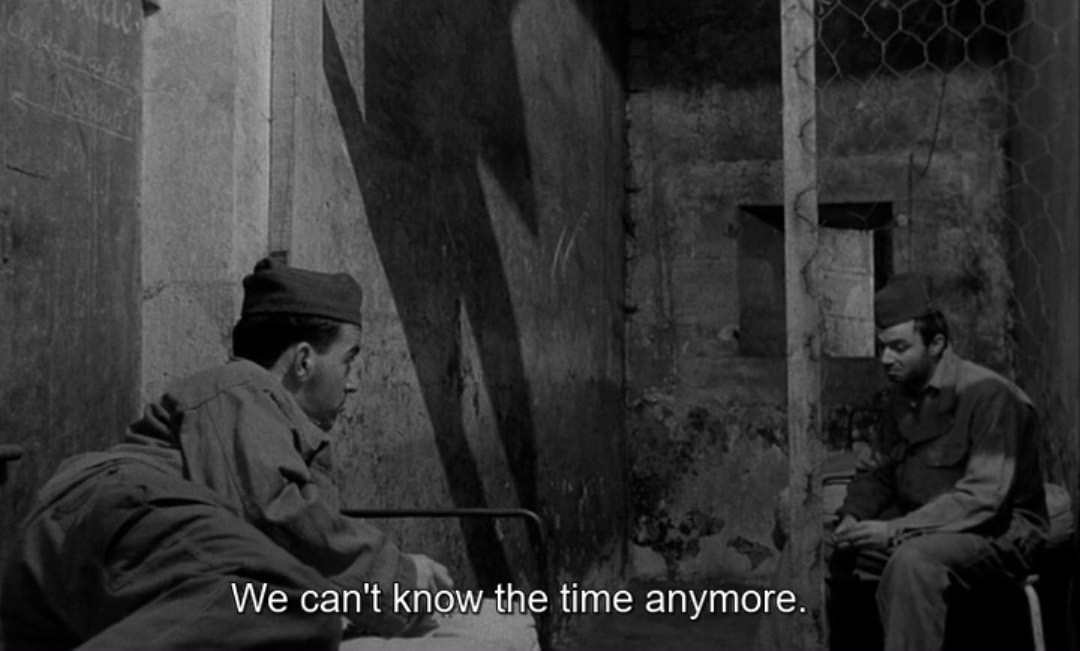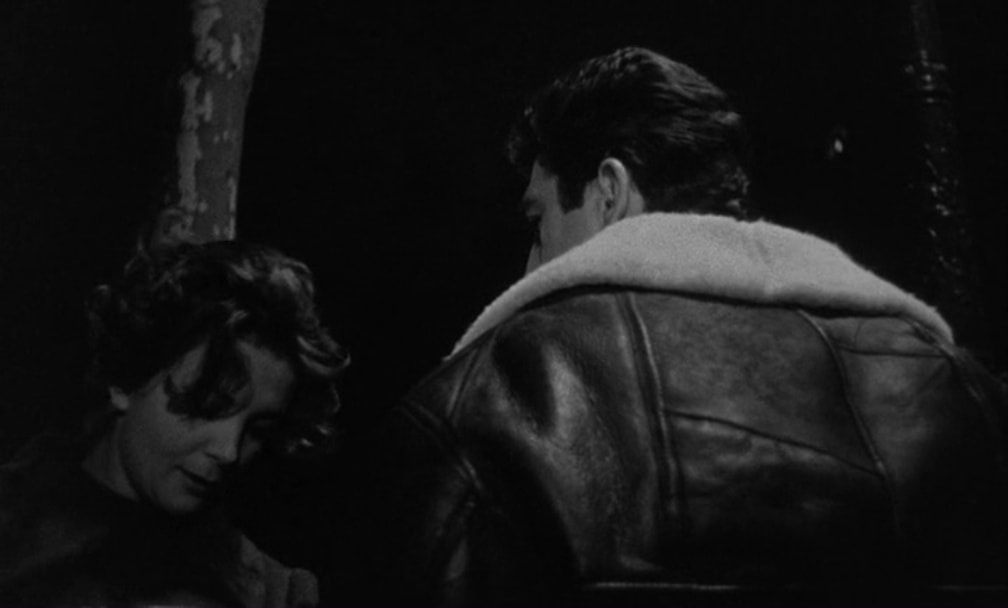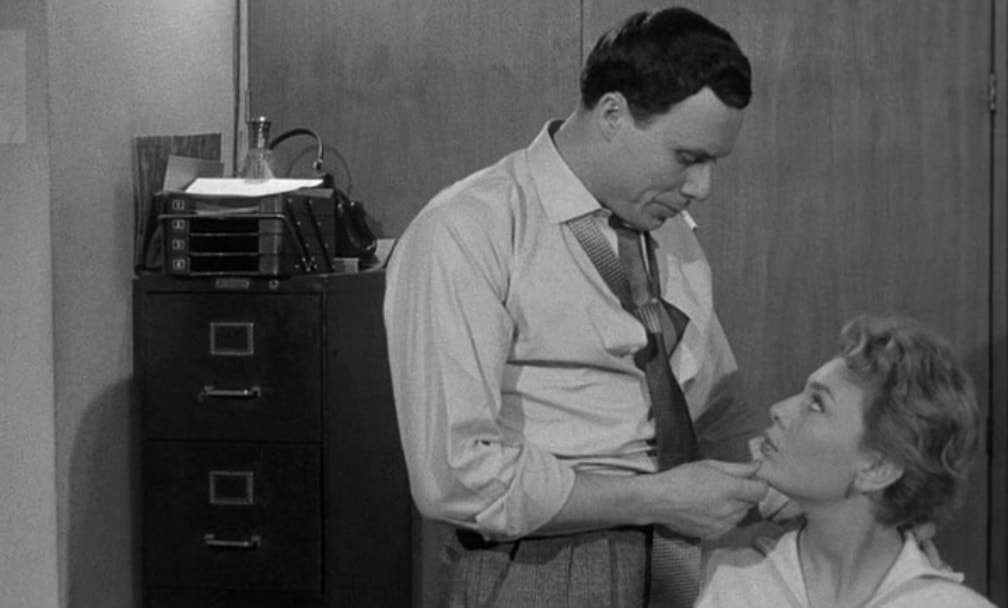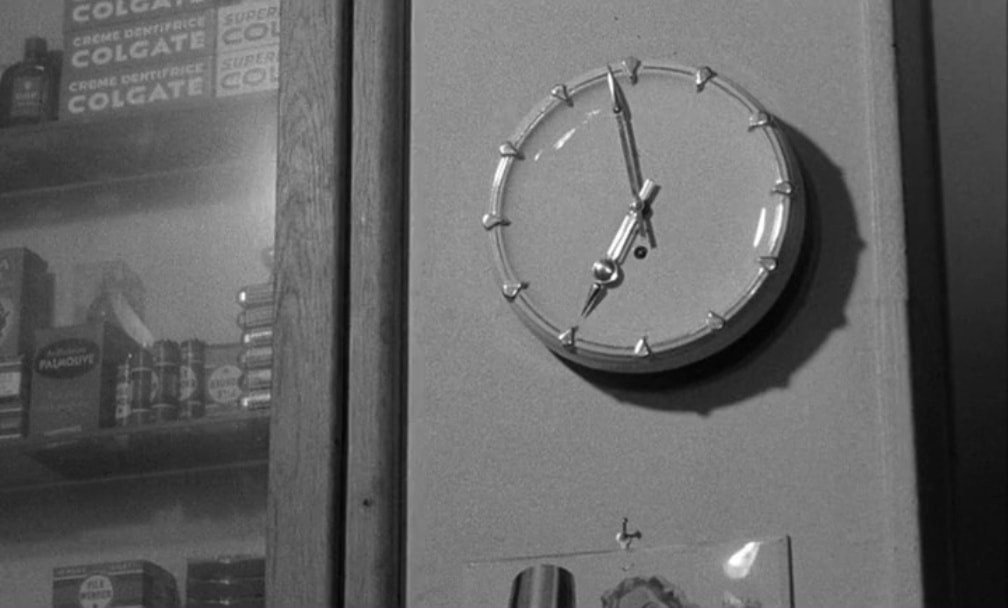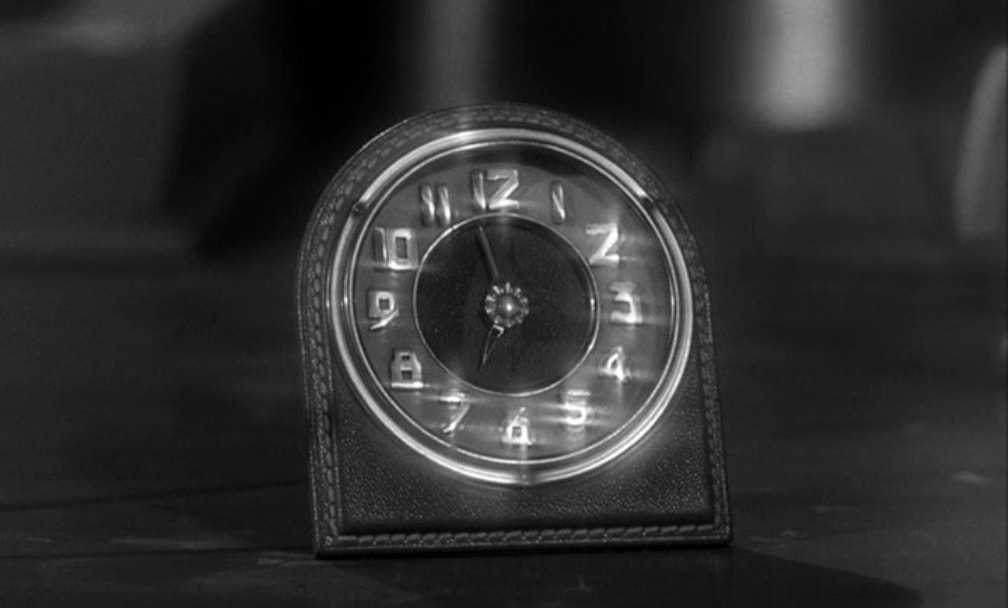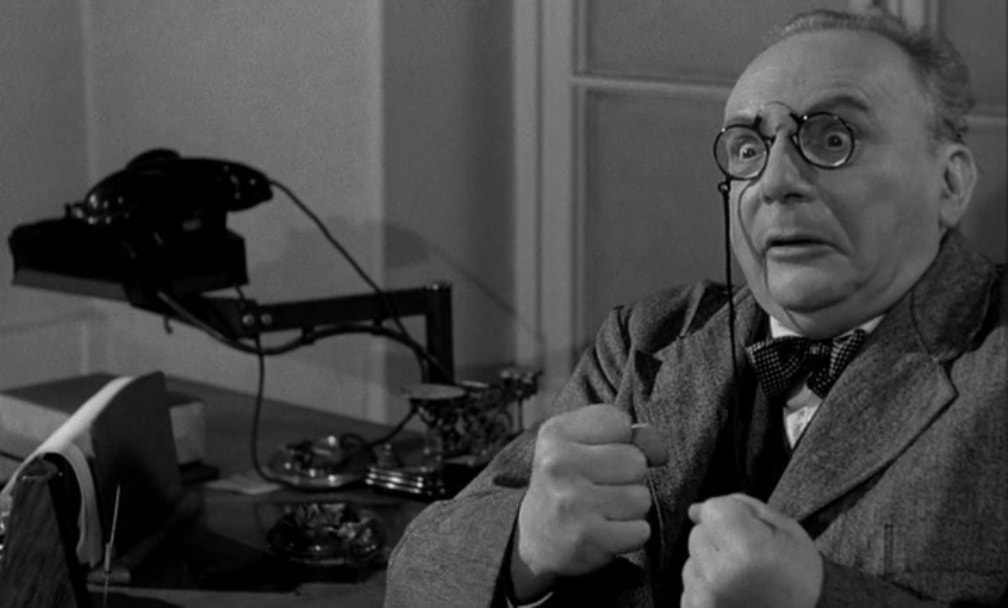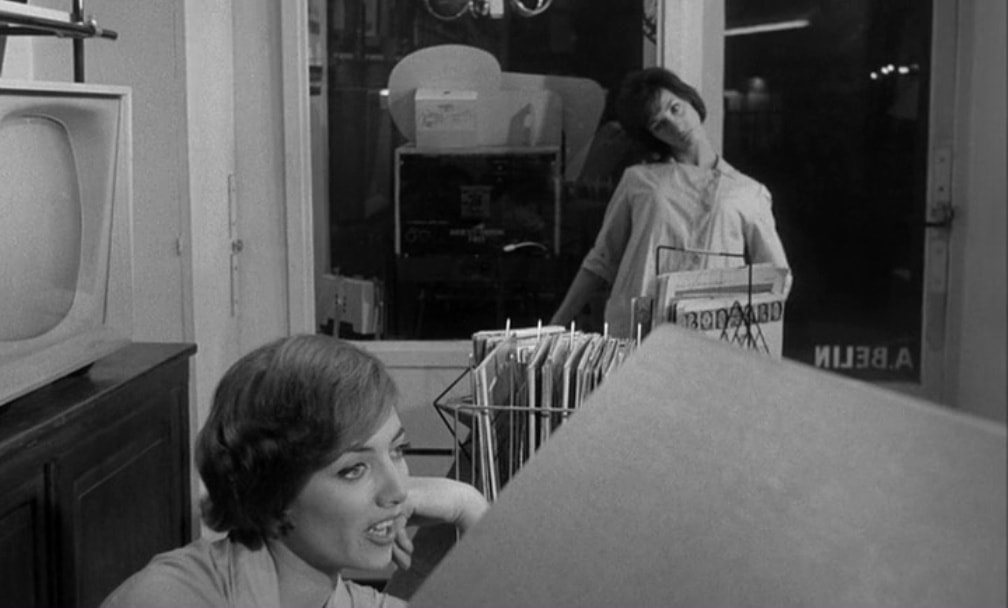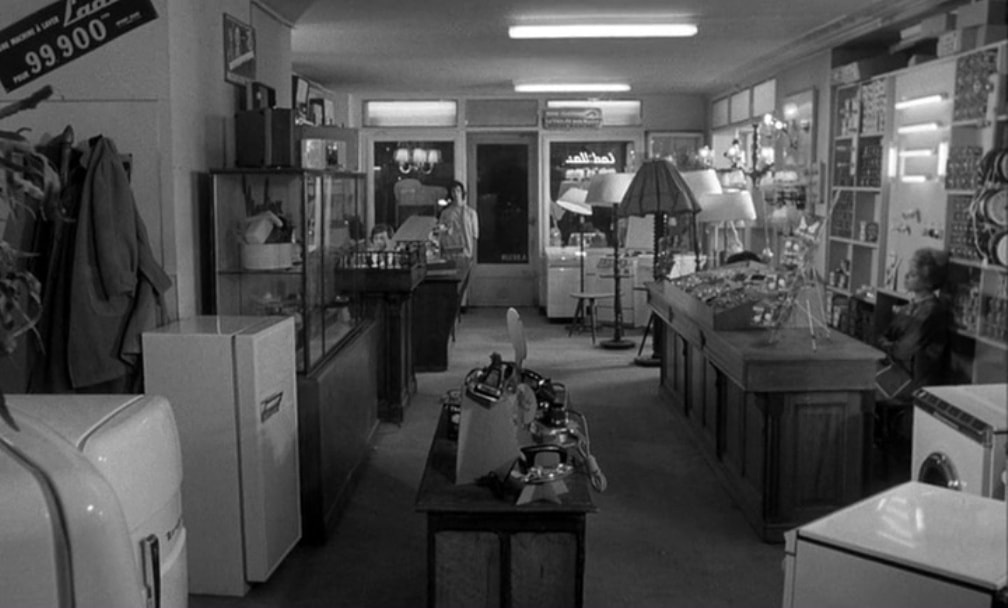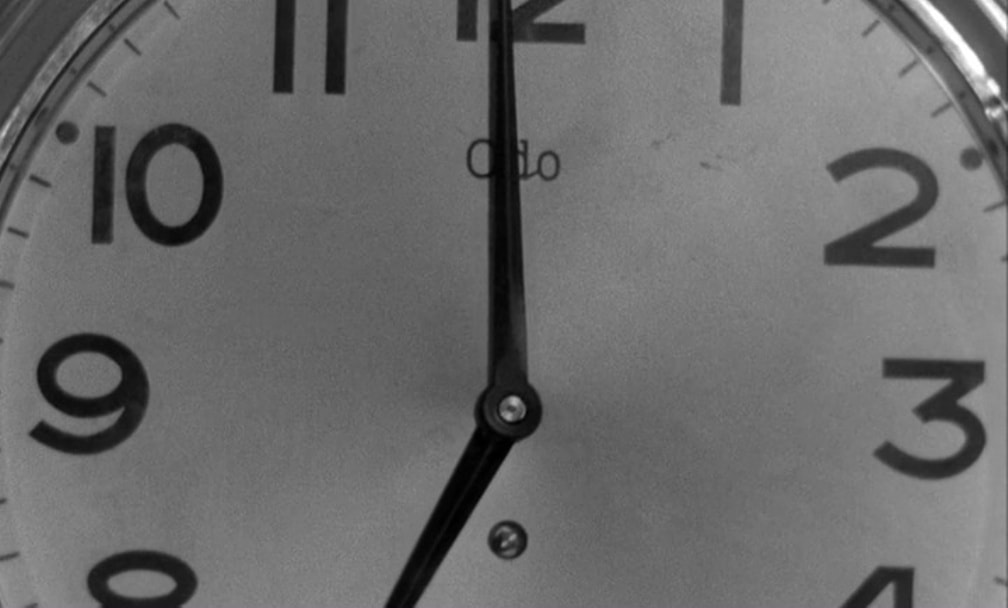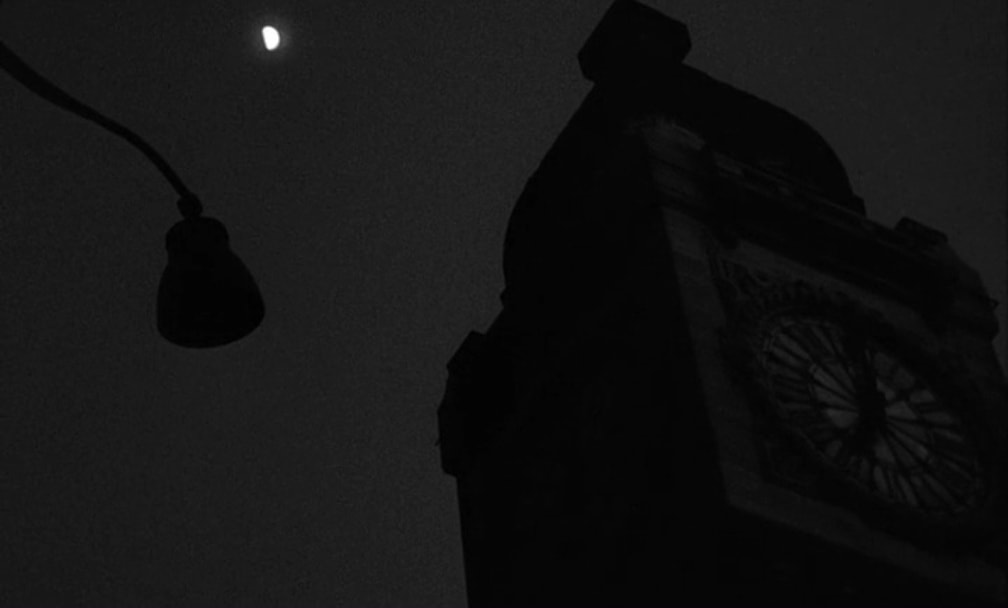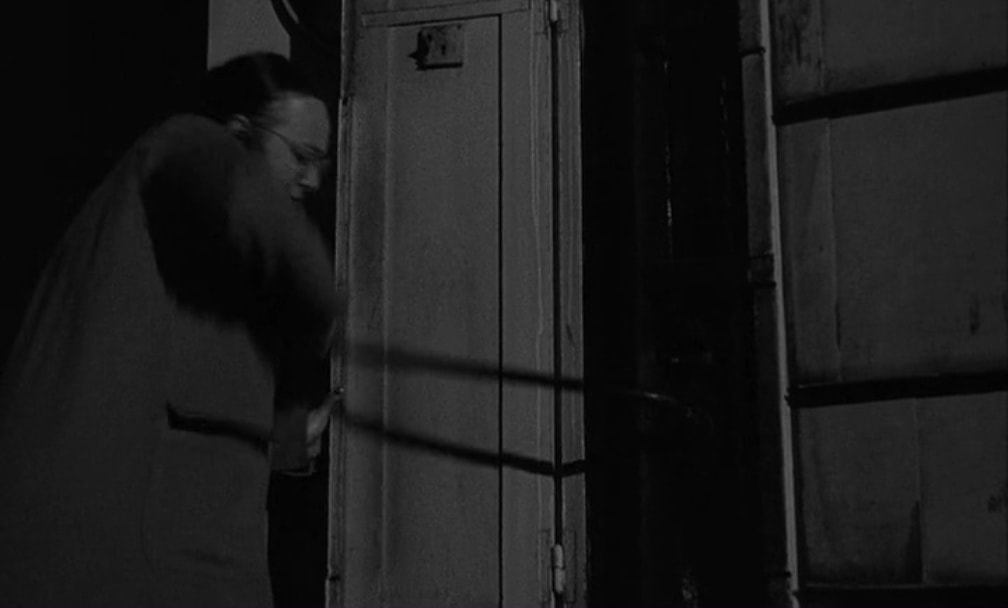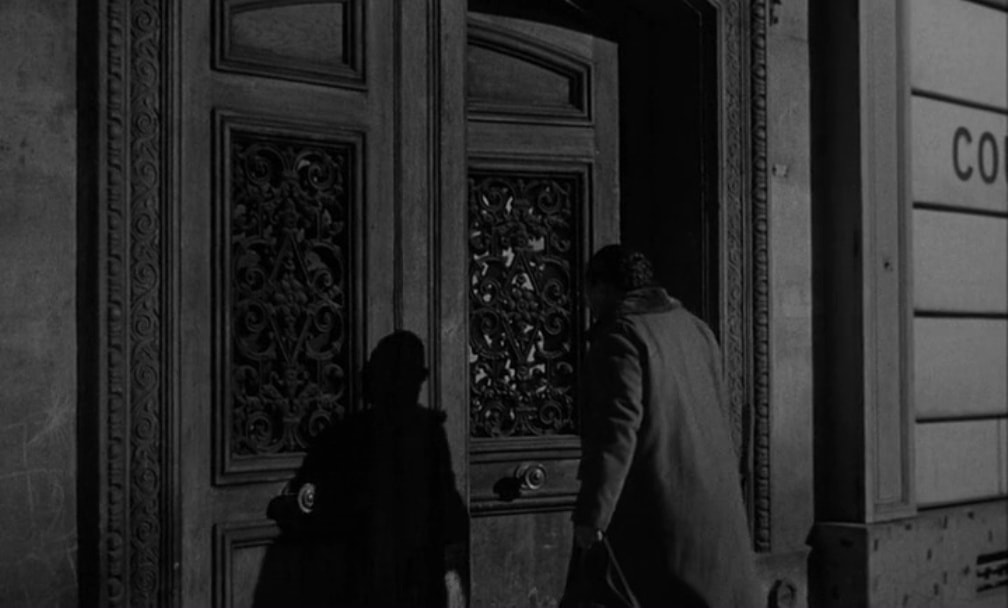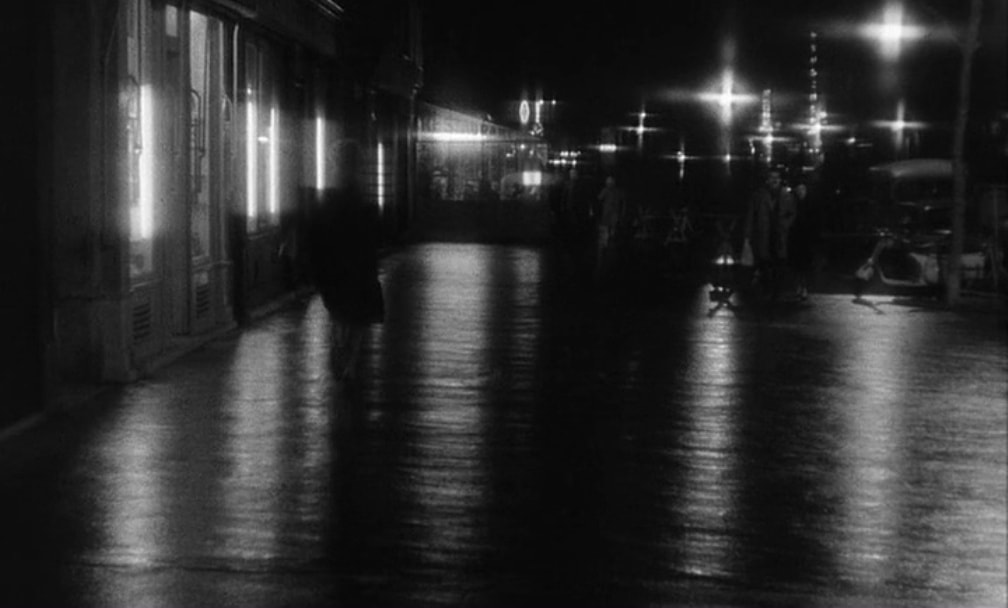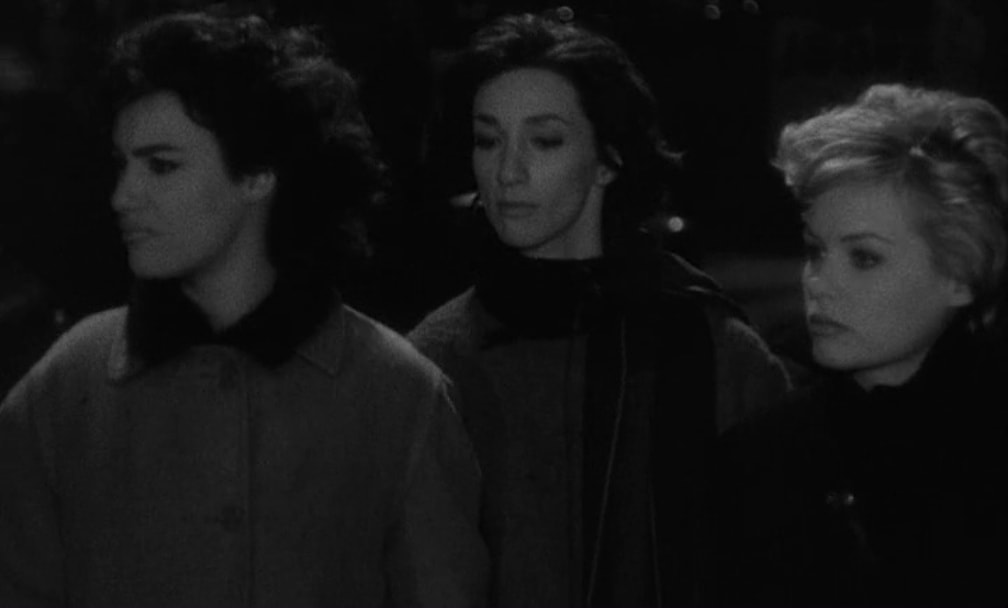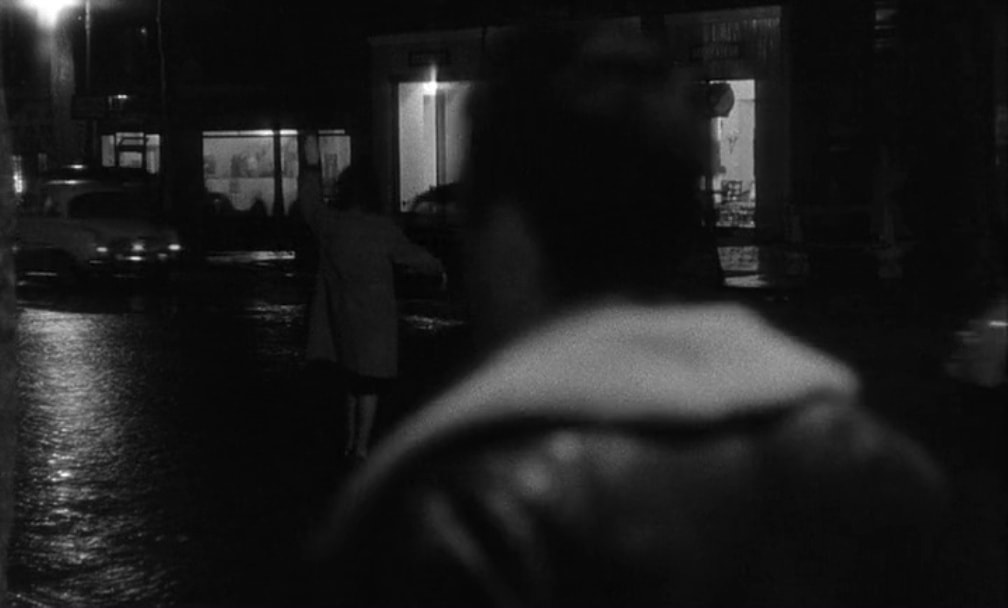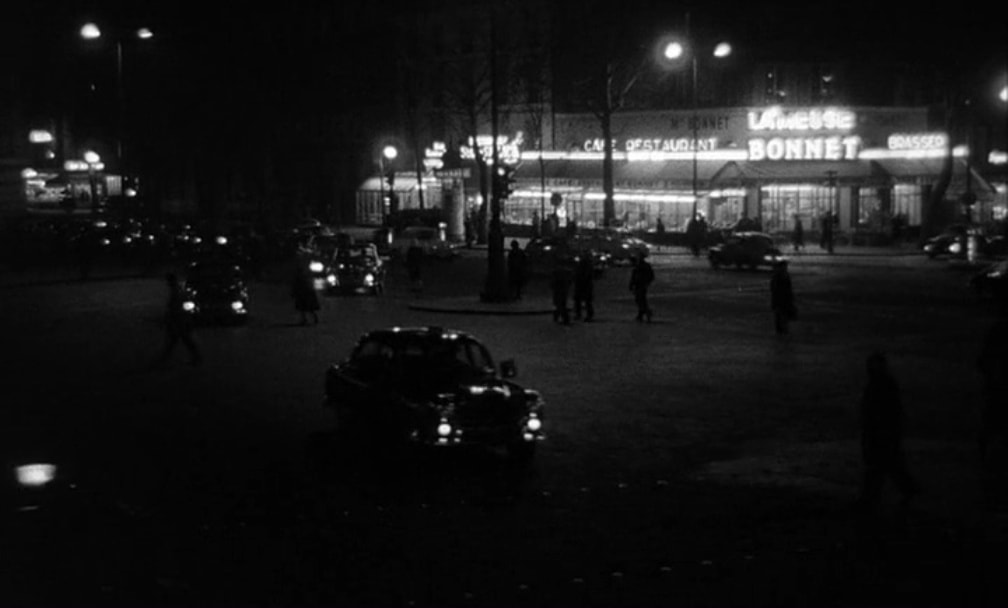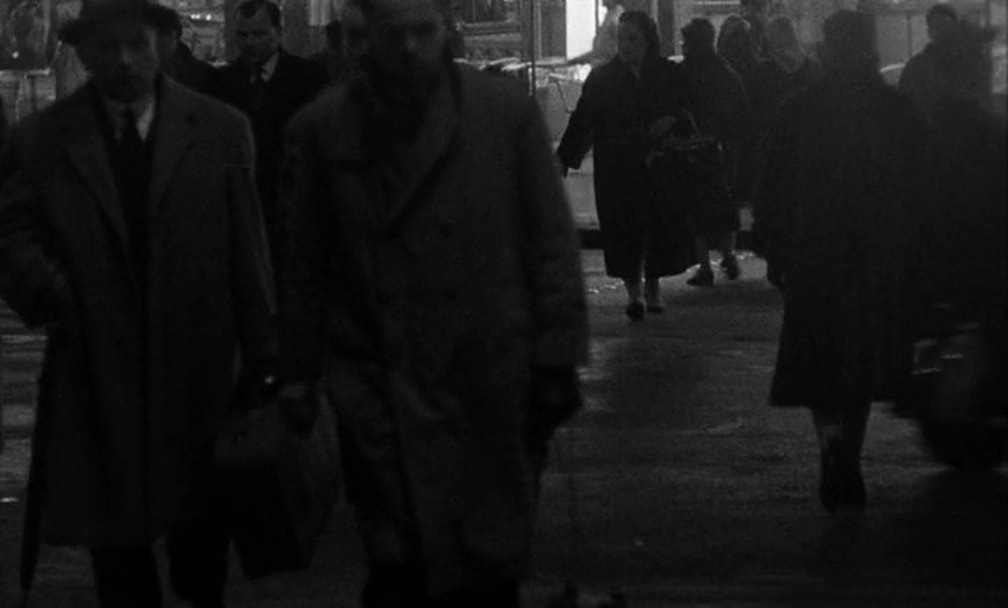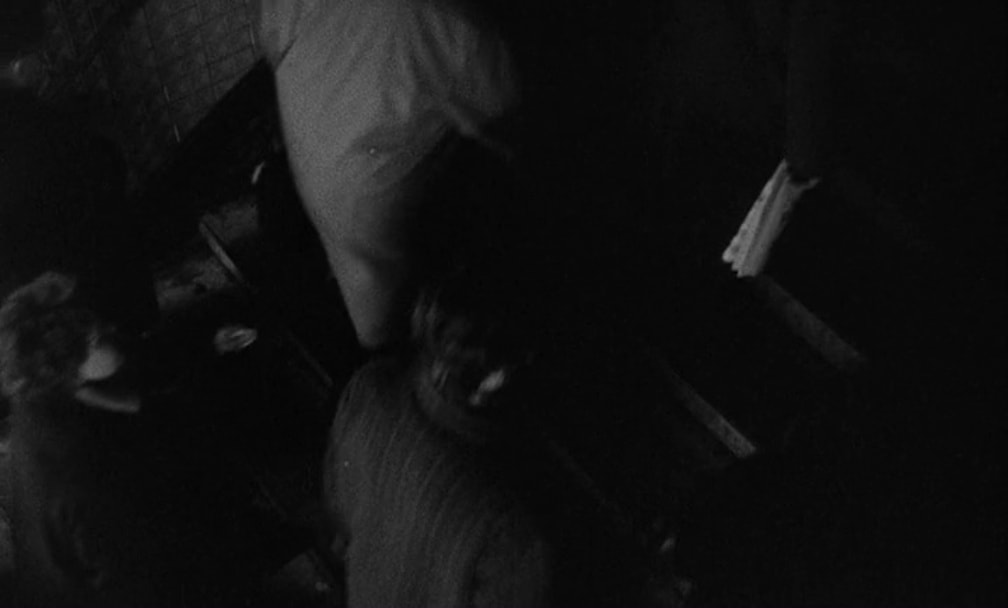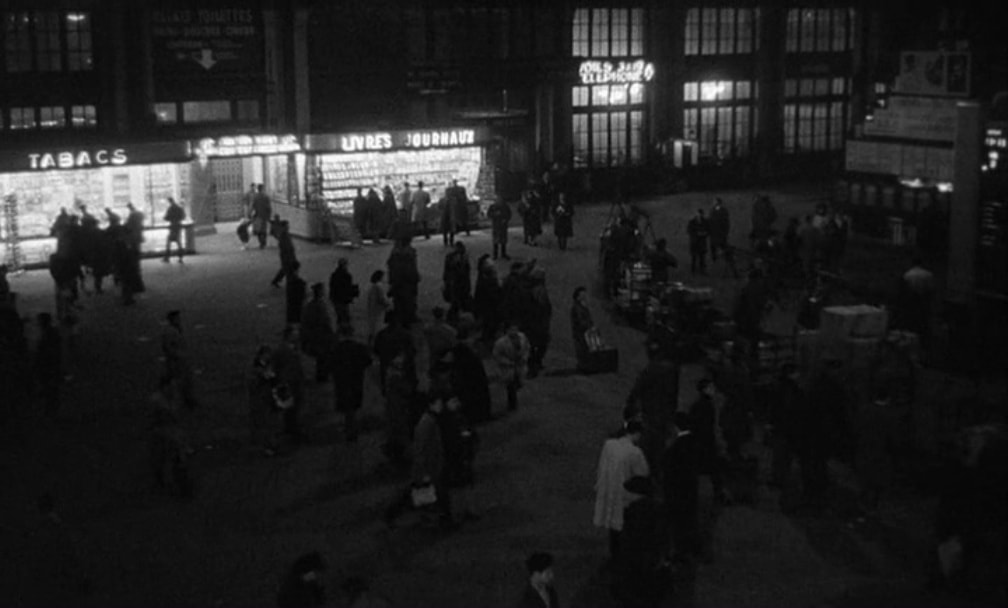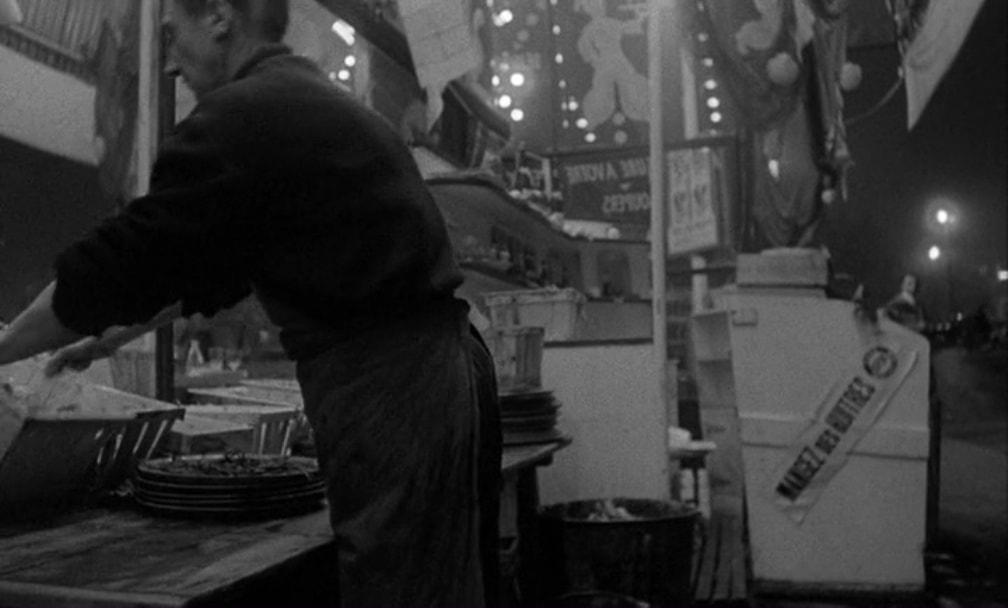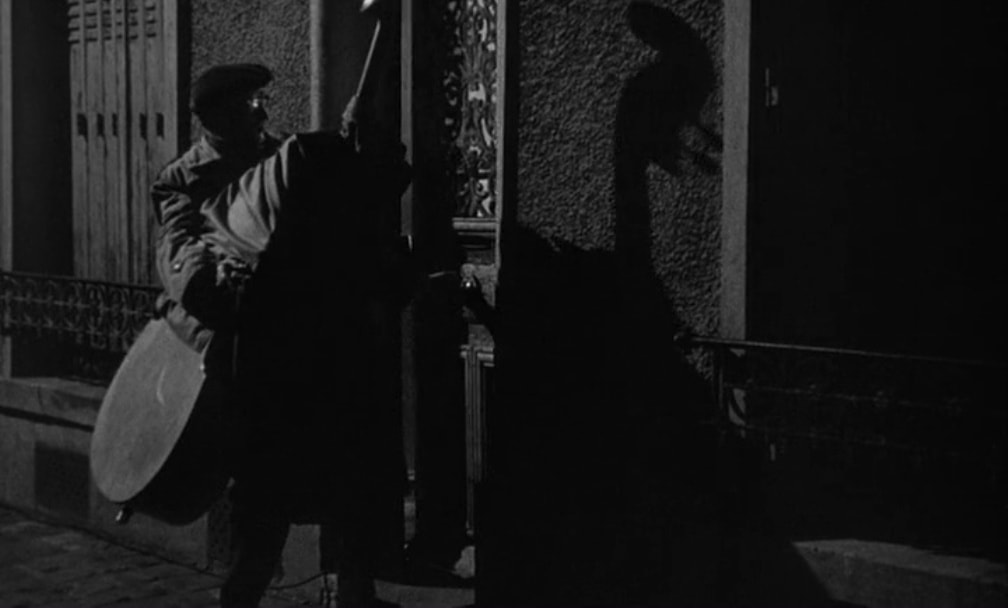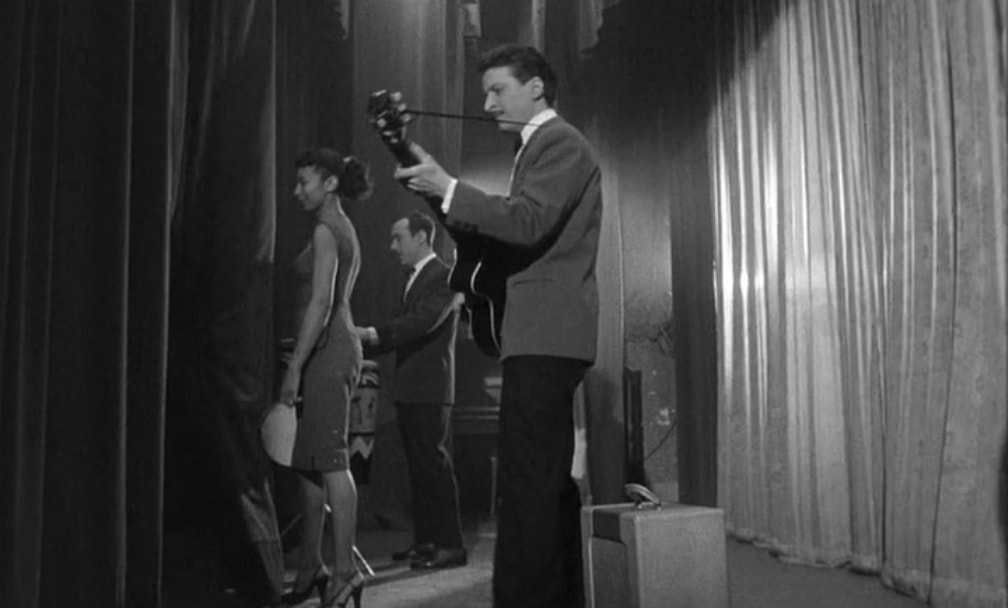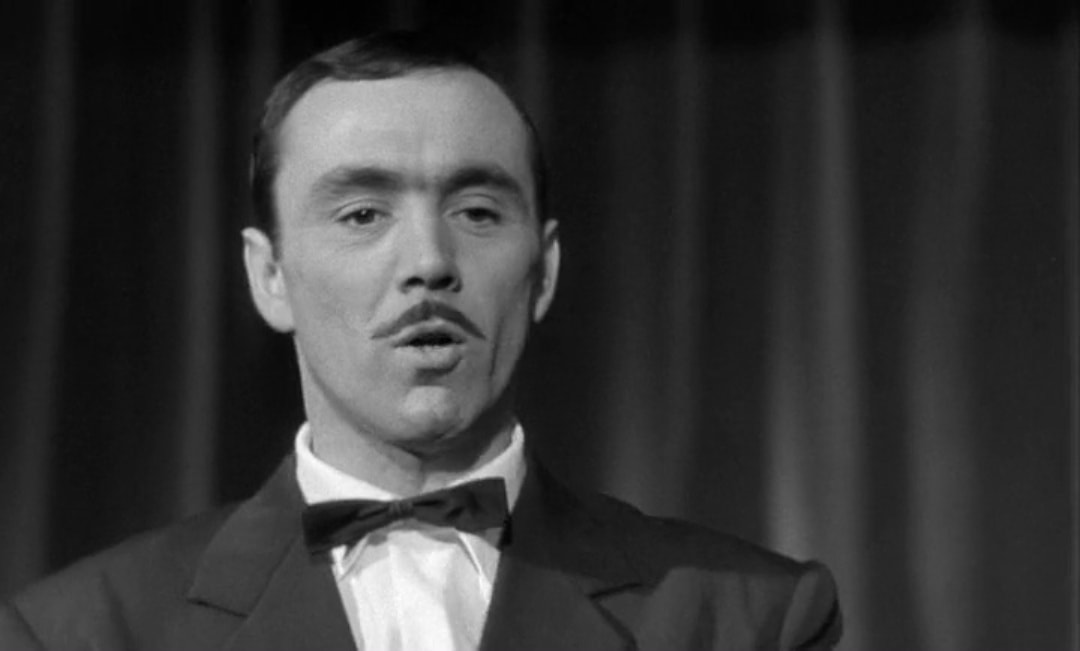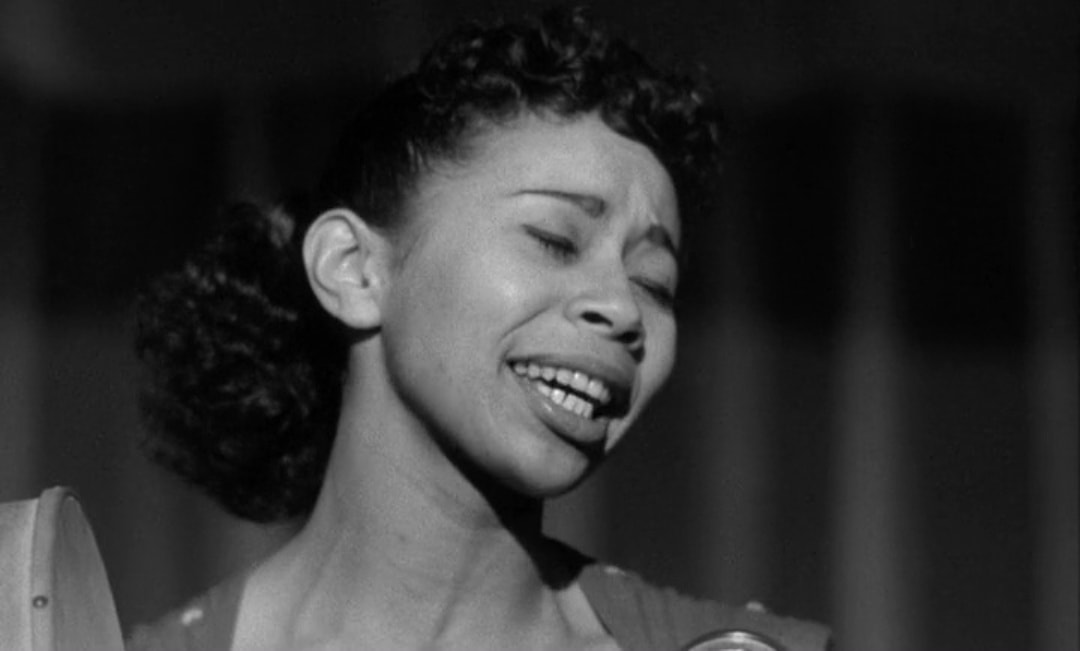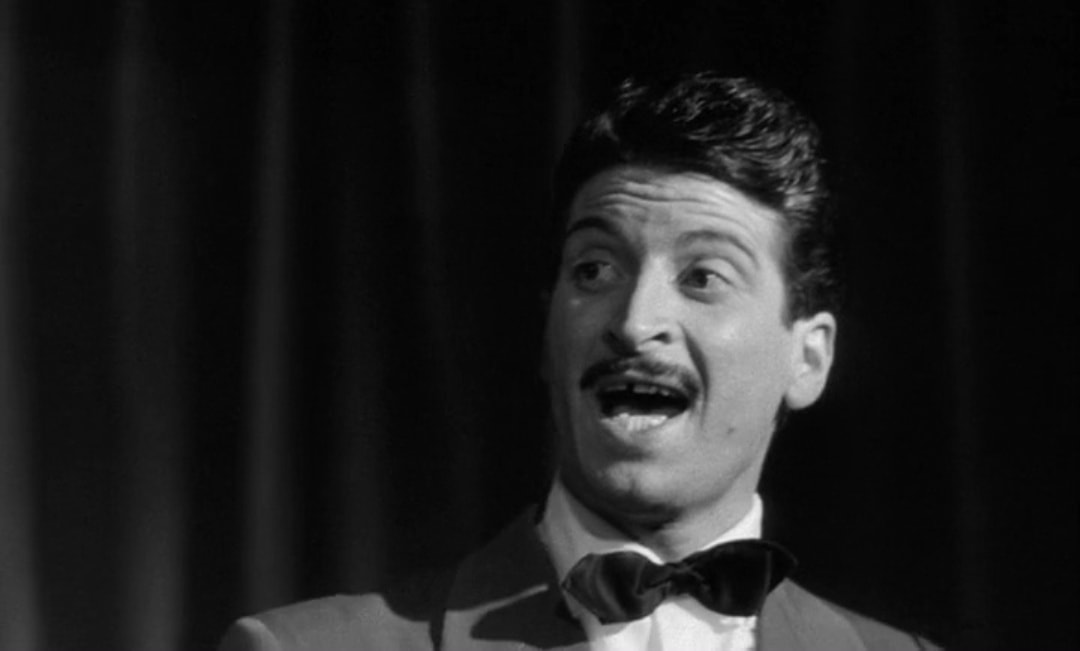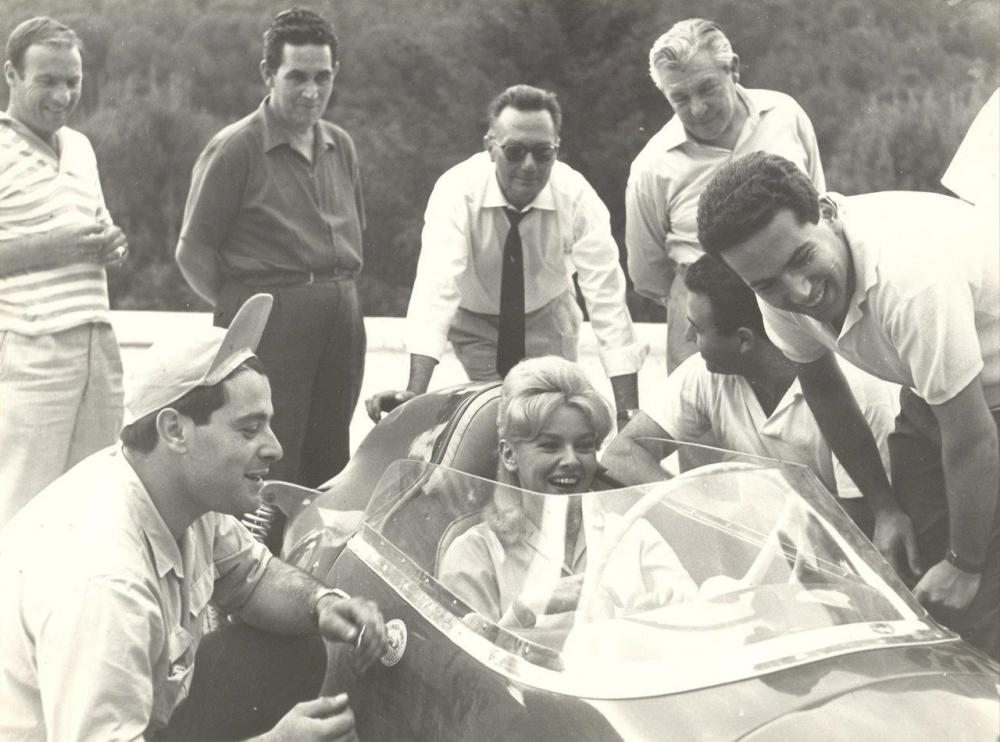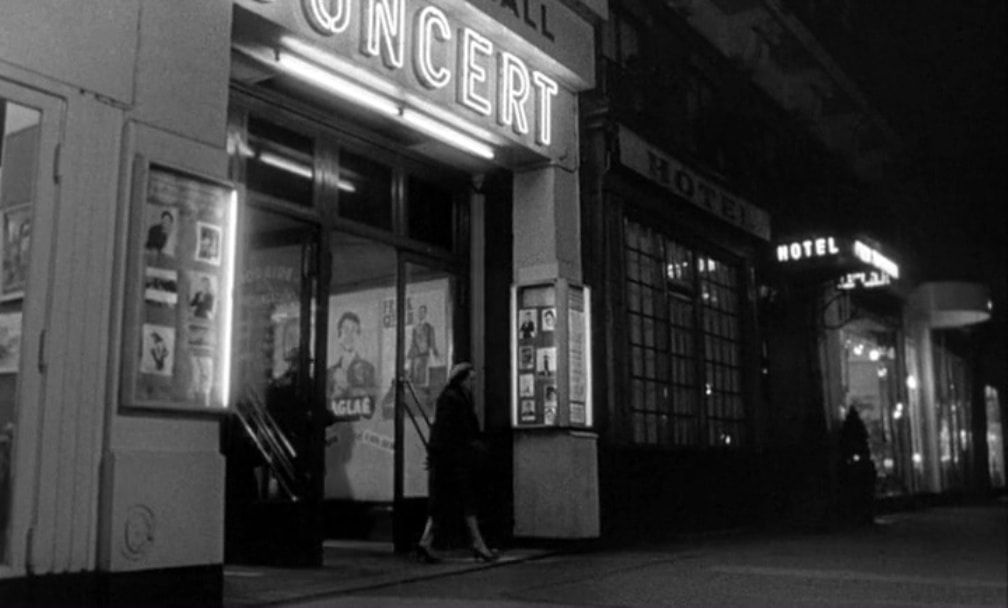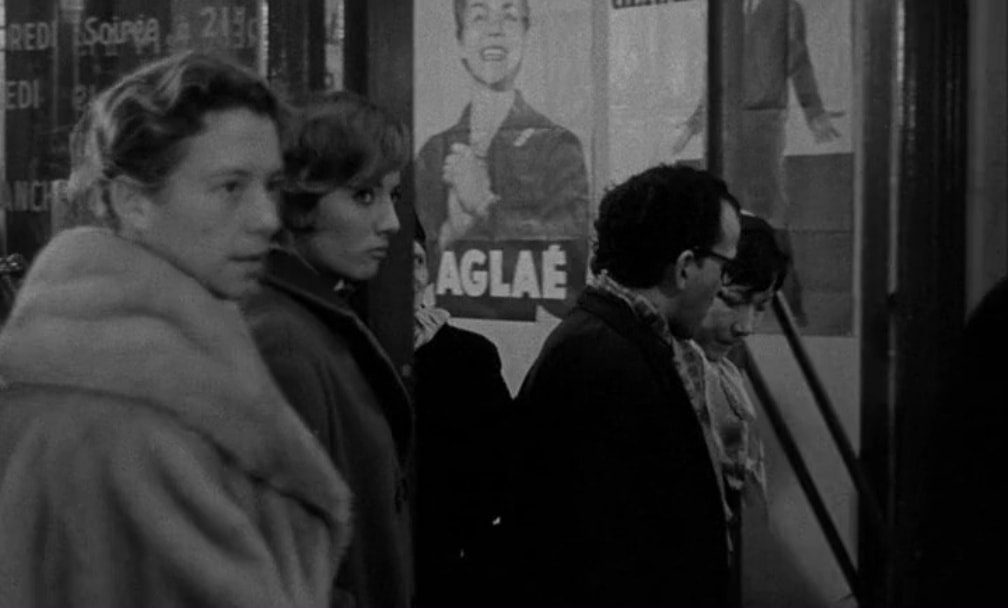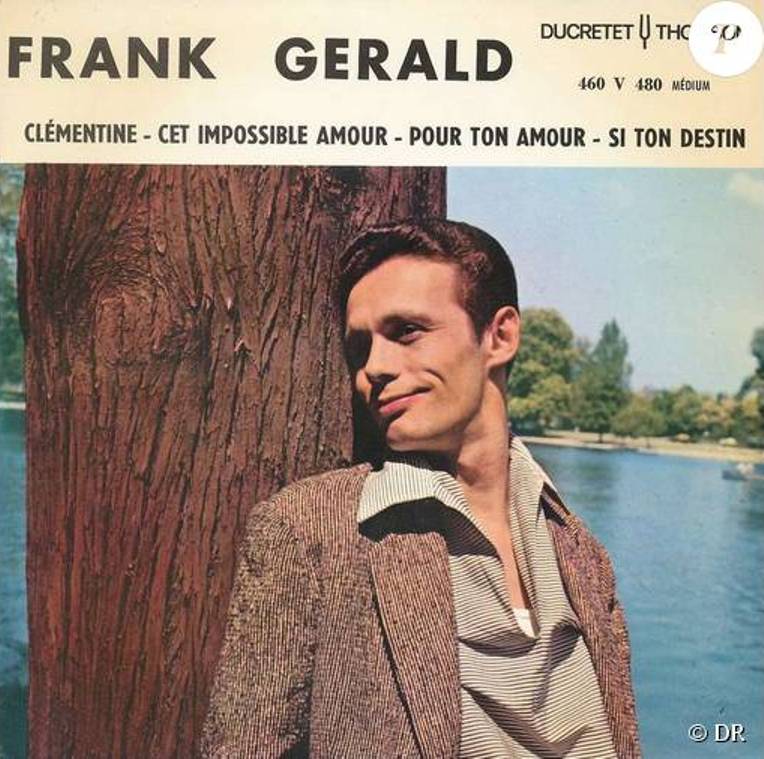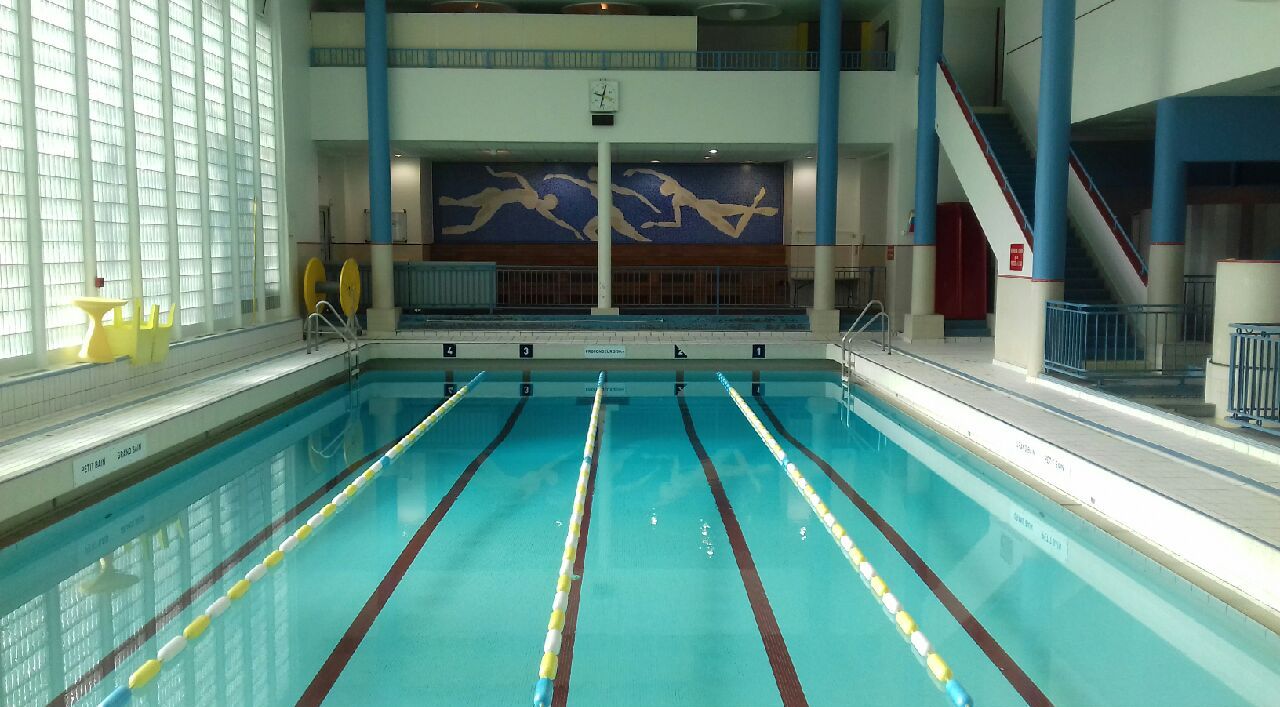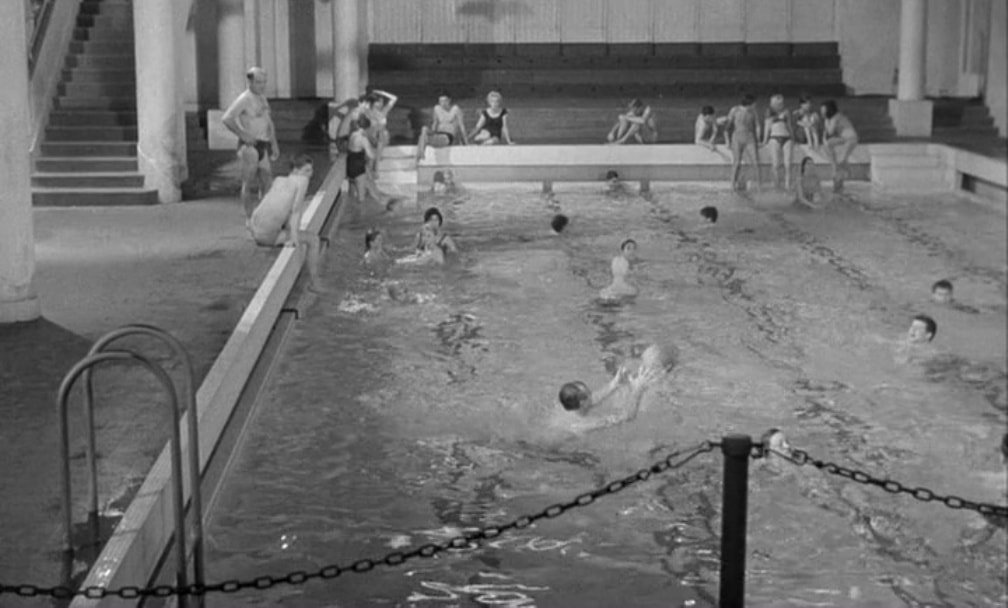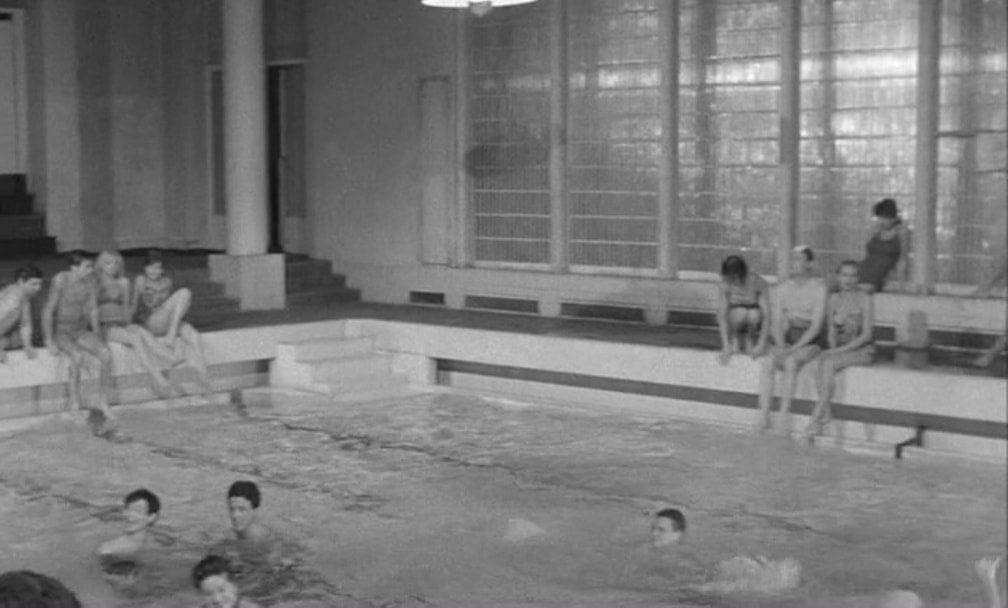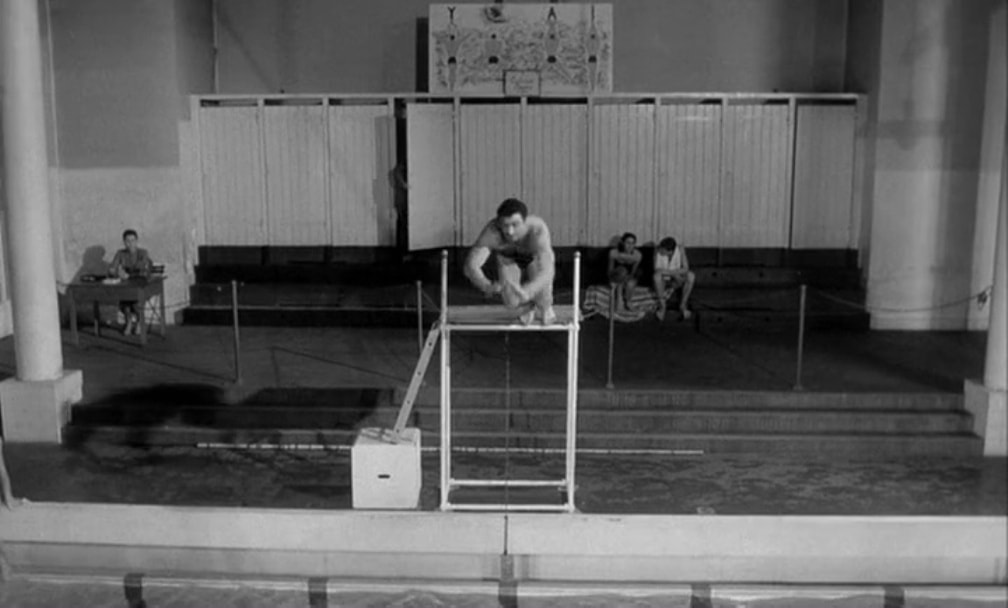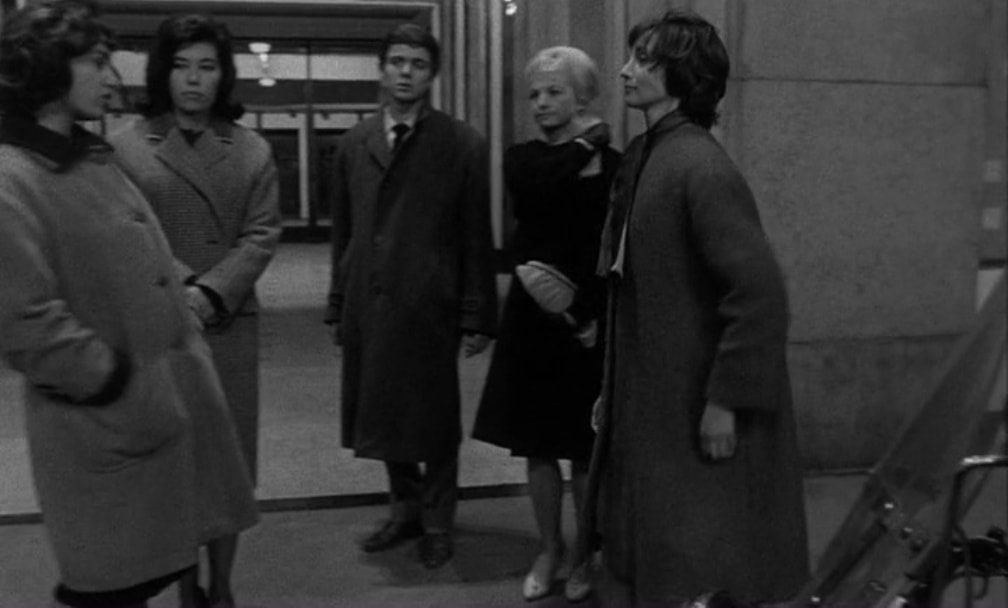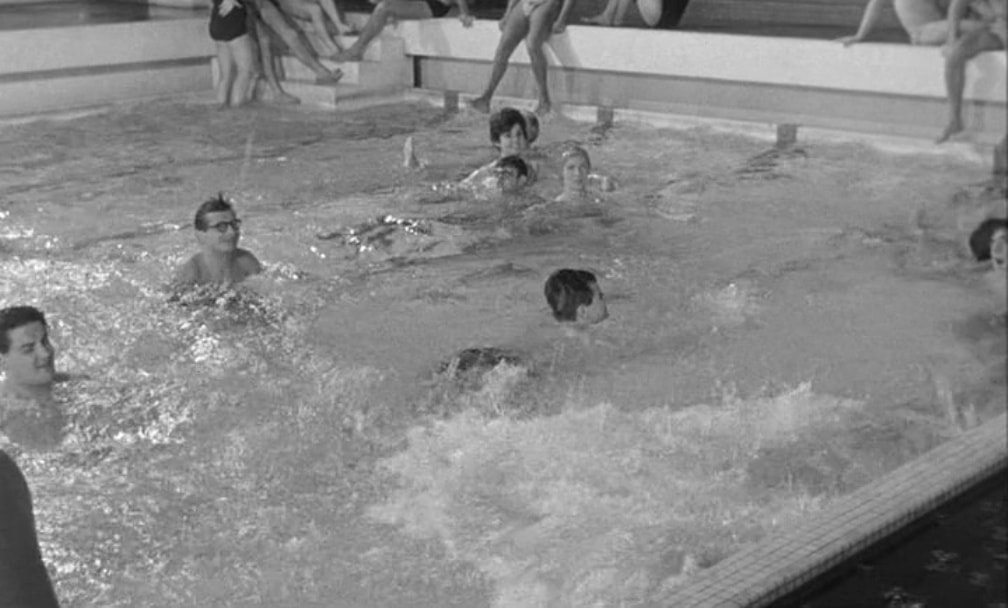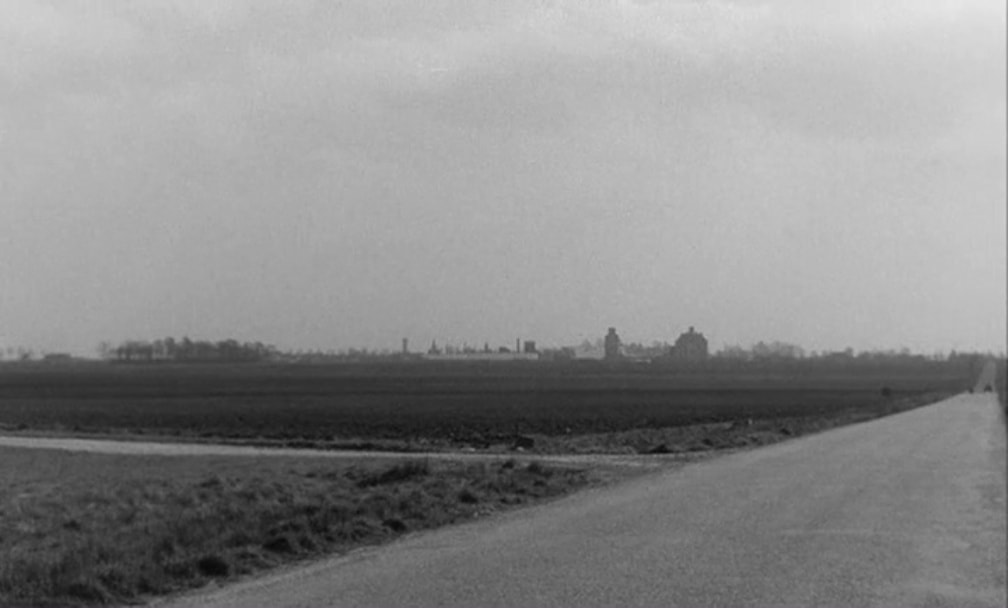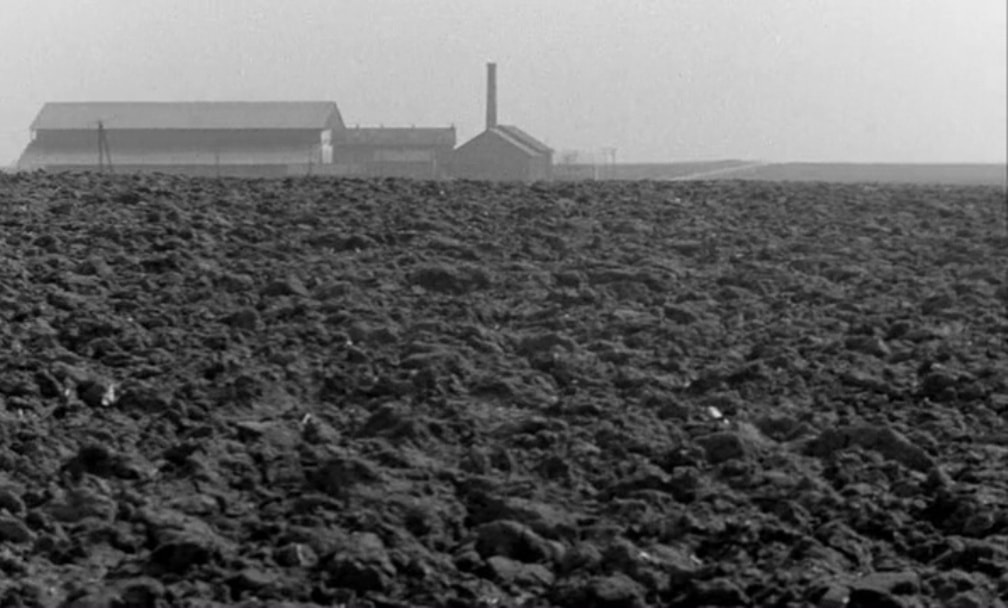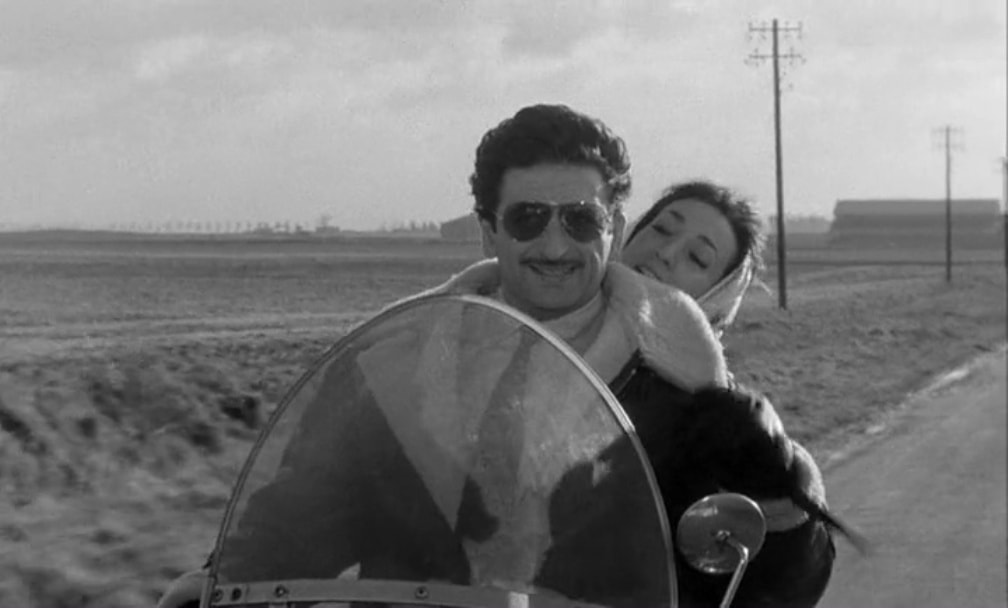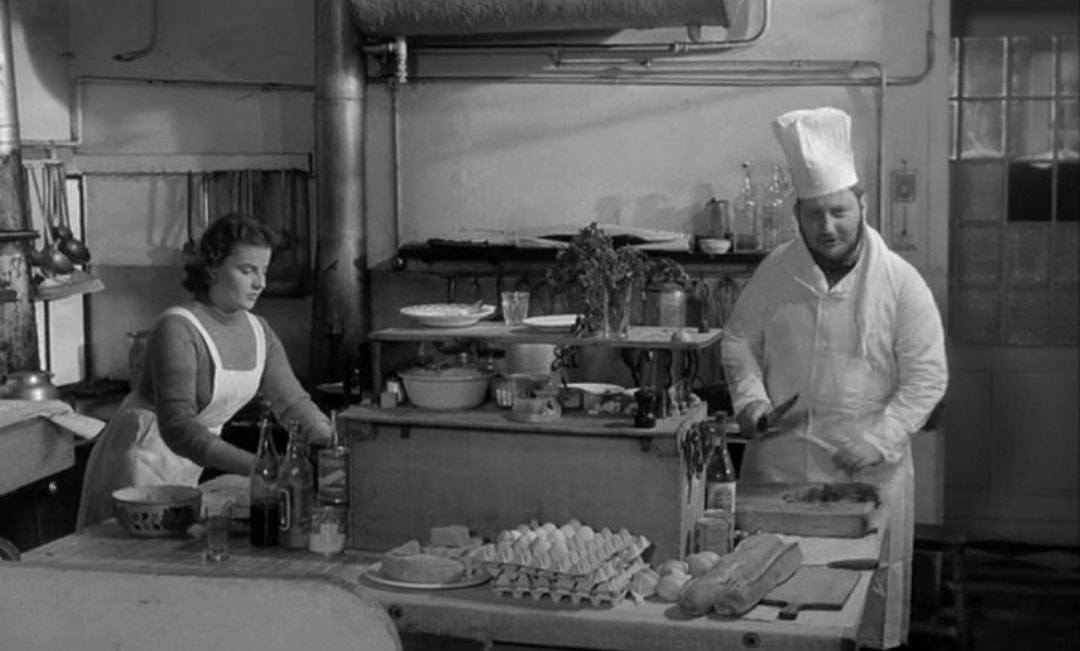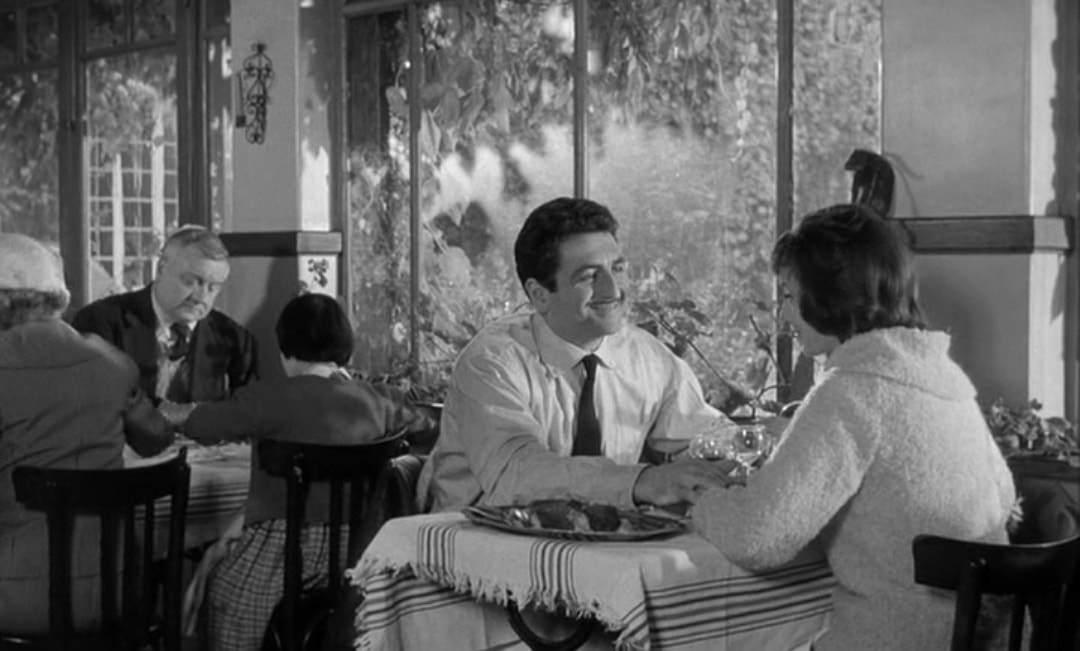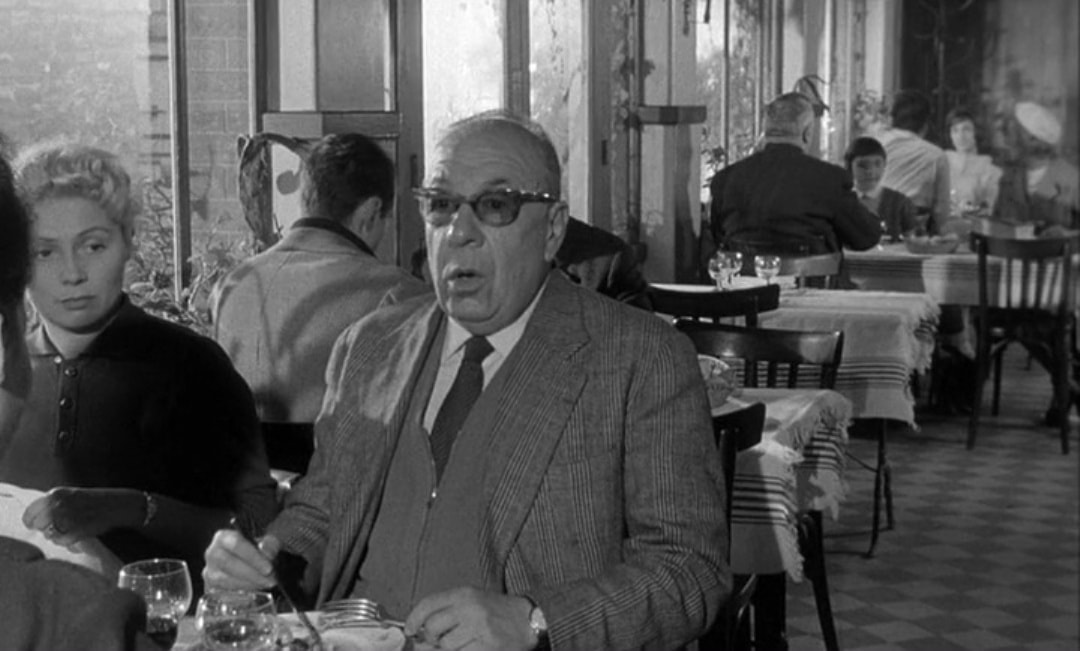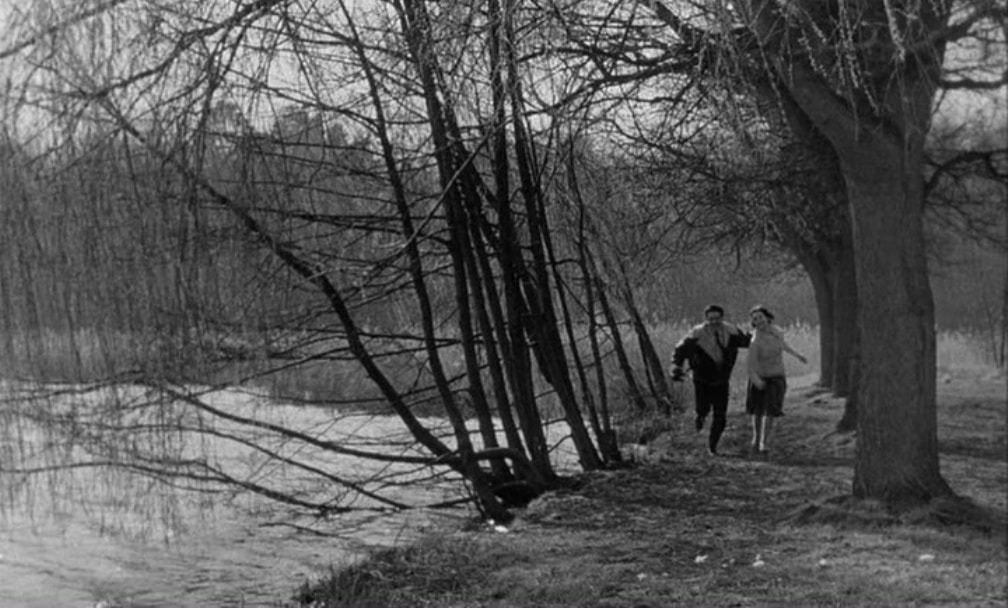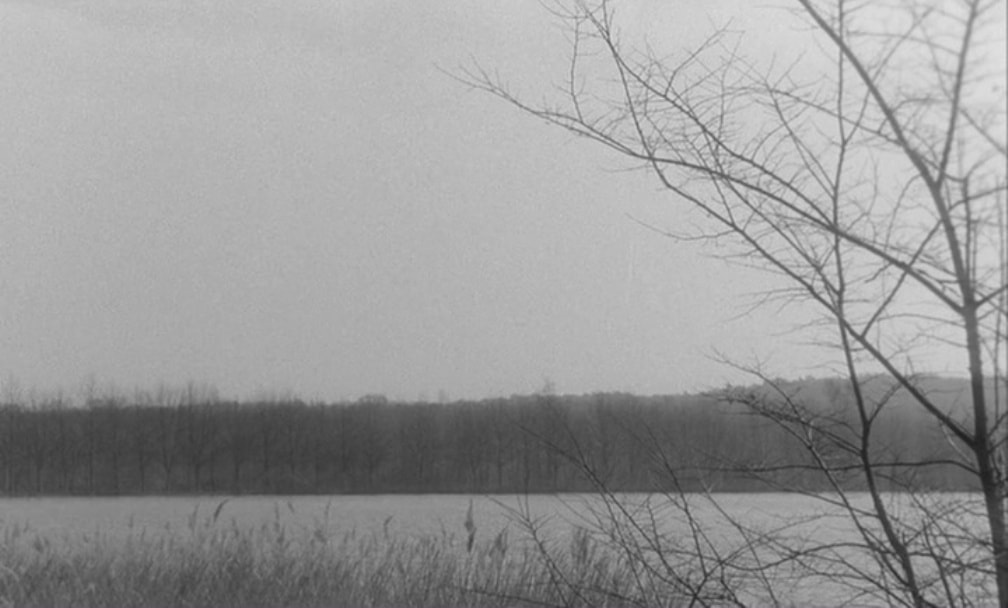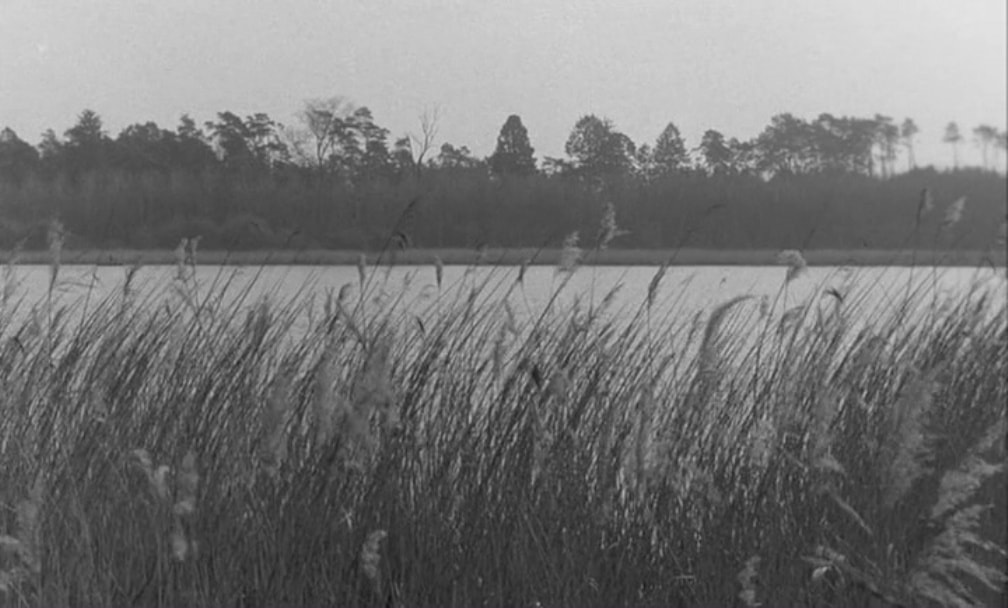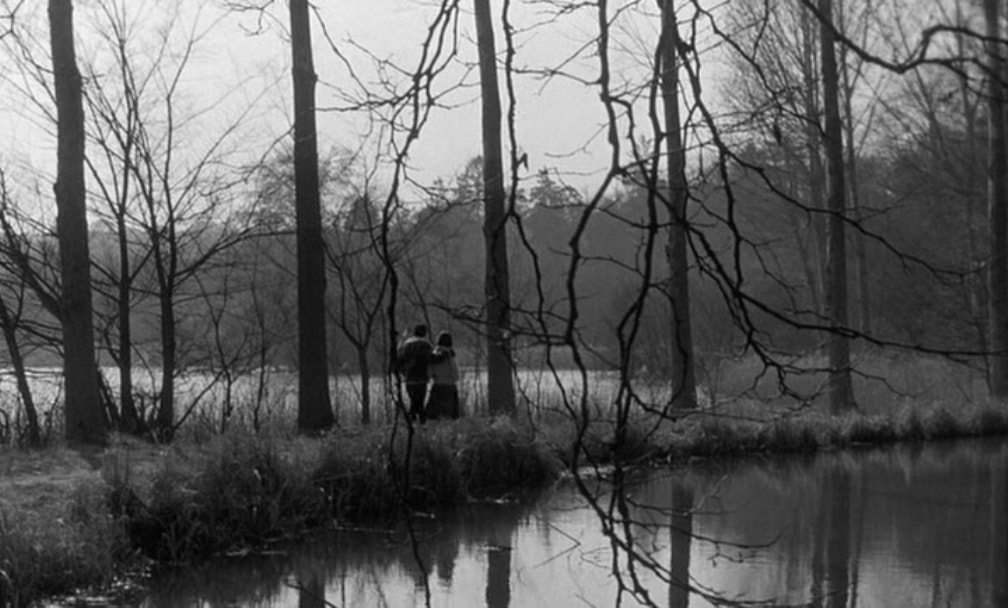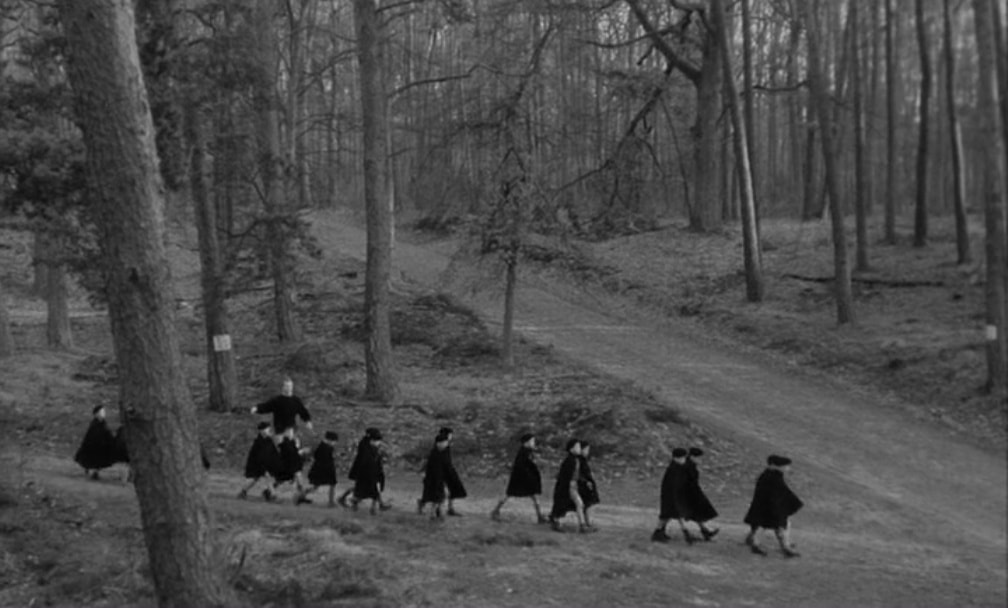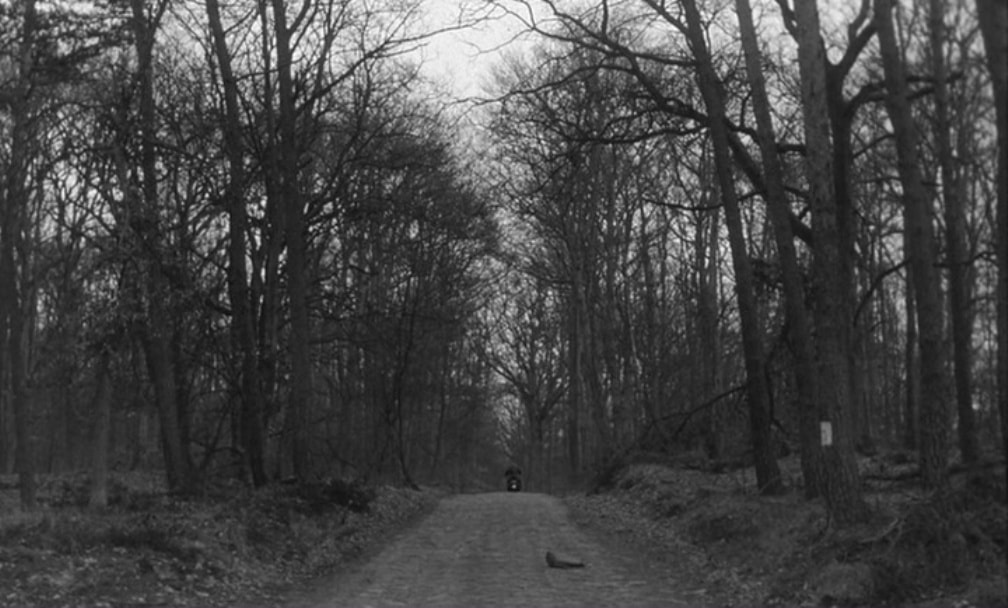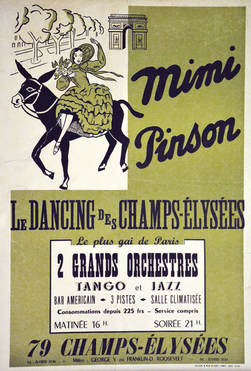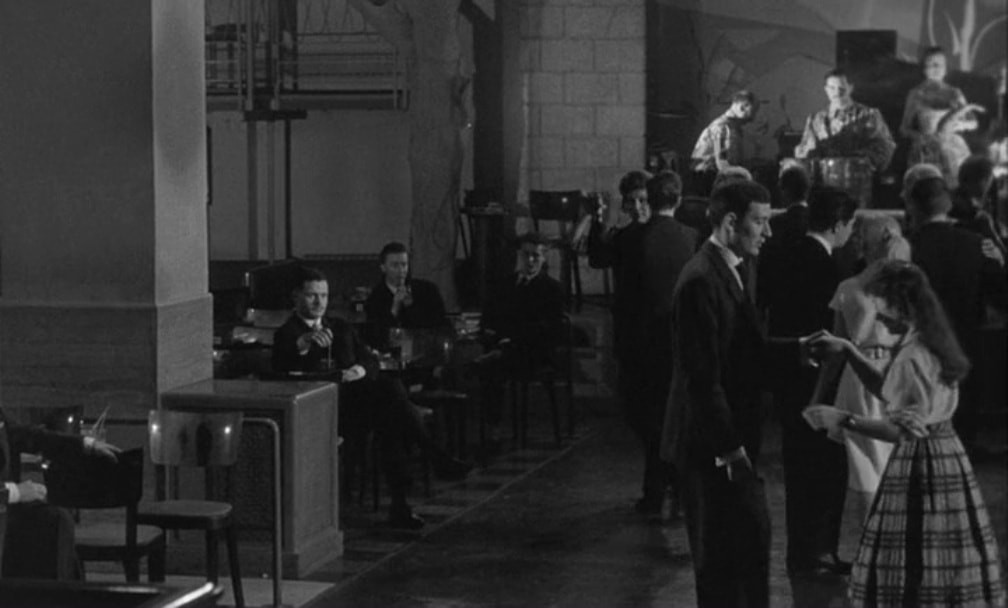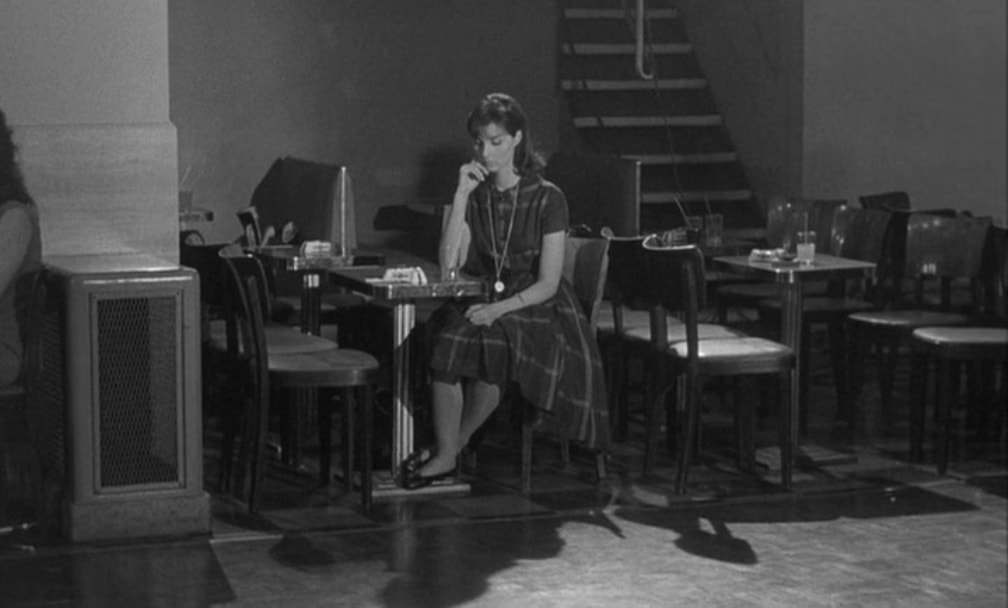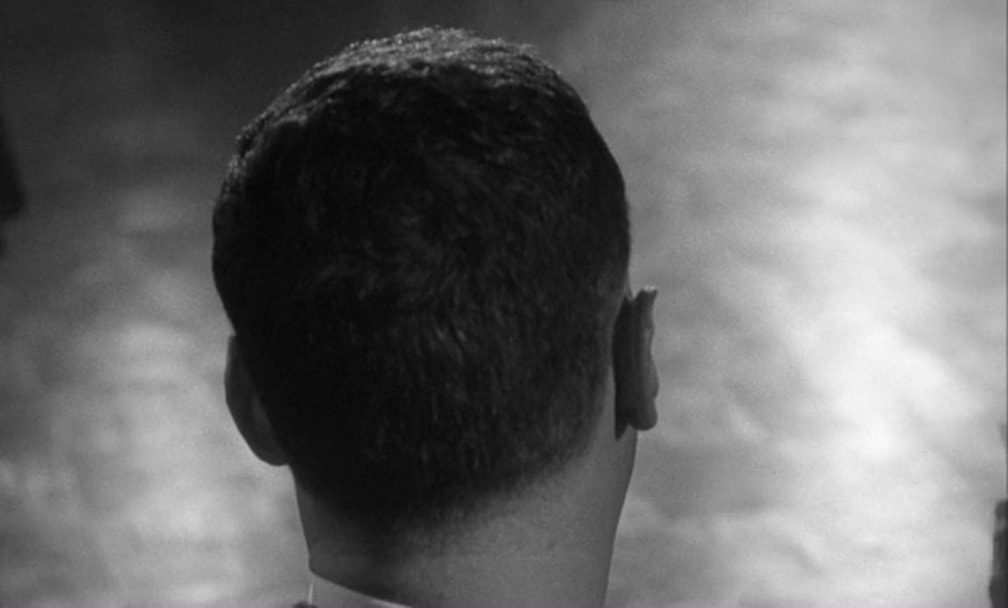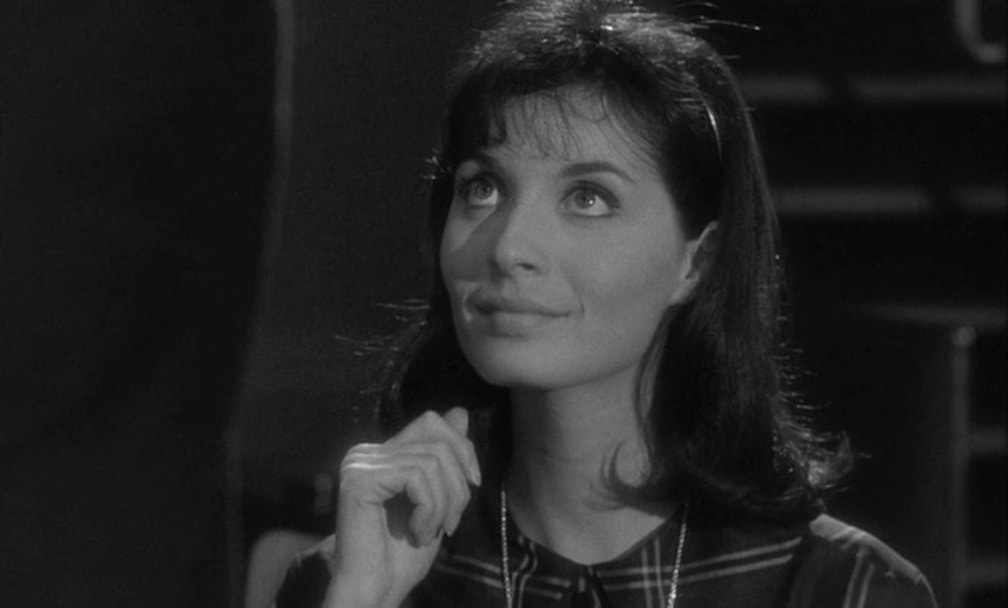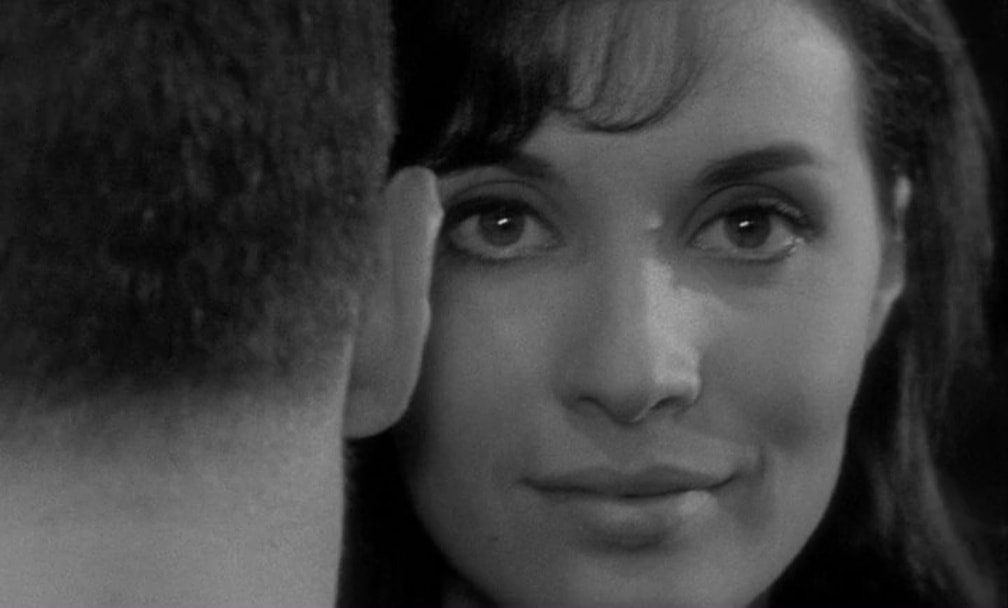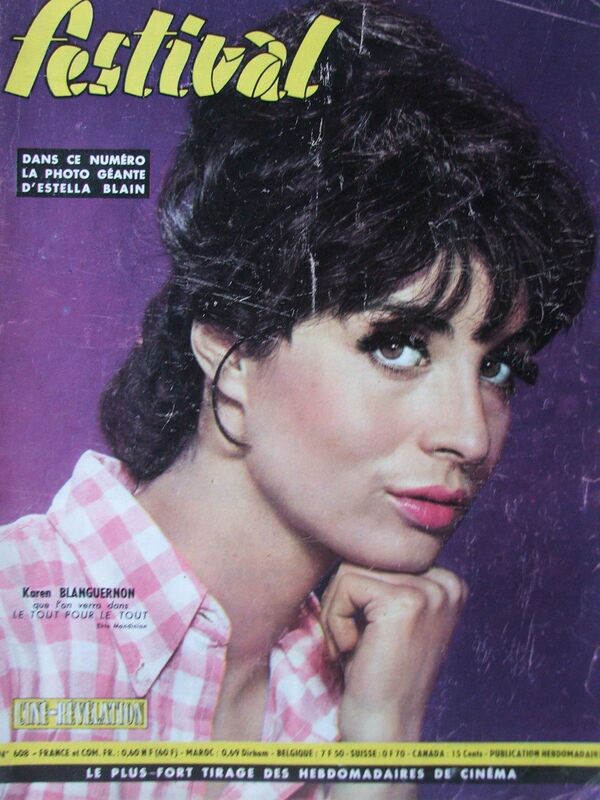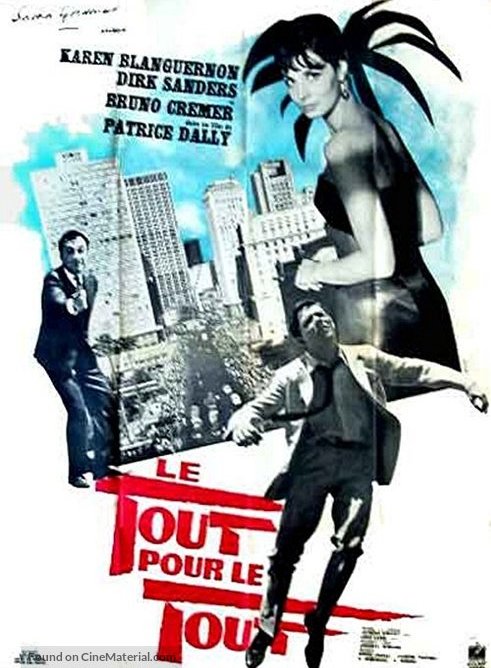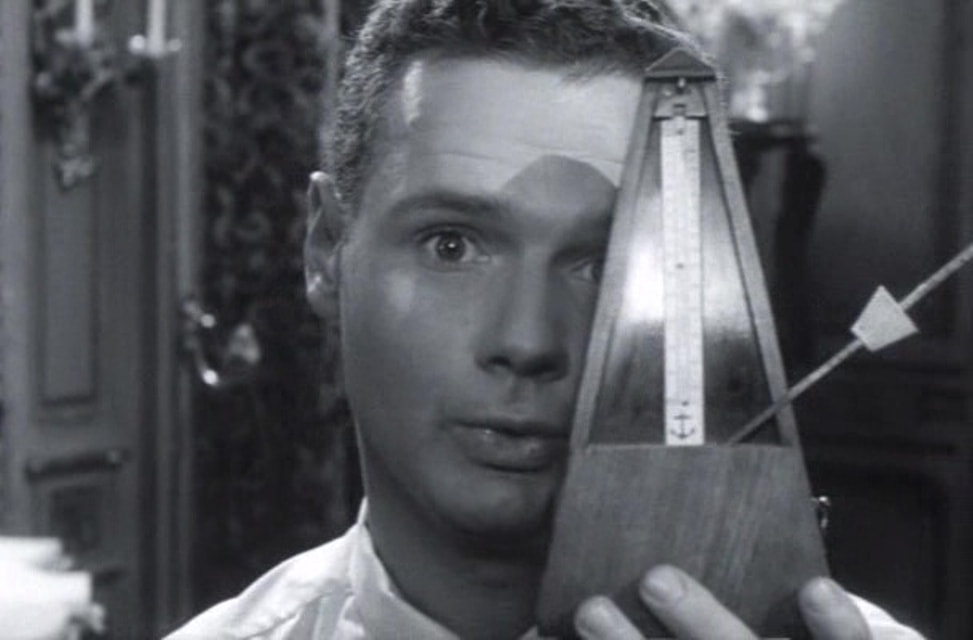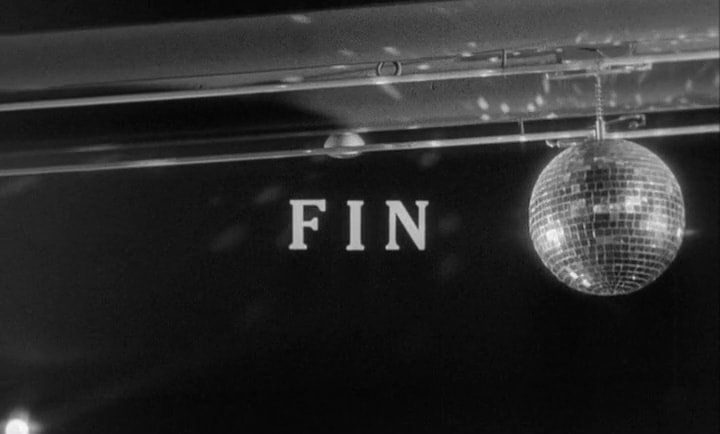some places and things in Les Bonnes Femmes,
sequence by sequence
sequence by sequence
Les Bonnes Femmes (Claude Chabrol 1960) is one of several New Wave films that both filmed on the Champs Elysées and played in cinemas on the Champs Elysées, so that audiences inside could see on the screen what they had just seen outside on the street.
No Champs-Elysées-shot New Wave film, however, achieves the visual splendour of the postcard above, from 1960.
No Champs-Elysées-shot New Wave film, however, achieves the visual splendour of the postcard above, from 1960.
This post identifies the places and some objects in Chabrol's 1960 film Les Bonnes Femmes; it is not an analysis of the film (for that see Wood and Walker's still strong reading in their Chabrol book from 1970, or Catherine Grant's brilliant video essay, here).
If this were an analysis of the film my starting point would be the recurrences sequence-by-sequence of a particular motif, the male-at-female-gaze, that is a dominant principle informing the composition of shots and sequences, and of the film as a whole. I know that this is a very obvious point to make:
If this were an analysis of the film my starting point would be the recurrences sequence-by-sequence of a particular motif, the male-at-female-gaze, that is a dominant principle informing the composition of shots and sequences, and of the film as a whole. I know that this is a very obvious point to make:
I am using the recently issued French restoration which is about 5 minutes longer than earlier available versions. Where there is a significant difference between this version and the widely circulated U.S. Kino dvd edition, based on the initial U.S. release print, I'll point it out, though a detailed comparison of versions, including the Italian Donne facili, will require its own post.
The lines that immediately precede in La Fontaine's fable of the Fish and the Cormorant (Book X) apply more exactly to the victim in the film:
'...on ne doit jamais avoir confiance | En ceux qui sont mangeurs de gens'
(You should never trust those who eat people)
Chabrol's epigraph re-versifies La Fontaine, producing a decasyllable, a Romantic alexandrine and two octosyllables, where La Fontaine had a Classical alexandrine and three octosyllables :
Qu'importe qui vous mange? homme ou loup; toute panse
Me paraît une à cet égard;
Un jour plus tôt, un jour plus tard,
Ce n'est pas grande différence.
The epigraph appears over an image of Dumont's 1836 sculpture the Spirit of Liberty, which tops the Colonne de Juillet in the place de la Bastille. The text of the epigraph is read by a male voice. (I seem to remember reading that the voice is Chabrol's but I can't find that source for the moment.)
(The US edition has no epigraph; the Italian edition translates the epigraph, but it is not read aloud.)
1/ Credit sequence: place de la Bastille
2/ rue Quentin Bauchart, 8e
Three establishing shots:
down the Champs Elysées from behind the Arc de Triomphe; a close-up of the flame on the tomb of the Unknown Soldier, under the Arc de Triomphe, with the Champs Elysées behind; a reverse shot up the Champs Elysées towards the Arc de Triomphe. This last shot then pans towards the rue Quentin Bauchart.
Behind the flame of the Unknown Soldier is a wreath, laid there by the President that same day, November 11:
down the Champs Elysées from behind the Arc de Triomphe; a close-up of the flame on the tomb of the Unknown Soldier, under the Arc de Triomphe, with the Champs Elysées behind; a reverse shot up the Champs Elysées towards the Arc de Triomphe. This last shot then pans towards the rue Quentin Bauchart.
Behind the flame of the Unknown Soldier is a wreath, laid there by the President that same day, November 11:
The stalker first appears in the film at the beginning of this sequence:
From this point, the stalker appears in all but one of the sequences featuring his victim, Jacqueline. His motorcycle is a Harley-Davidson FL Hydra Glide.
Here are some other details first presented in the Grisbi Connection post:
The cinema that the group of friends seem to have just left is the Biarritz, rue Quentin Bauchart, on the corner with the Champs Elysées. A poster can just be made out indicating that the film playing there is Sergei Bondarchuk's Le Destin d'un homme [Sudba cheloveka] (1959).
The strip club from which the predatory men emerge is the Grisbi, at 22 rue Quentin Bauchart. Chabrol returns there briefly for his sketch in the 1962 film Les Sept péchés capitaux, and it was also seen in the 1961 New Wave film Le Nymphettes, by Henri Zaphiratos.
Here are some other details first presented in the Grisbi Connection post:
The cinema that the group of friends seem to have just left is the Biarritz, rue Quentin Bauchart, on the corner with the Champs Elysées. A poster can just be made out indicating that the film playing there is Sergei Bondarchuk's Le Destin d'un homme [Sudba cheloveka] (1959).
The strip club from which the predatory men emerge is the Grisbi, at 22 rue Quentin Bauchart. Chabrol returns there briefly for his sketch in the 1962 film Les Sept péchés capitaux, and it was also seen in the 1961 New Wave film Le Nymphettes, by Henri Zaphiratos.
3/ avenue des Champs Elysées, 8e
Jane and Jacqueline walk down the Champs Elysées, followed by the two predators in a Cadillac. This 1954 Cadillac, Series 62 also featured in Godard's A bout de souffle, two months earlier. I don't know to whom it belonged:
Jane and Jacqueline walk down the Champs Elysées, followed by the two predators in a Cadillac. This 1954 Cadillac, Series 62 also featured in Godard's A bout de souffle, two months earlier. I don't know to whom it belonged:
The two women stop and talk in front of the Raimu cinema, 63 avenue des Champs Elysées. The film playing is The Buccaneer (Cecil B. de Mille/Anthony Quinn 1958). Across the street is the entrance to the Lido de Paris, at no. 78. The car drives off, followed by the stalker on his motorcycle. Between the two is a (for this film) rare jump cut:
4/ first car journey
Mostly from inside the car, but with two shots of the car from outside, one on the place de la Concorde and the other on the quai des Tuileries (probably). In each shot can be glimpsed the stalker on his motorcycle.
In the French edition Albert poses this (untranslatable) riddle:
Mon premier est un oiseau, un joli oiseau des bois. Mon deuxième est ce que dit le fils d’Alexandre Dumas pour qu’il incite les domestiques à regarder l’heure en cachette par le trou de la serrure. Et mon tout c’est une exclamation de quelqu’un qui a perdu un objet de valeur dans une ville d’Eure-et-Loir.
The answer to the riddle is:
J'ai perdu ma montre à Nogent-le-Rotrou.
The explanation is:
geai - père Dumas, montre à nos gens l'heure au trou.
It is understandable why this was cut from the version for US audiences.
Mostly from inside the car, but with two shots of the car from outside, one on the place de la Concorde and the other on the quai des Tuileries (probably). In each shot can be glimpsed the stalker on his motorcycle.
In the French edition Albert poses this (untranslatable) riddle:
Mon premier est un oiseau, un joli oiseau des bois. Mon deuxième est ce que dit le fils d’Alexandre Dumas pour qu’il incite les domestiques à regarder l’heure en cachette par le trou de la serrure. Et mon tout c’est une exclamation de quelqu’un qui a perdu un objet de valeur dans une ville d’Eure-et-Loir.
The answer to the riddle is:
J'ai perdu ma montre à Nogent-le-Rotrou.
The explanation is:
geai - père Dumas, montre à nos gens l'heure au trou.
It is understandable why this was cut from the version for US audiences.
5/ Restaurant Du Roy Gourmet, 4 place des Victoires, 1e
6/ La Villa, a nightclub at 27 rue Bréa, 6e
This location is discussed at length in section 2 of The Grisbi Connection, here.
This location is discussed at length in section 2 of The Grisbi Connection, here.
The striptease artiste is the very famous Dolly Bell, star of the Crazy Horse. She also does her act in Jean-Daniel Pollet's short film Gala (1961):
7/ second car journey
Jacqueline is dropped off somewhere on the rue de Picpus, 12e (at the corner with the avenue de Saint Mandé, I think).
Jane continues in the car to Albert's apartment, which is on a wide residential street, perhaps in Neuilly (perhaps the rue des Dames Augustines, where Chabrol lived, and which appeared in Les Cousins and Rivette's Paris nous appartient). If this is Neuilly then it is the other side of Paris from where they dropped off Jacqueline.
Jacqueline is dropped off somewhere on the rue de Picpus, 12e (at the corner with the avenue de Saint Mandé, I think).
Jane continues in the car to Albert's apartment, which is on a wide residential street, perhaps in Neuilly (perhaps the rue des Dames Augustines, where Chabrol lived, and which appeared in Les Cousins and Rivette's Paris nous appartient). If this is Neuilly then it is the other side of Paris from where they dropped off Jacqueline.
8/ Albert's apartment
'Je ne peux pas en ce moment.' This remark by Jane indicating that she cannot have sex because she is on her period ('I can't at the moment') was cut from the U.S. print, as was Marcel's reply: 'I don't care'.
The transition from Albert's apartment that night to Jane's apartment the next morning is made across two matching close-ups of doors:
'Je ne peux pas en ce moment.' This remark by Jane indicating that she cannot have sex because she is on her period ('I can't at the moment') was cut from the U.S. print, as was Marcel's reply: 'I don't care'.
The transition from Albert's apartment that night to Jane's apartment the next morning is made across two matching close-ups of doors:
9/ Jane's apartment
By the mirror Jane has a photograph of Jean-Claude Brialy and above her bed a photograph of Gérard Blain: these were Bernadette Lafont's co-stars in Chabrol's Le Beau Serge (1958); Blain was Lafont's partner.
Ginette, who is staying with Jane, has a photograph of someone who looks like Blaise Cendrars next to her bed.
By the mirror Jane has a photograph of Jean-Claude Brialy and above her bed a photograph of Gérard Blain: these were Bernadette Lafont's co-stars in Chabrol's Le Beau Serge (1958); Blain was Lafont's partner.
Ginette, who is staying with Jane, has a photograph of someone who looks like Blaise Cendrars next to her bed.
10/ the métro - ligne 5 north to Bastille
|
The station where Jane and Ginette take the métro looks like Place d'Italie. The métro crosses the Seine by the viaduc d'Austerlitz and they get off at Bastille. Behind them is the film's photographer André Dino, in the first of his two appearances. See here for details of Dino's cameos in several of the films he worked on. |
Jane and Ginette walk from the métro station to their place of work, an electrical goods shop at 72 boulevard Beaumarchais. The shop is called Belin but in fact was called Fabbro, selling plumbing materials and also household goods.
The passage of time is marked through the day, from 8.59 a.m to 7 p.m.:
|
Jacqueline is summoned to the owner's office to be chastised for arriving late on her first day of work. He offers her a flower and sings a line from Bizet's Carmen, Don José's aria 'La fleur que tu m'avais jetée'. He has a poster for a contemporary production of Carmen at the Opéra de Paris, with Jane Rhodes and Albert Lance (see and listen here). The reference to Carmen anticipates the strangling of Jacqueline by her stalker. |
Pierre Bertin is a veteran actor with a career stretching back more than forty years. He had minor rôles in many films, some notable, such as Clouzot's Le Corbeau (1943), Cocteau's Orphée (1950) and Renoir's Elena et les hommes (1956):
His declamatory manner as Belin in Les Bonnes Femmes is en echo of the speech he gives as the sous-préfet in Le Corbeau.
A customer is leaving, seen only from the back. This looks like Jean Douchet, who had cameos in Les 400 coups and A bout de souffle and would later appear as a customer in Eric Rohmer's 'Place de l'Etoile', from Paris vu par...:
|
Douchet is the first of only two customers seen in the shop through the day.
The shop sells records, among which can be seen: 'Surprise Party' by Earl Cadillac; an LP of settings of Ronsard; an EP by Paul Anka (the one that includes 'Pity Pity', a song heard on the radio in A bout de souffle). Ginette studies the back of an LP from the 'Concerts du Domaine Musical', Pierre Boulez's concert initiative that began in 1954. This record features music by Gabrieli, Stravinsky, Henze and Messaien, and a painting by Miro on the cover. Rita reads aloud from an issue of Elle (November 1959) with Sophia Loren on the cover. Louis, a poet, comes in to recite one of his poems for the women (this was cut from the U.S. print). Credited as Jean Barclay, this is Baron Jean Barclay Dupuy De Latour: |
He was not a real baron, nor was he the rightful heir to the throne of Scotland, as he claimed.
Louis has written two poems, 'La Prière de Priape' and 'Sonnet à Saint Pierre'. He recites the quatrains of the latter:
Lorsque Saint Pierre, debout sur son seuil de nuées,
Contemple notre fange au fond de la trouée
Que demanderais-je, apôtre, à quel saint me vouer,
Et de toi, pêcheur d’âmes, ne saurais-je me louer?
Mais, lorsque de ton Dieu tu te fais le flambeau,
Je clame pour le mien du fond de mon tombeau.
Je ne crie qu’un seul mot, face à la boue hostile,
Enfant, tout est un, un est tout, ainsi soit-il.
Ginette puts on a record of organ music to accompany Louis's recital. The label is Columbia but I don't recognise the piece.
We learn of some kind of financial dealings between Louis and Madame Louise, a suggestion of intrigue that counter-balances the tedium of working in this shop.
Lorsque Saint Pierre, debout sur son seuil de nuées,
Contemple notre fange au fond de la trouée
Que demanderais-je, apôtre, à quel saint me vouer,
Et de toi, pêcheur d’âmes, ne saurais-je me louer?
Mais, lorsque de ton Dieu tu te fais le flambeau,
Je clame pour le mien du fond de mon tombeau.
Je ne crie qu’un seul mot, face à la boue hostile,
Enfant, tout est un, un est tout, ainsi soit-il.
Ginette puts on a record of organ music to accompany Louis's recital. The label is Columbia but I don't recognise the piece.
We learn of some kind of financial dealings between Louis and Madame Louise, a suggestion of intrigue that counter-balances the tedium of working in this shop.
The delivery man Nounours calls; the stalker is outside in the street.
Waiting for lunchtime. Then the street outside the shop, with a view down the rue Scarron towards the rue Amelot. The stalker passes on his motorcycle, without looking.
15/ lunchtime: restaurant Le Bastille
The women eat at a restaurant on the place de la Bastille (Le Bastille, 6 boulevard Beaumarchais).
In the restaurant we see André Dino again, who had been on the métro that morning:
The women eat at a restaurant on the place de la Bastille (Le Bastille, 6 boulevard Beaumarchais).
In the restaurant we see André Dino again, who had been on the métro that morning:
The centre of this sequence is the meeting between Rita and her fiancé Henri with Henri's parents:
|
Henri is anxious that Rita appear cultured and he recites at high speed a dictionary-style biography of Michelangelo that she is supposed to remember. Here, right, from a 1908 Petit Larousse illustré, is almost exactly the text Henri recites.
Henri calls Rita by her full name, Marguerite. He is played by Sacha Briquet, better-known as a stage actor but recurrent in small rôles in '50s French cinema.
|
In Un témoin dans la ville (Edouard Molinaro 1959) he plays a drunk leaving a Pigalle strip club. In Chabrol's next film, Les Godelureaux (1961) he plays a fiancé who is also called Henri:
Gabriel Gobin, who plays Henri's father, is another actor familiar from pre-New Wave films, beginning as a barman in Clouzot's Quai des Orfèvres (1947). Sacha Briquet also played a barman in Mademoiselle et son gang (Jean Boyer 1957):
Henri has told Rita that his father always orders a Mystère, a desert based on ice cream and meringue. The scene ends on the father's consternation when the waitress announces that 'Il n'y a pas de Mystère'. 'There's no mystery' may be meant as a commentary on the film:
In Le Bonheur (1965) Varda seems to have enjoyed the name of this dessert, combining the colours of a notice in a café window with the colours of the café and its customers:
16/ le Jardin des Plantes, 5e
The visit to the ménagerie of the Jardin des Plantes looks at ten different types of animals: raccoons, a hyena, baboons, a hyena, a kagou, fennec foxes, bats, snakes, leopards, lions and a tiger:
The visit to the ménagerie of the Jardin des Plantes looks at ten different types of animals: raccoons, a hyena, baboons, a hyena, a kagou, fennec foxes, bats, snakes, leopards, lions and a tiger:
The tiger roars and frightens the group who have been teasing it, and in the French edit the sequence ends with a close-up of the tiger then a close-up of the stalker, who has been observing them all the while they have been at the zoo:
The close-up of the stalker was cut from the Italian edition.
The stalker goes past, turning to look; Nounours talks to Jacqueline outside, asking her to go out with him.
Ginette is summoned to Belin's office. Then Jacqueline is summoned and Belin molests her, before Madame Louise burst in to say that the stalker is there.
The foregrounding of the male-at-female-gaze through point-of-view is here quite impressive. The stalker is looking into the shop, wearing tinted glasses, and we have a p-o-v from behind the glasses as he removes them:
19/ a motorcycle ride through Paris
The stalker rides through Paris in a sequence of nine views. This is most topographically coherent assemblage of views of the grands boulevards in a New Wave film (see here for more New Wave boulevards). I can't identify every one of the views in this sequence, but those I can appear to be in topographical order. The first two are the place de la Bastille, the fourth is the boulevard Bonne Nouvelle, the fifth is the boulevard Poissonnière, the eighth is the junction of boulevards Montmartre, des Italiens and Haussmann, just before the carrefour Drouot, and the ninth is on the boulevard Haussmann, looking back at the boulevard Montmartre:
The stalker rides through Paris in a sequence of nine views. This is most topographically coherent assemblage of views of the grands boulevards in a New Wave film (see here for more New Wave boulevards). I can't identify every one of the views in this sequence, but those I can appear to be in topographical order. The first two are the place de la Bastille, the fourth is the boulevard Bonne Nouvelle, the fifth is the boulevard Poissonnière, the eighth is the junction of boulevards Montmartre, des Italiens and Haussmann, just before the carrefour Drouot, and the ninth is on the boulevard Haussmann, looking back at the boulevard Montmartre:
Ave Ninchi, who plays Madame Louise, was a regular in post-war Italian cinema. She had already filmed in Paris in Luciano Emmer's Parigi è sempre Parigi (1951). Here, alongside Marcello Mastroianni, she has just arrived at the Gare de Lyon:
Mme Louise helps Ginette with her Italian pronunciation, so we know she knows Ginette's secret.
Mme Louise's shows Jacqueline her fetish, a handkerchief stained with blood, and tells its story:
'You're too young to have known Weidmann. He was a sadist, who assassinated women and robbed them. On the 16th of June, 1939, at six in the morning, he was guillotined at Versailles. I was just a young girl, he was handsome, pale. Hundreds of people watched the execution, there were even people up in the trees. When the blade came down, the body jolted. Some women screamed, but I rushed forward to soak my handkerchief in the blood.'
It is documented that people in the crowd did soak their handkerchiefs in Weidmann's blood, as mementos. We can assume that Madame Louise is somewhere in the photograph below:
21/ montage of streets and shops: 18.15 to 18.50
I cannot locate most of these shots. The first of them looks like it might be the Boulevard Haussmann, looking towards the Galeries Lafayette. The next three look likethe Magasins Réunis on the Place de la République. The second-to-last is the Monoprix on the Rue du Faubourg Saint Antoine, by Ledru-Rollin métro station. The last is the clock tower of the Gare de Lyon.
22/ a prison cell
Jane's boyfriend André (Claude Berri) and another soldier (Charles Bitsch, assistant director on the film) are in an army prison cell. André describes how he can tell the time from the shape of the shadow on the wall, except that after 18.00 the lights in the prison are turned on, so the shadow no longer changes:
This scene was cut from the U.S. edition.
23/ montage of time: 18.55 onwards
The stalker asks a passing woman for time - this is the first time he is heard to speak.
Marcel's office; Henri's shop; Belin's office...
The stalker asks a passing woman for time - this is the first time he is heard to speak.
Marcel's office; Henri's shop; Belin's office...
24/ shop: 18.58 onwards, closing up and street outside
25/ montage of Paris c.19.00 on a Saturday evening
The first of these views shows the café-restaurant Bonnet opposite the Gare de Lyon (also seen in the credits of Chabrol's Les Cousins, 1958). The fourth looks like the inside of the Gare de Lyon. The man with the double bass looks to me like Claude Chabrol, mimicking Hitchcock's cameo with a double bass in Strangers On a Train.
26/ Concert Pacra, 20.30-22.15
The Concert Pacra was a very famous music hall on the Boulevard Beaumarchais, very near where the women work.
Characters tell the time, not clocks: Rita, Jacqueline and Jane are to meet Henri at 20.30 in front of the theatre. It is 22.15 when they leave.
Ginette performs as Italian singer 'Angela Torini'.
Two more of the acts are actors pretending to be performers: Miguel Santos, singing 'Toi, toi, toi...Pulcinella' and the bandleader Charlie Bostock (Dominique Zardi). The last performers we see, the 'Rody Renatal Trio', seem to be a genuine act, but I can't find any information about them., anywhere:
Characters tell the time, not clocks: Rita, Jacqueline and Jane are to meet Henri at 20.30 in front of the theatre. It is 22.15 when they leave.
Ginette performs as Italian singer 'Angela Torini'.
Two more of the acts are actors pretending to be performers: Miguel Santos, singing 'Toi, toi, toi...Pulcinella' and the bandleader Charlie Bostock (Dominique Zardi). The last performers we see, the 'Rody Renatal Trio', seem to be a genuine act, but I can't find any information about them., anywhere:
The stage manager (Philippe Castelli) speaks the line that gives the film its title: 'Ah les bonnes femmes':
According to the sign by the door, Ginette shares a dressing room with a performer called Polly Cartoon. The actress we see is Italian starlet Rossana Rossanigo:
27/ Concert Pacra exit
28/ the swimming pool
This is the Piscine Marius Jacotot in Puteaux, a suburb west of Paris.
The women have met up with the some of the friends they were with at the beginning of the film:
Claude Chabrol is in the pool, with his glasses on:
29/ country road
This is likely to be on the way to Ermenonville, but I haven't matched any of the buildings seen to buildings still extant.
30/ restaurant La Croix d'or, Ermenonville
The restaurant where Ernest and Jacqueline have Sunday lunch before he kills her that afternoon belonged to the parents of Charles Bitsch, the film's assistant director. See here for more on this location in New Wave films.
31/ the woods by water
This seems likely to be somewhere near Ermenonville, where there are several lakes, but I haven't yet made a direct identification.
The group of schoolboys who pass are singing 'Auprès de ma blonde...', a traditional French song that evokes the joys of sleeping beside 'ma blonde'.
One of the boys runs towards the motorcycle and may well have noted the number plate, a suggestion that the killer might be identified and caught.
One of the boys runs towards the motorcycle and may well have noted the number plate, a suggestion that the killer might be identified and caught.
|
32/ coda: le dancing Mimi Pinson
The setting of the short (3 minutes 30 seconds) sequence that closes the film is a famous dancehall on the Champs Elysées, with frontage on the rue Quentin Bacquart, exactly where the first action of the film took place, next to the Grisbi club (see here for more about this location). There are two pieces of music played in this sequence. The first is a cha-cha-cha played by the band we see, Denis Tuveri and his orchestra; this tune doesn't appear on the soundtrack EP of the film. The second is the 'Valse pour les bonnes femmes', which is played by Jacques Météhen and his orchestra, as credited on the EP (the soundtrack can be sampled here). |
Including the nine-piece band, there are at least forty people in this sequence, none of whom has appeared before in the film (I think). The action, such as it is, shows a man on one side of the dance floor cross to the other side and ask a woman to dance:
The film ends with them dancing:
The woman is Karen Blanguernon, who two years later would star in a crime drama called Le Tout pour le tout:
The man is André Jocelyn, who had starred for Chabrol in A double tour (1959) and would be his Hamlet in Ophélia (1963). This is Jocelyn in Chabrol's Les Godelureaux (1961):
The Cast
Chabrol liked to use actors he had already worked with, both in major rôles and as bit-parts or extras. If only Bernadette Lafont and André Dino had been in Le Beau Serge (1958), at least six cast members of Les Bonnes Femmes were in Les Cousins (Stéphane Audran, Jean-Louis Maury, Jean-Marie Arnoux, Robert Barre, Jacques Deschamps, André Jocelyn). Only four had been in A double tour (Bernadette Lafont, André Jocelyn, Mario David and André Dino), but at least fourteen would be in Chabrol's next film Les Godelureaux (Bernadette Lafont, André Jocelyn, Mario David, Jean-Louis Maury, Albert Dinan, Sacha Briquet, France Asselin, Serge Bento, Henri Attal, Dominique Zardi, Philippe Castelli, Charles Bayard, Charles Belmont, Liliane David).
Chabrol liked to use actors he had already worked with, both in major rôles and as bit-parts or extras. If only Bernadette Lafont and André Dino had been in Le Beau Serge (1958), at least six cast members of Les Bonnes Femmes were in Les Cousins (Stéphane Audran, Jean-Louis Maury, Jean-Marie Arnoux, Robert Barre, Jacques Deschamps, André Jocelyn). Only four had been in A double tour (Bernadette Lafont, André Jocelyn, Mario David and André Dino), but at least fourteen would be in Chabrol's next film Les Godelureaux (Bernadette Lafont, André Jocelyn, Mario David, Jean-Louis Maury, Albert Dinan, Sacha Briquet, France Asselin, Serge Bento, Henri Attal, Dominique Zardi, Philippe Castelli, Charles Bayard, Charles Belmont, Liliane David).
